Rural birth units to shut
Richard Rennie NEWS Health
WAIKATO rural mothers face the risk that their babies will be “born on the side of the road” after the planned closure of two birthing centres serving large areas.
Late last month staff and mothers-to-be at Birthcare Huntly in north Waikato and at Waihi Lifecare birthing unit in eastern Waikato learnt the centres will be shut before year’s end. This leaves some women who are due to give birth facing at least a two-hour trip to the next nearest centre, Waikato Hospital in Hamilton.
Bernie Miers, lead maternity carer at Birthcare Huntly, has hit back at claims made by owner Evolution Healthcare that the
closure is due to staffing shortages and a declining number of parents and whānau accessing the services.
The operators claimed that the unit had seen only 40 parents use the facility so far this year – and that only six women went into labour.
“We have pulled 12 months of numbers and they do not match up with that,” Miers said.

“They said only six went into labour and 40 used the facility. I have 40 births recorded here and another 20 transferred from here to Waikato Hospital, and 180 parent days spent here from October 1 last year to now,” she said.

She acknowledged that a shortage of midwives is a national issue but said it is not one that applies to Huntly.
Continued page 3
Research and design of leadership for tomorrow.
Rural Leaders in partnership with the Food and Fibre Centre of Vocational Excellence, are conducting research and design for a sectorwide leadership development ecosystem. Thanks to your help, the first stage is complete.
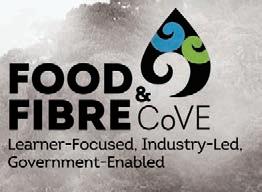
To read the latest report head to Ruralleaders.co.nz/leadership-model



Twenty-five push-ups a day during lockdown has inspired a get-together for mates.
NEWS 7
Rural support revs up National hopes
Provincial electorates are predicted to turn solidly blue this general election and sweep National and its coalition partners into power on Saturday.
POLITICS 4, 16-17
Farms sales take a slide as multiple factors continue to feed into market uncertainty.
NEWS 8
Strategic development for leadership today.
Todd White makes a case for more science, data modelling and software in farming.

OPINION 21
Rural Leaders deliver leadership development designed to lift our sector’s leader capability. Nuffield, Value Chain Innovation, Engage and Kellogg help deliver world-class leaders today.
Kellogg Programme One 2024 applications are open until 22 October. To apply head to Ruralleaders.co.nz/kellogg

1
‘There’ll be babies born on roadsides’
Huntly midwife Bernie Miers, pictured here with Waingaro newborn Peter, says rural women in Waikato will be hit hard by the closure of the Birthcare Huntly centre.
Vol 21 No 39, October 9, 2023 View online at farmersweekly.co.nz $4.95 Incl GST
Advertise Get in touch
EDITORIAL
Bryan Gibson | 06 323 1519
Managing Editor bryan.gibson@agrihq.co.nz
Craig Page | 03 470 2469
Deputy Editor craig.page@agrihq.co.nz
Claire Robertson
Sub-Editor claire.robertson@agrihq.co.nz
Neal Wallace | 03 474 9240

Journalist neal.wallace@agrihq.co.nz
Gerald Piddock | 027 486 8346
Journalist gerald.piddock@agrihq.co.nz
Annette Scott | 021 908 400

Journalist annette.scott@agrihq.co.nz
Hugh Stringleman | 09 432 8594

Journalist hugh.stringleman@agrihq.co.nz
Richard Rennie | 027 475 4256
Journalist richard.rennie@agrihq.co.nz
Nigel Stirling | 021 136 5570
Journalist nigel.g.stirling@gmail.com
PRODUCTION
Lana Kieselbach | 027 739 4295 production@agrihq.co.nz
ADVERTISING MATERIAL
Supply to: adcopy@agrihq.co.nz
SUBSCRIPTIONS
0800 85 25 80 subs@agrihq.co.nz
PRINTER
Printed by Stuff Ltd
Delivered by Reach Media Ltd
our
SALES CONTACTS
Andy Whitson | 027 626 2269 Sales & Marketing Manager andy.whitson@agrihq.co.nz
Andrew Fraser | 027 706 7877 Auckland/Northland Partnership Manager andrew.fraser@agrihq.co.nz
Jody Anderson | 027 474 6094 Waikato/Bay of Plenty Partnership Manager jody.anderson@agrihq.co.nz
Palak Arora | 027 474 6095 Lower North Island Partnership Manager palak.arora@agrihq.co.nz
Omid Rafyee | 027 474 6091 South Island Partnership Manager omid.rafyee@agrihq.co.nz
Debbie Brown | 06 323 0765 Marketplace Partnership Manager classifieds@agrihq.co.nz
Andrea Mansfield | 027 602 4925 National Livestock Manager livestock@agrihq.co.nz
Real Estate | 0800 85 25 80 realestate@agrihq.co.nz
Word Only Advertising | 0800 85 25 80 Marketplace wordads@agrihq.co.nz
PUBLISHERS
Dean and Cushla Williamson Phone: 027 323 9407 dean.williamson@agrihq.co.nz cushla.williamson@agrihq.co.nz
Farmers Weekly is Published by AgriHQ PO Box 529, Feilding 4740, New Zealand Phone: 0800 85 25 80 Website: www.farmersweekly.co.nz
ISSN 2463-6002 (Print) ISSN 2463-6010 (Online)
New Zealand’s most trusted source of agricultural news and information
News in brief
New partnership




Fonterra has joined the South Island Dairy Demonstration Centre partnership.
Formed in 2001, SIDDC is a partnership between Lincoln University, DairyNZ, Ravensdown, LIC, AgResearch, dairy farmers through SIDE and now Fonterra. The partnership aims to lead and demonstrate the very best sustainable dairy production systems. SIDDC chair Professor Grant Edwards said Fonterra’s participation will have significant and far-reaching benefits.
Top steak
Alliance Group’s Pure South Handpicked 55 Day Aged Beef has won top honours in the World Steak Challenge.
The beef was awarded two gold medals and two silver medals at the competition in the Netherlands. The co-operative won gold medals for ribeye and fillet steaks processed at the company’s Pukeuri plant near Oamaru. Ribeye and fillet steaks processed at the Mataura plant in Southland won silver medals.
Northern harvest
Zespri’s kiwifruit harvest from the northern hemisphere is set to exceed previous sales volumes.
Zespri is expecting to sell around 29 million trays, or just over 100,000t of kiwifruit from orchards throughout France, Italy, Greece, Korea and Japan. This compares to 24 million trays or 88,000t last season.
Fonterra election
Fonterra directors Brent Goldsack and Cathy Quinn are poised to be re-elected this year.
CURRENCY: ASB rural economist Nathaniel Keall says 12-month lows for the NZ dollar should continue to give farmgate revenue a minimal boost.

Voting papers will be sent to shareholders from Monday, October 16. Electionz returning officer Warwick Lampp said Goldsack and Quinn, both incumbent directors, have not been challenged.
“As this is an uncontested director election, candidates must gain more than 50% support of votes cast to be elected to the board,” Lampp said.
Back in 1860, exporting meat to the other side of the world seemed about as easy as nailing gravy to the ceiling. But a few determined kiwis took the bull by the horns and now our grass-fed beef and lamb is sought-after all around the globe.
At AFFCO, we see the same pioneering spirit alive and well in farmers today. We’re playing our part too – exploring every opportunity to take New Zealand’s finest farm-raised products to the world.
WWW.AFFCO.CO.NZ 0800 233 2669
WAVE200472 AFFJ200472 NZ Farmers Weekly Strip Ad FA.indd 1 24/08/22 3:22 PM 2
pioneering spirit tells us nothing’s out of reach
Contents
STORY P15 News . . . . . . . . . . . . . . . . 1-19 Opinion . . . . . . . . . . . 20-23 People . . . . . . . . . . . . . . . . 24 Technology . . . . . . . . . . . . 25 Federated Farmers . 26-29 Real Estate . . . . . . . . 30-44 Marketplace . . . . . . . 45-46 Livestock . . . . . . . . . . 46-49 Markets . . . . . . . . . . . 50-55 Weather . . . . . . . . . . . . . . . 56
‘Fewer births’ cited for Waikato unit closures
Richard Rennie NEWS Health

TE WHATU Ora says the two rural Waikato birthing centres slated for closure have reported declines in the number of births, with pregnant women choosing to access Waikato Hospital or other services instead.
Lisa Gestro, executive director of strategy at Te Whatu Ora Waikato, told Farmers Weekly in a written statement that the funding provided for the facilities was commercially sensitive.
However, she confirmed there has been no recent change to the funding model for the services.
Waikato Hospital supported 3800 births last year, she said, and the Waihi and Huntly facilities reported 1-2 births a week in total.
She said staff at Te Whatu Ora had responded to requests by Waihi Lifecare for funding requests for more midwives.
“Waihi submitted a proposal which was not accepted.”
She said the Waihi proposal had
Continued from page 1
“We are fully catering for over 90% of the women needing a midwife here with our team of five. And the staff here at the unit cover 24-hour care for postnatal mums and they are fully staffed also.”
She maintains the real reason for the closure is lack of financing from Te Whatu Ora Health NZ to Evolution.
“Basically, the funding has not increased to meet inflation costs.”
The Waikato region recorded a birth rate of 67.4 births per 1000 women in 2017, the latest dataset available. That was 10% above the
broader system implications for workforce resources, by prompting staff to relocate, and this was not supported.
She confirmed that, following the closures, primary birthing facilities will remain available in Thames and Bethlehem in Tauranga for Waihi mothersto-be, and Hamilton for Huntly mothers-to-be.
But the closure of the two Waikato birthing units has Hauora Taiwhenua, the Rural Health Network, concerned for the future of other rural health units throughout New Zealand.

Network chair and Whangamatā GP Dr Fiona Bolden told Farmers Weekly the closures leave women throughout the region far too distant from their next-best option, and many are opting not to seek adequate neonatal care as a result.
“For GP care the standard time to access care should be no more than one hour. If you are giving birth one hour can be a long time.”
The closure of the two centres will leave many rural communities at least two hours from either
national average, and Miers said there is no shortage of births. “Birthcare has been having to cover the costs from their own funds, they are just not being paid enough to maintain it.”
Thames or Hamilton hospitals.
“Working in Whangamatā I see many women who do not have access to natal care and have a long way to drive to deliver. We will probably see an increase in home births, which is fine if you have backup, but not if you don’t.”
She is also advocating for a change to how rural midwives are paid.
For GP care the standard time to access care should be no more than one hour. If you are giving birth one hour can be a long time.
“They are paid on a per-mother basis and of course populations are lower and they have much further to travel. In Otago there is a model that recognises this and pays midwives a set amount, regardless of how many mothers they have.”
stretching across to the west coast, and into eastern Waikato in districts experiencing significant population growth.
Communities such as Ohinewai, Te Kauwhata and Huntly are all expanding, with subdivisions drawing in younger families thanks to cheaper housing opportunities.
has struggled to gain funding for five new midwives since it lost them from its team of eight over covid-19.
She said there are numerous rural communities throughout north Waikato as far as Pukekohe affected by the decision –
“I believe we will be seeing babies being born on the side of the road. It is also highly unlikely we will see resources expanded in Hamilton to meet the demand that will come from closing Huntly,” she said.
Across the region in Waihi, Waihi Lifecare maternity team leader Ashley McKay said the Waihi unit
“We do not employ midwives, but the unit is used by them. A year ago, we reached out to Te Whatu Ora for funding. That request was simply ignored, and they have still not responded, other than to accept the fact we are going to have to cease operations.”
The impact upon local mothersto-be will be significant, given the centre’s catchment, which extends northwards along the east coast of Coromandel.
The centre has become even
more vital for those communities with the closure of the KopuHikuai highway, effectively isolating them from Thames Hospital.
McKay said the issue is also complicated by Waihi being in the old Waikato District Health Board catchment, and Tauranga Hospital is not prepared to accept women from outside its old region.
“We are supposed to be all one now, but that’s not the case.”
Both women said there is strong interest in their communities in keeping the centres open, with active campaigns and behind-thescenes discussions taking place.
The Gold Standard
For 36 years, Wairere has been the number one provider of rams in New Zealand.
Others have followed our lead in innovation and investment in the future of sheep genetics.
Since 1966 all hoggets at Wairere have been mated, and lambed unshepherded on big hill country.
Since 2005 no mixed age ewes have been drenched at Wairere, two tooths three times.
Wairere sheep set the benchmark in value for both breeding and store stock.

Wairere Romney • Nudie • Challenger (FE resilient)
• Multiplier (composite)
• Dominator (terminal)
• Tufguy (Texel/Romney)
• SmartSheep (halfbred)
www.wairererams.co.nz | 0800 924 7373
3 FARMERS WEEKLY – farmersweekly.co.nz – October 9, 2023 News 3
Basically, the funding has not increased to meet inflation costs.
Bernie Miers Midwife
Dr Fiona Bolden Hauora Taiwhenua – the Rural Health Network
REDUCED: Waikato Hospital supported 3800 births last year, while Waihi and Huntly facilities (above) reported 1-2 births a week in total, says Te Whata Ora.
Rural support revving up National hopes
Hugh Stringleman POLITICS Analysis


PROVINCIAL electorates are predicted to turn solidly blue this general election and sweep National into power with coalition partners the ACT Party and possibly New Zealand First.
Richard Harman, editor of the Politik website, expects the swing to National will be stronger in the provinces than in the big cities.
“It is hard to find a farmer or a rural person that admits to supporting Labour.
“The polls suggest up to 15% swing to National and it could be higher in rural and regional electorates,” he said.
The National Party has support in the high 30s according to the latest polls, which would deliver 46 seats, 13 more than it has currently.
Twelve is the number of rural and regional electorates Labour took from National in the red landslide of 2020.
“All the action in changing of parties is going to be in the provinces,” Harman said.
Provincial voters would be turning back the clock to 2017 and
before, when National could rely upon a near sweep of rural and regional representation.
All that Labour won in 2017 outside of the biggest urban centres were West Coast-Tasman (Damien O’Connor), Palmerston North (Iain Lees-Galloway) and Napier (Stuart Nash).
NZ First leader Winston Peters had previously lost the Northland seat to National’s Matt King in a 2015 by-election.
 Richard Harman Politik
Richard Harman Politik
National under Bill English reduced its count of MPs by four from former leader Sir John Key’s previous election in 2014.
None of the 23 rural and regional seats that it held were lost by National in 2017.
In contrast, Labour’s achievement in 2020 under Jacinda Ardern was extraordinary, when its 50% party vote plus local candidate support turned nearly half of the rural and regional electorates from blue to red.
When the dust settled, Labour had 15 provincial electorates, plus six of the seven Māori electorates, and National had retained 13. Those 12 that went to Labour were, from north to south, Northland, Whangārei, Hamilton East and West, East Coast, Tukituki, New Plymouth, Whanganui, Wairarapa, Ōtaki, Nelson and Rangitata.

National under Judith Collins attracted just 25% of the party votes – only half of Labour’s total. ACT and the Green Party registered 7-8% each and NZ First got 2.5%, down from 7.2%, and therefore lost its nine parliamentary seats.
This time round Labour’s strongholds are almost all innercity electorates: 13 in Auckland, six in Wellington and five in Christchurch.
According to the Newsroom current poll projection of 33%, Labour could cut its numbers in half, from 65 MPs to 33.
The city MPs would be supplemented by as few as six or seven making it to Wellington from the Labour list.
Current ministers and high on Labour’s list are Grant Robertson, Jan Tinetti, Ayesha Verrall, Willie Jackson, Willow-Jean Prime,

In the exposed provincial electorates, Labour had 2020 vote majorities ranging from 163 (Northland) to 8191 (Whanganui).

In seats where Labour’s majority is 2000 to 6000, a swing to National of 5% would be enough to turn the map from red to blue.
A governing coalition of National
and ACT would have a narrow majority of 61 in the 120-seat parliament.
They may, however, need the support of seven seats from NZ First.
Labour, the Greens and Māori Party could not govern with only 52 seats and Labour leader Chris Hipkins has already ruled out working with NZ First.
GDT prices rise again but analysts urge caution
 Hugh Stringleman MARKETS Dairy
Hugh Stringleman MARKETS Dairy
DAIRY market analysts remain cautious about the outlook for commodity prices despite the third lift in a row for the Global Dairy Trade price index, this time a 4.4% increase.
Butterfat and milk powders rose in price while cheddar fell by 4.8% and lactose was down 1.3%.
Skim milk powder led the rises, up 6.6%, followed by whole milk powder up 4.8%, anhydrous milk fat 3.7% and butter 1.3%.
The GDT market index has now risen by 12% over the past month, but that followed four consecutive falls in July and August that totalled 15%.
Analysts are not prepared to lift their lowered farmgate milk prices (FGMP) but they admit
there is now upside risk.
Westpac senior agri economist Nathan Penny said dairy prices have found a bottom after a prolonged fall.
But he remained cautious about the outlook and has not increased his FGMP forecast, which is $6.75.
“It is difficult to judge yet whether prices have fully turned a corner.
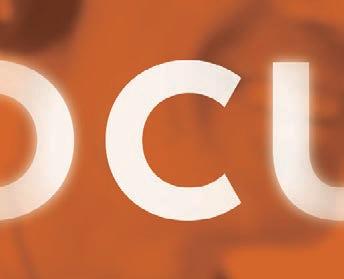


“To make that call we will
need to see further price lifts over the remainder of the year.
“Indeed, the recent price rises may have much to do with the fact that low prices have brought buyers back to the market rather than any fundamental change or improvement in global dairy demand.”
ASB economist Nat Keall said prices are still south of where they started the season.
“But it’s good to see some


recovery, and farmers will be hoping prices have found a floor and are set to sustain their recent gains from here.
“There is still comparatively little sign of a return in purchases by China, which is something we have regarded as a precursor to any sustained recovery in prices, given its influence over global dairy demand.”
The ASB forecast for the FGMP is $6.60, and that remains steady.
sharp and stay in FOCUS with the new weekly podcast from Farmers Weekly. Interviews, analysis and insights, without the chatter and spin. in PODCAST GET THE in FOCUS PODCAST 4 FARMERS WEEKLY – farmersweekly.co.nz – October 9, 2023 News 4
Stay
DRIVER’S SEAT: The Christopher Luxon-led National Party has support in the high 30s according to the latest polls. This would deliver 46 seats, 13 more than it has currently.
Adrian Rurawhe and Andrew Little.
All the action in changing of parties is going to be in the provinces.
‘Tornado-like’ winds tear into HB stud
Charlie Williamson NEWS Weather


AROUND midnight on the 17th of last month, Hawke’s Bay farmers Max and Lucy Tweedie found themselves trying to decide whether it was safe to stay inside their house as severe winds began blowing the windows in.

Max said they are used to some pretty hairy weather around this time of year on their Tutira property, but they had never seen anything like this.
“The wind was coming from all angles in the middle of the night, and it was a wee bit tornado-like,” he said.
“We were sitting in bed and bits of the house were flying off, there were four broken windows which the wind blew in. Part of the conservatory flung off and came into our room, and a big bit of guttering came off the house and broke the window.
“We always expect it here to an extent, we get pretty bad spring
equinox winds, but this was amplified.”
The Tweedies run the Hallmark Angus stud. Their well-known bull sale shed was relatively unharmed, but they suffered extensive damage to several other buildings.
“We lost the best part of a fourbay implement shed. Some timber pines came through one shed, and that wiped out our walk-in freezer and took out most of that shed,” Max said.
“And then another one came
down on a two-bay shed and broke through the roof and wall of that. It also pulled a whole lot of iron off of our covered cattle yards and wiped out about 10 pine trees.”
140ml of rain following all that wind,” he said.
“We just had to make things happen, ’cause I guess we’ve had a fair bit of stuff out of our control lately, and you’ve just gotta control the things that you can.”
WeatherWatch’s Phil Duncan said there are a number of factors influencing the increase in severe weather across the motu, especially in these east coast regions.
The Tweedies are no strangers to severe weather and the recovery that follows, having dealt with damage from Cyclone Gabrielle earlier in the year.
During the cyclone recovery, Hallmark organised a charity bull sale alongside Havelock North’s Koanui Herefords, raising funds for cyclone relief.
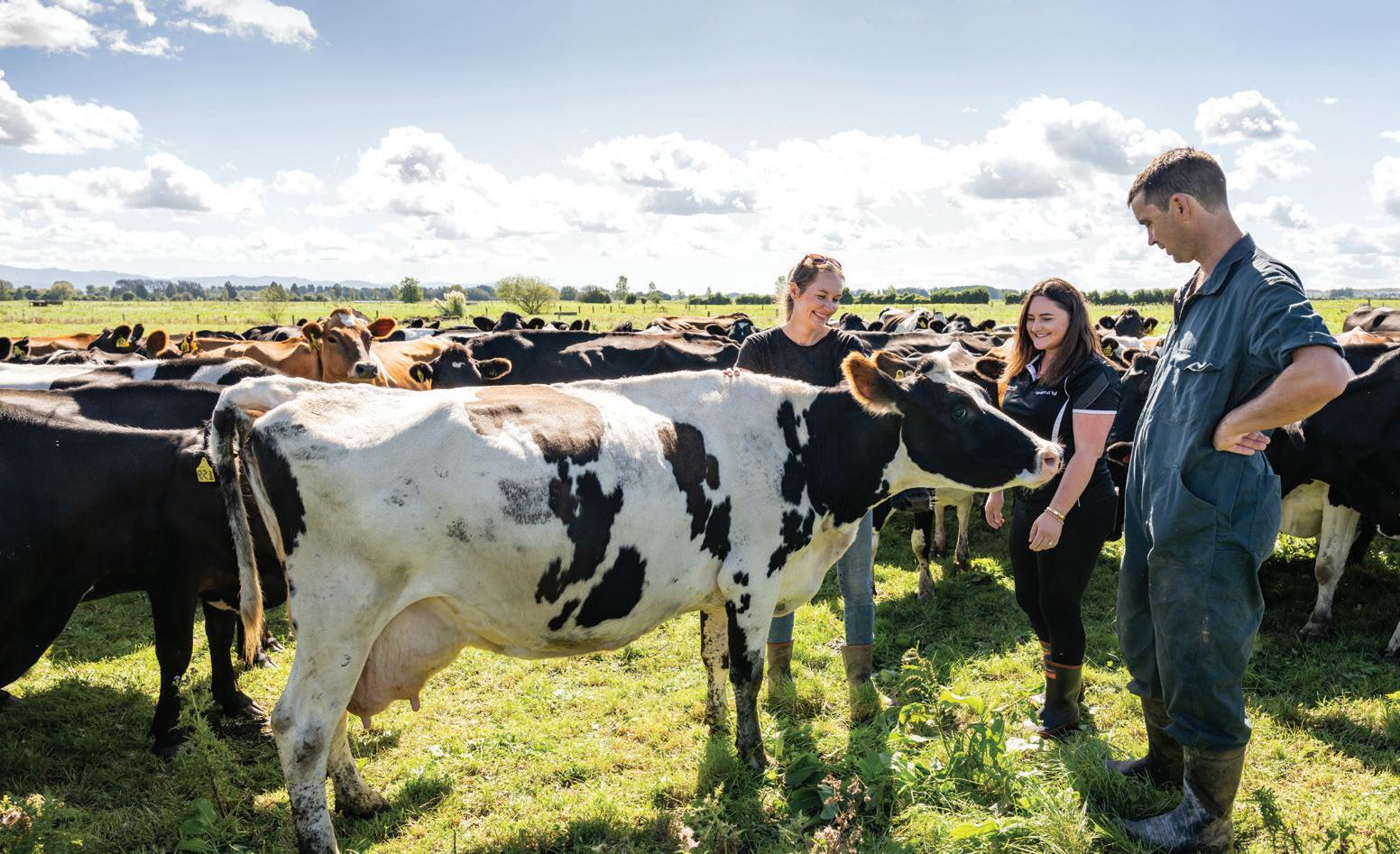
Max said that through it all he has learnt the importance of focusing on the controllables.
“We had to move as quickly as we could to get everything weatherproof because we had
Tatua rockets to record earnings, payout
ranging from 30c to $1/kg.
TATUA Dairy Co-operative has announced a record $12.30/kg milksolids payout to its 101 dairy farm suppliers after making record earnings of $15.20.
Group income in the 2023 season was $537 million and the earnings available for payout were $225m.
The retention of $2.90 determined by the directors is equivalent to $43m for reinvestment in the business, more than double the retention last year.
Tatua has steadily increased its payout since the dairy downturn of 2015-16, in annual increments
It has also maintained a very healthy $2-$3 margin over Fonterra’s payouts because of its value-add products and a tightly controlled catchment.
Chair Stephen Allen and chief executive Brendhan Greaney said the payout decision balances the needs of the farming businesses where costs have increased well beyond mainstream inflation and the need to continue to invest in the company and maintain balance sheet strength.
Gearing at year’s end (debt divided by debt plus equity) averaged 21.7% for the year but was 16% at balance date following the sale of inventory higher than usual.
“Revenue from our bulk ingredients business of caseinate, whey protein concentrate (WPC) and anhydrous milkfat (AMF) was the highest ever.
“It was buoyed by global dairy protein prices in particular, which contributed significantly to our earnings uplift.
“Prices have subsequently fallen, which will result in more typical earnings over the year ahead.

“The bulk ingredients revenue uplift coincided with combined revenue from our inherently more stable specialised nutritionals, foods and flavours businesses also reaching a new high, and making a valuable contribution to overall earnings.”
Greaney said diversification of
market across the ingredients and value-add products helps underpin earnings.
Tatua is not as dependent on China as Fonterra, although its three main markets for ingredients are China, Japan and the United States, and it employs in-market sales staff in those three regions.
Product volumes fall about 50:50 into ingredients and the value-add products and just under 90% of all output is exported.
The large retention will be used for a range of planned projects including plant replacement, sustainability and new equipment for cream-based consumer and foodservice products.
Tatua processed 14.85 million kilograms of milksolids during the
Spring is traditionally a time of rough weather and “this year is the closest to normal we’ve seen in years, and on top of that, El Niño, and some of the marine heatwaves that are going on in our part of the world, are all adding to the extra energy that we’re seeing”.
“Then you have places like Hawke’s Bay, who have been caught up in these weird lowpressure zones through all of this that have put extra pressure in that area with wind.
“So between that, and the mountains and ranges near Tutira, that’s a reason why we’re seeing weather events like this.”
DIVERSIFICATION: Tatua chief executive Brendhan Greaney says diversi cation of market across the ingredients and value-add products has helped underpin earnings.

year, 1% higher than the previous year.
The average production per farm was 147,000 and the farmgate milk revenue was $1.8m.
We’re here to support your business through the development of your staff Contact your Training Adviser on 0800 20 80 20, email info@primaryito.ac.nz or visit primaryito.ac.nz/support 5 FARMERS WEEKLY – farmersweekly.co.nz – October 9, 2023 News 5
TWISTED: One of the several sheds and other buildings damaged in the recent storms at Hallmark Angus in Tutira.
We were sitting in bed and bits of the house were flying off.
Max Tweedie Tutira
Hugh Stringleman MARKETS Dairy
Down for the count

With a unique cereal coating slugs can’t resist, superior coverage per m² and the ability to last longer than competitors in wet conditions, Slugout ® is still the heavyweight champ.




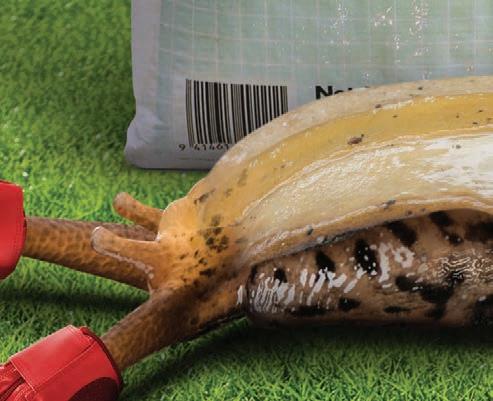








• Cereal coating and metaldehyde both lure slugs/snails

• A cost effective solution, proudly developed and trialled in NZ

• Highest chance of pest feeding on the bait

• Durable in the weather with mould inhibitor












• Not toxic to earthworms or predatory beetles Contact your local Rural Supplier or Nufarm Territory Manager today, or for more information visit nufarm.co.nz/slugout

ONF208255NF
®SlugOut is a registered trademark of Nufarm Technologies USA Pty Ltd. 208255 Nufarm FW SlugOut Advert 262x380.indd 1 13/09/23 9:04 AM 6
Matts bring Mates of Mates out of lockdown
Craig Page PEOPLE Wellbeing
DOING 25 push-ups a day with friends during the covid lockdown has inspired Matt Holden to launch a day out for mates, “whoever they may be”.
Mates of Mates for Mates will be held at the Waikoko Gardens, Tomoana Showgrounds, Hastings on Friday, November 10 as a fundraiser for the Rural Support Trust.

The concept stems from covid lockdown when Holden was reluctantly dragged into the 25-day push-up challenge to raise awareness of mental health. It became a social media phenomenon in 2020.
“I got really anxious and thought, shit I’m going to get nominated for this. Sure enough, I got nominated and it was the best that could have happened,” Holden says.
He identified 25 friends to join him during the challenge, which then took on a life of its own. “Suddenly there was this
community of a bunch of guys in our 50s. We either went to school together, worked together or were at university together. The more we got into it ... we were doing press-ups then having a chat into our phone and we’d post that.
“It was raw, real and from the heart. Some of the stuff from the guys was pretty moving.”
Holden, of Kelso Genetics, said the comments inspired him to ask a friend at Barefoot Pictures to produce a short video using the comments.
The 16-minute video was produced but, as life moved on, the video was put to one side. That was until July this year, when Holden felt people needed some inspiration after a tough start to 2023, particularly in the upper North Island.
“We’d had Gabrielle and it looked like we were going into a drought. Things were pretty bad so I posted the video on social media. It got 3000 views within days.
“And now I’m going to use this Mates of Mates for Mates idea to hold an event, to get people together, share the love and give everyone something to look forward to.
“Everyone is feeling so beaten up economically, environmentally and politically – and you can put those in whatever order you want.”
Holden has planned a fun-filled afternoon where people can relax, learn some new skills and most of all enjoy time with their mates.
He will co-host the event with television presenter and mental health advocate Matt Chisholm. Local legend Hamilton Logan, who lived through the 1931 Hawke’s Bay earthquake and 1938 Esk Valley flood, will also share his experiences. Tickets are $50, which includes a goodie bag, with all money going to the Rural Support Trust.
Supporters have been quick to get on board. Forsyth Barr heard of Holden’s plan and contacted him offering to help and within a month he had attracted 40 businesses and $30,000 in cash and $40,000 in kind to support the event.
“I was stunned by the support. It didn’t really feel like work.”
Holden hopes people will use the day as a chance to get away from their farms, work and the associated stresses.

clients I could sense that people were pretty fragile.
“I know if you have something to look forward to it makes you feel better. I thought right I’m going to do something to help these people and not just rural folk.
“All I’ve learnt through life is the most valuable thing you can give someone is your time,” Holden says.
MORE:
Matt Holden Kelso Genetics
“It’s not just for blokes, it’s for everyone. Your best mate might be your wife,” Holden said.
“I’ve had my own issues with anxiety and depression and even talking to some of our farmer
Tickets can be purchased through www.eventbrite.co.nz/ matesofmatesformates
New evaluation backs Overseer
establish and review OverseerFM has also noted the validation work has improved confidence in the use of the Overseer model.”
Yearling bulls on truck for new homes after steady sales
the average across 22 sold was $3100.
STEADY sales of beef bulls marked the early-October week of the spring auction season for those breeders aiming for the yearling market.
Te Mania Angus, Clarence, sold 28 of 32 with a top price of $8500 and an average of $4357.
Maungahina Herefords and Speckle Parks, Masterton, sold 22 out of 25 Hereford yearling bulls, averaging $2600, with a top of $5400 paid by Brian Miers.
In the Speckle Parks the top was $8700 paid by Tracey Thompson for lot 27, Maungahina T219, and
Bexley Herefords, Awakino, sold 29 out of 31 offered for an average price of $3138 and a top price of $6800 paid by CB Norman. They also sold four Speckle Park yearlings, averaging $2425.
Ranui Angus, Wanganui, had a full clearance of 30 bulls, averaged $3450 and had a top price of $6000 paid for Ranui T04.
Premier Cattle Company, Cambridge, sold Speckle Park and Murray Grey bulls with a full clearance of 36 and an average price of $3050 and a top price of $6000 paid for Premier M25 Chilli Pepper.
Timperlea Angus, Oxford,
reached $10,000 for Timperlea Terence T109 and sold 25 out of 28 for an average of $3833.
Vermont Angus, Alford Forest, sold 25 of 27 offered with a top price of $6000 paid for Lot 1. The average price paid on the day was $2644.
Glen R Angus, Sheffield, had an excellent average price of $5000 over 19 bulls sold out of 30 twoyear-olds offered and the top price was $7500 paid for lot 2, Glen R S122 by a commercial farmer.
Blackbridge Simmentals, Kaikohe, sold 12 of 18 offered by owner Vaughan Vujcich and the top price was $5600 for BlackBridge L266. The average was $3266.
FARMERS, growers and regional councils can have confidence in the nitrogen leaching estimates of OverseerFM after an independent evaluation re-affirmed its use as a farm management tool.
The evaluation showed Overseer performed well against measured losses of nitrate, with the tool rated as “very good” for grazed pastures, and “satisfactory” and “good” for crop systems.
Over the past two years, scientists from AgResearch, Plant & Food Research, NIWA and Manaaki Whenua Landcare Research evaluated OverseerFM’s performance for New Zealand farming systems as part of a science programme carried out in conjunction with the Ministry for Primary Industries (MPI) and Overseer Ltd.
This re-affirmed OverseerFM’s role as a useful decision support tool that allows farmers and growers to make more informed decisions about their farm management practices, boost their productivity and profitability, and improve their environmental impacts, Overseer chief executive Jill Gower said.
“Importantly, the Technical Advisory Group set up to

As a result of the science programme, Overseer has also undertaken a series of improvements to the farm management tool to further enhance its value for farmers and growers, including the release of new software versions in December 2022 and April 2023, she said.
“Farmers and growers have welcomed these enhancements to OverseerFM, which are supporting them to gain valuable insights and information, track progress and communicate efforts.
“We know farmers and growers are increasingly relying on OverseerFM as an indicator of farm sustainability and we encourage those users to ensure they understand how the tool can add value in this area.”
A limiting factor when developing and validating any tool is access to quality field research, Gower said.
“Overseer Ltd is also working hard to improve the understanding of OverseerFM and the way the tool should be used, especially as we see more and more users and organisations engaging with the software to understand and manage their greenhouse gas emissions, as well as their nitrate leaching.”

7 FARMERS WEEKLY – farmersweekly.co.nz – October 9, 2023 News 7
MATES: Matt Chisholm and Matt Holden will co-host next month’s Mates of Mates for Mates event in Hawke’s Bay.
All I’ve learnt through life is the most valuable thing you can give someone is your time.
Hugh Stringleman MARKETS Livestock
SALE DAY: Maungahina stud principal Mark McKenzie with Herefords NZ general manager Posy Moody before the sale in Masterton.
Photo: Andrea Mans eld
Staff reporter TECHNOLOGY Software
Market uncertainty cools farm sales
FARM sales have taken a slide and while activity is expected to increase through spring there are still several factors causing uncertainty in the market.

Real Estate Institute of New Zealand (REINZ) data shows there were 175 farm sales in the three months to August 2023, down 21% compared to the same period last year.

For the full year, total farm sales, at 1085, are down 31% with 494 fewer sales than in the year to August 2022.
Sales of dairy farms were down 34%, dairy support down 7.9%, grazing farms down 21%, finishing farms down 39%, and arable farms down 16%.
The median price per hectare at $24,920 for all farms sold in the three months to August was down 8.3% compared to the same period last year, and down 15% compared to the three months ended July 2023. REINZ said the results were expected, continuing a trend that has been prevalent through most of 2023.
It noted that activity might now be increasing into spring but there are still plenty of factors causing delay and uncertainty, such as
wetter-than-usual weather in many areas, the general election, reduced dairy payout forecasts, and recent overseas investment decisions as they affect forestry conversions.
General manager rural for Property Brokers Conrad Wilkshire said while spring normally brings with it a “spring in the rural market”, there are still a number of factors affecting the market.
“It’s fair to say that the rural real estate market has been challenging as the impacts of higher interest rates and ongoing regulation are absorbed.

“But there is a realisation now this is the new normal and the market is poised for a reset again.
“The market in recent months has definitely shown a positive response to interest rates levelling off, as sales confirm.”


Wilkshire said the Waikato market is as good a case study as anywhere. It is currently highlighting a comeback with strong buyer inquiry and a good line-up of listings to match that.
“We have had some good early results this past month with both dairy and drystock properties.

“Open farm attendance is way ahead of the same time last year, and with a surprising number of cashed-up buyers in the market.
“With the primary sector still forecast to deliver 80% of NZ’s

export receipts, we need to look at all options, at times being more creative to get deals together to help vendors and purchasers achieve their long-term goals.”

REINZ rural spokesperson Shane O’Brien said the lower

sales volume is expected during the winter months but it is encouraging to note that despite a lower number of sales than previous years, median sale prices are holding across most sectors.
“The wetter-than-usual winter across many regions has seen a delay in releasing some properties to the market and some vendors are choosing to hold off, awaiting the outcome of the general election to give more certainty around buying and selling decisions.





“Many of the rural sales teams are already noting an increase in activity as we hit spring with listings being readied for market.”
O’Brien said there is no doubt
PRICE CUT: The median price per hectare was $24,920 for all farms sold in the three months to August – down 8.3% compared to the same period last year.
the recent drop in the dairy payout has impacted prospective buyers for dairy farms and dairy support land, but this is expected to be short term. Interest continues in the carbon and forestry sector.
“But the market noted the recent decision by the Overseas Investment Office [OIO] to not approve two applications for land for forestry conversion will undoubtedly be a factor for some buyers to consider.
“REINZ was recently advised that there are 18 applications for rural land to be converted to forestry sitting before the OIO and ministers awaiting approval,” O’Brien said.
VALUE FREE 60L Portable Fridge Freezer* with any Weighing and Electronic identification Combo Package purchase over $2899! Not sure which Combo Package is right for you? Our team are here to help on 0800 731 500. *Portable Fridge Freezer valued at $700. Terms and conditions apply. Offer valid until 30 November 2023 or while stocks last. 8 FARMERS WEEKLY – farmersweekly.co.nz – October 9, 2023 News 8
Annette Scott NEWS Land
It’s fair to say that the rural real estate market has been challenging as the impacts of higher interest rates and ongoing regulation are absorbed.
Conrad Wilkshire Property Brokers
FTAs: Gold standard or a lot of brass?


who picked up the United Kingdom FTA negotiations after the 2020 election.
GO to the Labour Party’s website and you will find the free trade agreement with the United Kingdom up in lights, near the top of its list of achievements in six years of government.






















Indeed, the FTA with what is still the world’s sixth largest economy is as much a “gold standard” as Labour says it is.

New Zealand beef, lamb, and dairy especially, achieve tariff-free access in the near record time of between five and 10 years.
But what plaudits does Labour really deserve for the deal and six others either signed or upgraded?
As was the case with his predecessor David Parker, the crowning achievement of Damien O’Connor’s three years as trade minister came despite rather than because of him.

Getting Parker’s signature on the Comprehensive and Progressive TransPacific Partnership (CPTPP) wasn’t as straightforward as it should’ve been.
In Opposition, Parker had upended the longstanding consensus between the two major parties to line up with anti-trade protestors to decry the deal.
En route to the final negotiations in Vietnam just days after the 2017 election, Parker threatened to pull NZ out of the 11-country agreement.
His concern that it opened NZ to lawsuits from foreign corporations was a straw man argument used by Green Party activists and not borne out by previous FTAs signed by NZ.
In the end Parker gave way and exporters breathed a sigh of relief.


Parker’s heavy workload saw him hand over the job to O’Connor,


With its veto over the UK’s application to join the CPTPP, NZ held all the cards in this negotiation.
“The deal was there to be done quite easily,” said one former minister with knowledge of the negotiations.




“Late in the piece the government introduced confusing stuff around the Treaty of Waitangi holding up the deal for ages as the UK tried to get its mind around what all that meant.
“And they got credit for it? God. They damn near buggered it up.”
The Labour cabinet instructed negotiators to make similar demands of the European Union in the FTA talks concluded last year.
These involved special protections for Māori data, which the Waitangi Tribunal said had been trampled on in previous FTAs.
Where previous governments had confined their ambitions to reducing tariffs and other impediments faced by exporters, Labour set much loftier goals for its negotiators.
Such protections would have ensured data or digital images collected from or relating to Māori could never be stored anywhere other than in NZ.
In the end the agreement included a clause to review the matter after two years.


Because of the secrecy surrounding the talks it is difficult to know how much this concession from the EU contributed to the

poor final outcome for NZ pastoral exports.
What is clear, though, is that imposing so-called data localisation rules on EU cloud computing and financial services firms wanting to do business here goes against the trend of modern trade agreements to free up the cross-border transfer of data. It certainly would not have helped NZ negotiators to open the door to EU agricultural markets. Underpinning this approach was Labour’s Trade for All trade negotiations strategy.
Where previous governments had confined their ambitions to reducing tariffs and other impediments faced by exporters, Labour set much loftier goals for its negotiators.
Gender equality, workers’ rights and environmental protections, as well as protections for indigenous rights, all counted as objectives for NZ’s trade agreements under Labour. Labour’s obsession with using trade to further its
ideological agenda became farcical when O’Connor travelled to the Middle East last year.
There he demanded the Gulf Co-operation Council (GCC) re-open negotiations to better reflect the Trade for All agenda, including “outcomes on labour and environment”.



That would be fine except for the fact that key members of the GCC include Saudi Arabia, the world’s largest oil producer, and Qatar, the LNG-exporting powerhouse, and scene of the deaths of thousands of immigrant labourers working on stadiums for the 2022 football World Cup.
The result was the GCC withdrew a previous offer to slash $60 million of tariffs on NZ agricultural exports, and negotiations stalled.

But far and away the biggest failure has been with India.
The previous National-led government tried but made limited headway in bilateral talks with India.
Under Labour both Parker and O’Connor bet on the 12-country Regional Comprehensive Economic Partnership (RCEP) trade agreement, which for a time included India.
However, India withdrew from those talks before they were able to be concluded and with that went any chance in the near term of access for NZ exporters to a market of one billion consumers. By comparison, Australia had not been content to place all its bets on RCEP.
It put in a massive diplomatic effort, including numerous prime ministerial and ministerial visits up until it signed a deal last year.
In answer to complaints from exporters that the government was not putting in the same effort, Labour ministers are said to have responded they had their hands full securing FTAs with the UK and the EU.
Somehow Australia found the time to put effort into the EU and the UK as well as India.
Buy your tickets online at www.coastguard.nz/lottery113 scan the QR Code, or phone 0800 568 879 now Lottery closes 6 Dec 2023, drawn 13 Dec 2023 CA$H Christmas FOR THE GREAT COASTGUARD GRAND $100,000 PRIZE TICKETS $25 EACH 000 ! LOTTERY 113 9 FARMERS WEEKLY – farmersweekly.co.nz – October 9, 2023 News 9
Nigel Stirling POLITICS Analysis
TRADE OFF: Was the government’s glittering trade run – which included a free trade agreement with Europe –achieved more in spite of Labour than because of it, asks Nigel Stirling.
Practical resources for farmers explored
Annette Scott NEWS Sustainability
THE role of rural professionals in the sustainable future of New Zealand’s primary sector was the focus of a food, farming and freshwater event held in Canterbury.
Facilitated by the NZ Landcare Trust and Our Land and Water (OLW) National Science Challenge, the event explored local scenarios with practical applications.
OLW director Jenny WebsterBrown said the 11 National Science Challenge projects aim to develop practical resources to help farmers add diversity, increase resilience and tackle environmental challenges for their farm, catchment and community.

“This was always to be a fixed term experiment with $96 million to go for eight years on missionled research, finishing in June 2024. The replacement at the end is the big question, at this stage,” she said.
To date 75% of the funding has gone to researchers in collaborative research teams for projects focused on how to use land better in a way that does not damage New Zealand’s water.
“Although much of our funding is allocated to scientists and other

researchers, we also appreciate and acknowledge the ability of Kiwi farmers to solve their own problems has moved way beyond innovative ways with No 8 fencing wire.”
To support on-farm innovations, OLW launched its Rural Professionals Fund in 2021, tasked with connecting innovative farmers and entrepreneurs with the researchers who can help assess and develop their ideas and with rural professionals who can share the ideas with other farmers.
“This fund is for the rapid testing of innovative ideas that could enable Kiwi farmers to identify new ways to take care of their land and protect their sustainable farming legacy.”
Over a two-year period the fund assisted 27 projects.
“Funded projects all have one thing in common: that proof of concept could create wider benefits for NZ farming communities, our land, or our water.
“It’s about sowing the seeds for a pathway forward: think pieces, think working groups, research programmes, strategic and extension initiatives for rural professionals, scientists and farmers to work together.
“After June next year we won’t be here to help you find information
but we will do everything in our power to help make sure all our research funds have a home before June 28, 2024,” Webster-Brown said.
One project researched the ability to provide a sustainable and healthy diet by adapting land use in NZ, looking at whether the raw ingredients for this optimal diet can be grown in the country in an
affordable way that meets targets for reducing water contaminants and greenhouse gas emissions.
In his project address to the forum, AgResearch soil scientist Richard McDowell said much is unknown about where NZ has to get to by 2030.
“We hear a lot of political influence on GHG and He Waka Eke Noa [HWEN] but ... achieving targets in a generation is more realistic than a timeframe of three to five years.”
The modelling exercise showed that shifting productive land uses to support a healthy, domestically produced diet for the NZ population can support meeting environmental targets for GHGs, nitrogen and phosphorus.
“Meeting the freshwater target also met our climate target, but not the other way around. An additional 14-26% reduction in N and P loads would be required.”
The maximum cost of the changes is about 1% of the primary sector’s export revenues, which McDowell suggested could likely be recouped with productivity gains, having negligible impact on export revenue.

The consumption of a healthy diet is projected to save the health sector $14-$20 billion.
“Considered as an agri-food system, NZ can improve its health and its environment while saving

money,” McDowell said. Rural environment consultant Simon Stokes said rural professionals have a huge role to play in revitalising te Taiao, the natural environment that contains and surrounds us.

“Rural professionals are connected in many ways to people and the environment and are increasingly required under legislation to engage and codesign with local runanga, hapu and iwi.
“Revitalising te Taiao, respecting that all knowledge starts as local knowledge, through engagement and connection looks at how solutions can be tailored to fit the local context of production, economy, community and environment alongside those groups.”
Respecting all knowledges, engaging and co-designing, collaboration and participation, including highlighting power imbalances and protecting interests, is the way to move forward in this challenging space, Stokes said.
“Do your homework on your role and work ahead, lean on regional councils and runanga for information.
“It’s one hell of a journey, challenging but rewarding in deepening the ability of rural NZ to thrive into the future.”
Pukekohe deer farmer fined for NAIT breach

Staff reporter NEWS
Livestock


A PUKEKOHE deer farmer has been fined $12,000 for not tagging 278 animals under the National Animal Identification and Tracing scheme.


Under the NAIT scheme all cattle and deer must be fitted with a tag and registered in the NAIT system by the time the animal is 180 days old, or before it is moved off farm.
Lester Harrison Nixon was sentenced in the Papakura District Court on two charges under the NAIT Act, following a successful prosecution by the Ministry for Primary Industries. He has three properties registered in the NAIT database.
“NAIT tags are there to track and trace animals. They play a critical role in helping to ensure we can respond quickly and accurately in the event of a biosecurity incursion.
“When people in charge of animals disregard their NAIT obligations they put the whole agricultural sector at risk,” MPI acting national manager animal welfare and NAIT compliance Brendon Mikkelsen said. The MPI made inquiries with Nixon about
RECORD: All deer and cattle must be tted with a NAIT tag and registered in the NAIT system by the time the animal is 180 days old.

outstanding animal movements on his NAIT account in 2021.
“We found Mr Nixon had made little effort to comply with the NAIT system, advising us that he does not tag his deer until just before they’re transported. He said he does not register the tags and that he had farmed for over 30 years without it [NAIT],” Mikkelsen said.
During a search of one of his properties where he had NAIT animals grazing, the MPI found 132 deer not fitted with a NAIT tag and at another of Nixon’s properties a further 146 deer were also not fitted with tags.
In 2019, penalties in the NAIT Act increased tenfold to a maximum of $100,000 for an individual, and up to $200,000 for a body corporate.
Mikkelsen said while receiving one of these penalties could hurt the bottom line for people in charge of animals, the inability to trace animals can have far-reaching and serious consequences for everyone.
“The NAIT tag and registration system is only as effective as the information entered in. If you are unsure about what you need to do, reach out. There is plenty of information, advice and support available,” Mikkelsen said.
TRO4198_BUCCALGESIC_FW_[129x190mm].indd 1 13/9/2023 4:26 pm 10 FARMERS WEEKLY – farmersweekly.co.nz – October 9, 2023 News 10
REALISTIC: AgResearch soil scientist Richard McDowell says achieving targets in a generation is more realistic than in a timeframe of three to ve years.
NOT MUCH HAS CHANGED IN 65 YEARS















Hand crafted since way back in 1958



























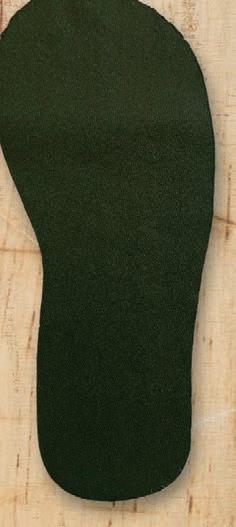

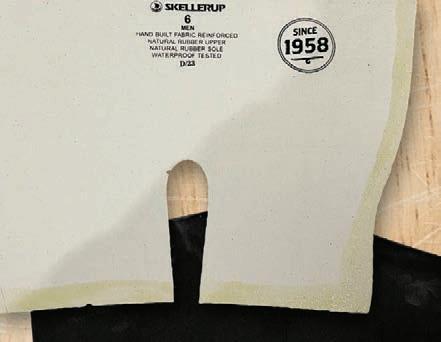



































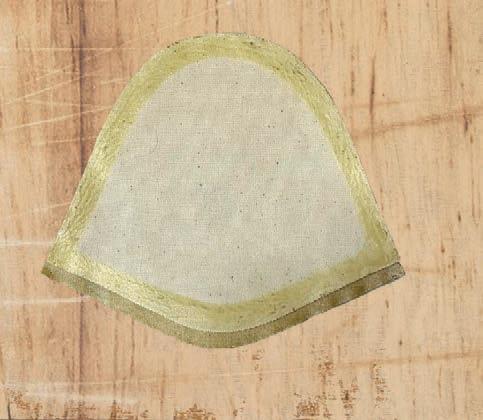














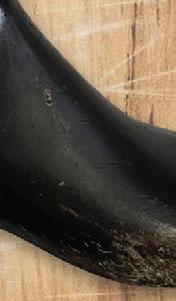


























Skellerup Red Band gumboots are Iconic to New Zealand, made with natural rubber that stands the test of time. Whether you’re out on the farm or catching a game of footy,
























Red Bands fit right in. They’re tough, reliable, and a staple for Kiwis. We’ve been wearing them for 65 years now. Not much has changed since ‘58 – they’re still handmade using 19 individual pieces.












www.redband.co.nz
11
Workshop teaches tailing without pain
Jo Grigg TECHNOLOGY Animal welfare
FARMERS wanting to supply wool with a Responsible Wool Standard stamp have to give pain relief to lambs at castration and tail docking/tailing. All growers supplying NZ Merino ZQ will need to do this by 2025.
This requirement is set to see many Merino growers carry out the procedure in the tailing pen this spring. Vet Marlborough responded by running a farmer accreditation day to train their Marlborough clients in the use of pain relief. This was one of the first pain relief days of its type, said Heath Dickson, Vet Marlborough rural business manager.
It involved two veterinarians assessing about 20 farmers’ ability to correctly treat lambs with injectable local anaesthetic, oral and injected anti-inflammatory or spray-on local anaesthetic.

The paperwork was done on the spot and farmers indicated which product they liked best, so Vet Marlborough could plan orders.
“A couple of clients gave local pain relief last year, to meet wool contracts, and one has been using Numnuts for several years,” Dickson said.
“We have at least 16 affected clients in Marlborough and my North Canterbury counterpart said they had at least three.

“It’s only going to grow and I do see the strong-wool growers also being included in time.”
Veterinarian Mary Bowron said veterinarians are still coming to grips with how to advise farmer clients.
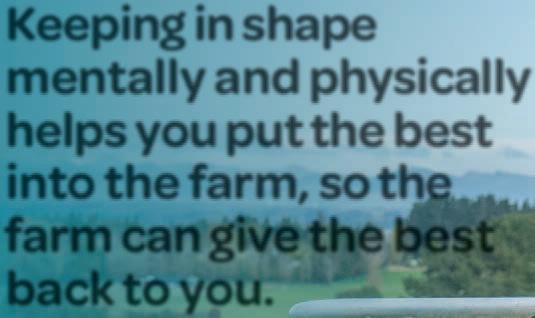
“We need to give practical and cost-effective advice to farmers,” Bowron said.
“As veterinarians we want to prescribe what is best for the animal – effective and appropriate pain control.”
The market drive for making pain relief compulsory is coming from Textile Exchange, a global nonprofit organisation that aims to create leaders in the sustainable fibre and materials industry. The Responsible Wool Standard is owned and managed by Textile Exchange. Its suite of standards allows brands and retailers to choose between wool growers and fibre types. Buying wool from growers that meet the Responsible Wool
Standard assures that tail docking is only carried out if failure to do so would lead to welfare problems. It must occur between 24 hours and eight weeks of age.
Castration is allowed where it benefits lifetime sheep welfare, better flock management and a reduced health and safety risk to handlers. Lambs destined for slaughter before they are 12 weeks old, or before the onset of puberty, should not be castrated, it states. Pain relief must be given for both procedures if a licensed product is available in that country, for that species.
to hot-iron docking or putting a rubber ring on the tail, while castration by rubber ring without pain relief is four out of six on the scale.”
“This suggests castration is more painful than tail removal by cauterisation or rubber ring.”

The two main pain relief options showcased at host farm Richmond Brook were local anaesthetic and anti-inflammatories (similar to ibuprofen for humans). The products have a different dose rate depending on the weight of their lambs.
“How many people know the weight of their lambs at tailing time?” Bowron asked.
The cheapest option is an injection of local, although two injections are currently recommended on the testicles (each side) and possibly one or two for the tail (each side). Four doses would cost around $0.48/ram lamb, and it would be half that for the ewe lamb (tail only).

Numnut device or local injection. Behind the scenes, product labelling and veterinary services are racing to keep ahead of the rollout. Vet Marlborough was uncertain if farmers needed to be accredited each year although, for veterinary operating instructions, it should be annually, Bowron said. In response to demand for using Tri-solfen for tailing, the meat withholding period for Tri-solfen has been updated from 91 days to four days meat withholding, Bowron said.
Buccalgesic oral dose is given into the cheek pouch, while the other option, the Meloxicam injection, goes under the skin, either in the neck or the armpit. Both are anti-inflammatories and a one-pass option.
The verdict at the field day was they were convenient but more expensive than local. They are not effective on acute pain. The antiinflammatories take 15-20 minutes to take effect.
The NZ Veterinary Association Sheep and Beef Committee hosted a webinar for its members recently to discuss the issue of providing the best advice on pain relief.
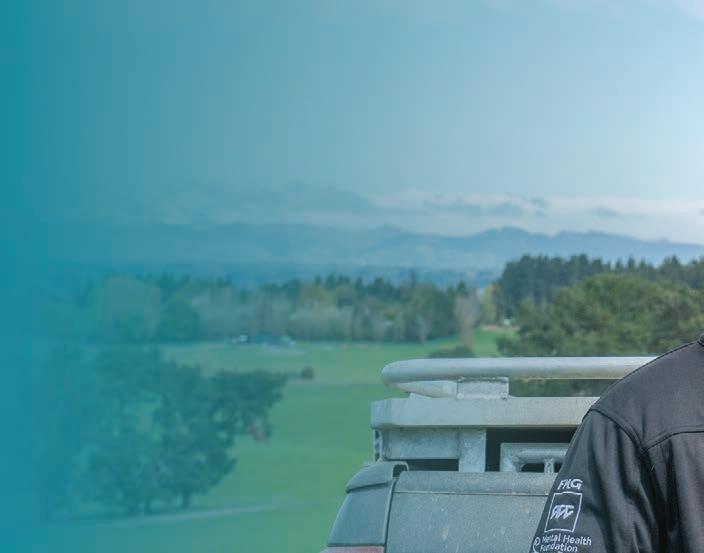
Dave Robertson, of Oamaru Veterinary Centre and a member of the committee, said vets have to be at the centre of the decisions on pain relief.
“They have the mix of the practical and the science.
“We have very good castration and tailing systems already – with past research into ideal pressures for rubber rings and the effect of cauterisation, that stops the nerve firing and numbs any pain.”
He suggested some of the current pharmaceutical options may not totally eliminate acute pain, but farmers requiring Responsible
Wool Standard accreditation will have to use them at this point. Anti-inflammatories have been tested and work for inflammatory conditions like cuts, he said, but may not be that effective on castration pain.
He said he expects nonpharmaceutical options to become available over time.
The New Zealand Merino Company, which was represented on the day, is rolling out adoption of pain relief and has negotiated with Textile Exchange for a staged process for its ZQ growers. It operates a combined audit process for its ZQ growers who also meet the Responsible Wool Standard.

Dave Maslen, chief partnerships and sustainability officer for NZ Merino, said all ZQ growers need to be using pain relief by June 2025.
“We know this is a significant practice change ... and prescribing these products at scale is new to many vets, so we have negotiated a stepped pathway towards implementation.”
Farm groups have been split into three, based on the amount of exposure each property has to the market.
The first group is required to use pain relief from June this year, the second group from June 2024 and the remaining growers in 2025. This includes lambs born on the property that may not supply accredited wool.
Textile Exchange describes itself as playing “a powerful role within the textile industry to support the understanding and use of sustainable materials and proper verification strategies”. Maslen said adoption is needed to maintain growers’ position at the premium end of the market.
Dave Robertson

Bowron said cortisol hormone level is one way to measure stress and related pain in lambs.
A ranking system has been developed from one to six, to allow meaningful comparisons of cortisol response in lambs.

“Separating lambs from ewes at the age of four to eight weeks scores a similar cortisol response
Heath Dickson said that this is dependent on the price each clinic can source product at and their buying power.
The dose should be adjusted for weight, he said, as overdosing of small lambs is possible. Tri-solfen gel spray is the next cheapest option but covers only the tail wound.
This is around $0.43 per 2ml dose plus GST. This approach also needs something to cover rubber ring castration, for example the

find out what works for you and ‘lock it in’, visit farmstrong.co.nz
To
Sam Whitelock Farmstrong Ambassador
12 FARMERS WEEKLY – farmersweekly.co.nz – October 9, 2023 News 12
Keeping in shape mentally and physically helps you put the best into the farm, so the farm can give the best back to you.
RELIEF: Mary Bowron of Vet Marlborough demonstrates how to deliver local anaesthetic to a lamb at a pain relief training day for farmers in Marlborough.
THE OPTIONS: Current options for lamb pain relief during castration and tail removal, courtesy Vet Marlborough. Please consult your vet.
Our role is also to co-ordinate the thinking of sheep and beef vets, to make sure the advice is practical for farmers and shows good stewardship of pharmaceuticals.
NZ Veterinary Association Sheep and Beef Committee




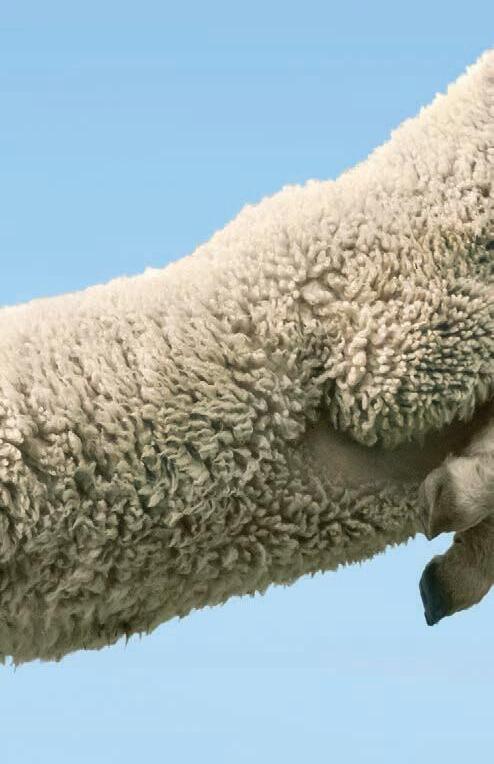
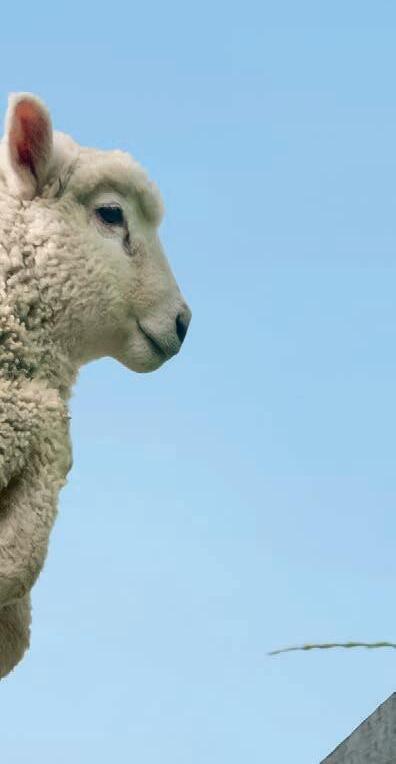







































13
Meat export revenue falls 1% in a year
Hugh Stringleman MARKETS Food and bre

THE meat industry earned $10.8 billion in export revenue during the 2022-23 financial year, to which beef contributed 43%, sheepmeat 37% and the so-called “fifth quarter” 20%.


The fifth quarter is all parts of the animal
fect blend The

that are not meat; that revenue grew by 8%.
Industry revenue fell by 1% from the prior year to June 30, 2022, according to the Meat Industry Association (MIA) annual report, published during September.


North Asian markets generated just under half of the export revenue, at $5.3bn – half of it from beef. China accounted for $4.23bn, which was 39% of the total.
North American markets paid $2.6bn and 57% was from beef.
The MIA annual report says revenue was strong during the first half of the financial year (the third and fourth quarters of 2022) and dropped away by $1/kg for beef and $1.20 for sheep in the second half (January to June 2023).
Beef export volume increased by 3% while value went down by 1% and China was the largest beef market at $2bn.
Sheepmeat export volumes increased by 4% but the revenue went down 8%.




“In many markets, sheepmeat is significantly higher priced than other proteins and high food prices during the year saw consumers in some markets switch to cheaper cuts and cheaper meats during the year,” the report says.
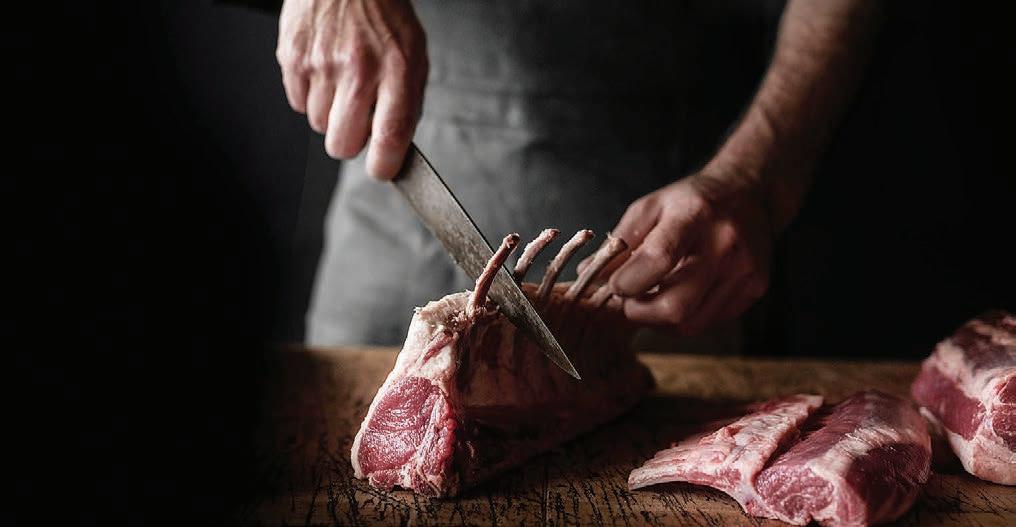
High food prices during the year saw consumers in some markets switch to cheaper cuts and cheaper meats.
Report Meat Industry Association



China paid $1.57bn, followed by the United States on $511 million. The volume of China’s purchasing increased by 16% but the value was down by 5%.
The fifth quarter includes casings and tripe, edible offal, prepared meat products, hides and skins, blood products and glands, rendered products, tallow and pet food.
These categories are roughly similar in earnings, with casings and tripe the biggest category at $436m, followed by edible offal at $345m.
The biggest market for bovine meal is Indonesian aquaculture and for tallow it is now the manufacture of biodiesel.

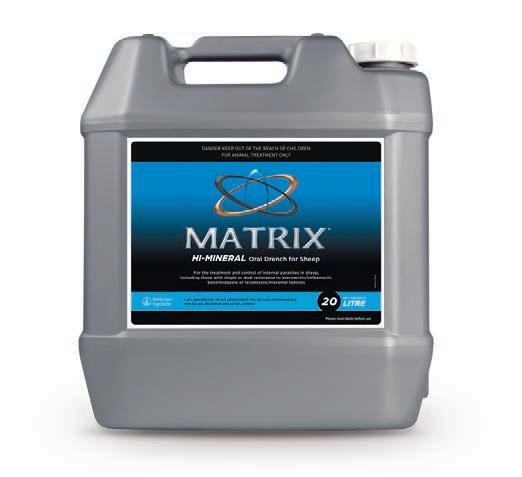
The meat industry workforce was 24,600 people of whom 6000 are process workers and 3500 are slaughterers, and 32% of the workforce are women.
The shortage of halal butchers has eased with the Accredited Employer Work Visa scheme. The MIA reported that halal processing adds $4bn of value to the sector annually.
PROUDLY AVAILABLE FROM YOUR LOCAL PARTICIPATING VETERINARY CLINIC. See product label for full claim details and directions for use. Boehringer Ingelheim Animal Health New Zealand Limited. Level 3, 2 Osterley Way, Manukau, Auckland, New Zealand. MATRIX® is a registered trade mark of Boehringer Ingelheim Vetmedica GmbH, used under license. Registered pursuant to the ACVM Act 1997. No’s A009390. © Copyright 2023 Boehringer Ingelheim Animal Health New Zealand Limited. All rights reserved. NZ-OVI-0013-2023. For more information, talk to your vet or visit: futureproducers.co.nz Discuss with your Vet how MATRIX® Hi-Mineral remains a valuable tool in the fight against internal parasites of sheep on your farm, now and well into the future. Receive a FREE * Swiss Peak Duo Vacuum Flask, with every 20 Litre of MATRIX® Hi-Mineral. *Promo ends 30th December 2023. While stocks last.
14 FARMERS WEEKLY – farmersweekly.co.nz – October 9, 2023 News 14
per
We’re online farmersweekly.co.nz
UP AND DOWN: Sheepmeat export volumes increased by 4% but the revenue went down 8%.
Dollar brings some relief as China lags
Annette Scott MARKETS Exports
RURAL resilience is set to be tested with a weaker China outlook carrying risk for several primary industry sectors, particularly dairy, lamb and forestry, according to the latest ASB rural quarterly report.
It warns the weak performance of the Chinese economy is set to bring another challenging 12-18 months for many farmers, though there are some positives emerging on the horizon.
ASB economist Nathaniel Keall said while the United States economy has strengthened, China is battling high debt levels and weaker consumer confidence, and this is likely to have flow-on effects for New Zealand.

“We are already seeing this play out with whole milk powder [WMP], with China purchasing less than 40% of what’s on offer at each auction, compared with a historical average in the 55-60% range.
“This is having an impact on the global dairy trade price indices, with WMP hitting a seven-year low during August.
“Prices have mounted a modest comeback over the past couple of auctions and many farmers will


be hoping the market is finding a floor,” Keall said.
On the dairy front prices are now 40% below the previous peak in early 2022 and down about 16% since the end of May.
“We expected to see dairy prices heading higher by this point.
“It’s increasingly likely we will see a $6.60 per kgMS milk price low during this quarter, which is in the lower half of Fonterra’s $6.25$7.75 guidance range.”
Lamb prices have undergone an unusual seasonal decline due to processers passing on the impact of weaker demand from offshore to the farmgate, and this has resulted in an annual decline of about 1015% for beef and 20-25% for lamb.
“We anticipated more upside for lamb than beef in our previous rural report, in fact, the opposite has proven true due to demand, not supply, differences driving pricing.”
Lamb is being hit harder by weaker demand as consumers shift to cheaper cuts amid cost-of-living challenges.
Forestry has dropped more than 30% below the previous USD price peak in 2021 (18% in NZD).
Lower forestry prices have also been accompanied by lower export volumes as the sector battles headwinds like the impact of Cyclone Gabrielle.

With the Chinese construction sector decelerating even before last year’s lockdown, Keall said softer demand has also had an acute impact on forestry prices given China usually purchases about 60% of NZ’s exports.
There are some positives emerging on the horizon.
“Twelve-month lows for the New Zealand dollar should continue to give farmgate revenue a minimal boost. Further falls in the NZD this season could offset some of the
Watching over your brassica crop so you don’t have to.
impact of lower commodity prices on farmgate returns,” Keall said.

“Commodity prices are usually cyclical; booms often sow the seeds for a supply response that triggers a subsequent downturn and busts facilitate a tightening in supply that provides eventual support for prices.”
While this next quarter is likely to test the rural sector, it has seen challenging periods before.
Many farmers have used high farmgate returns from previous years to pay down debt and ensure they’re in good shape.
“Our agriculture sector has a long history of weathering storms and coming out the other side stronger.
“It’s likely the sector will need to employ some of that same resilience and adaptability over the coming year.”

15 FARMERS WEEKLY – farmersweekly.co.nz – October 9, 2023 News 15 Visit us at corteva.co.nz ®, ™ Trademarks of Corteva Agriscience and their affiliated companies. COR-CTA0053FW Our portfolio of powerful, proven products has helped farmers from one end of the country to the other create and maintain thriving businesses, and has earned us a reputation as New Zealand’s brassica protection specialists. Visit corteva.co.nz to view our range of online brassica resources. HERBICIDE Arylex™ active HERBICIDE POWERFLO™ Versatill™ INSECTICIDE Jemvelva active Sparta INSECTICIDE Qalcova active Naturalyte™ Entrust™ SC INSECTICIDE Isoclast™ active Delivering a complete suite of crop protection solutions for today’s forage brassica growers.
CTA0053 Sam Brassicas Famers Weekly HP Ad_190x262mm.indd 1 4/09/23 10:10 AM
Samuel Whitelock – Plant Science Graduate, Lincoln University.
HEADWINDS: Lower forestry prices have been accompanied by lower export volumes as the sector battles headwinds like the impact of Cyclone Gabrielle.
INCREASE: ASB rural economist Nathaniel Keall says 12-month lows for the NZ dollar should continue to give farmgate revenue a minimal boost.
Election 2023: Parties’ primary policies

Farmers Weekly asks New Zealand’s main parties to spell out their policies for the primary sector.
Neal Wallace POLITICS Policy and regulation
AT A recent rural political debate a candidate referred to the primary sector as “where the money is made”. That has never been more true since covid decimated tourism and overseas education.
No other industry currently comes close to replacing the income generated by the primary sector, so what are the various political parties offering the productive sector and rural communities?
Farmers Weekly asked the six parties currently represented in Parliament four questions. Five replied. Te Pati Māori did not respond.

How will your party restore farmer confidence and encourage the primary sector’s economic performance?
LABOUR
• Labour acknowledges that times are tough out there, but we are asking people to stop and look at the evidence. Treasury has reported that the economy is growing and expected to be 2.6%, inflation is forecast to return to the 1-3% band at the end of next year, and cost pressures on farm are receding. Farmers can be assured that our economic management has been prudent in the face of unprecedented global disruption through the pandemic and Russia’s war on Ukraine.
• In this uncertain environment, the government has continued to respond to ensure we meet our balanced and responsible fiscal goals of a surplus in the forecast period and net debt below the limit of 30% of GDP. Net debt is projected to peak at 22.8% of GDP in 2024/25 and fall to 21% of GDP by the end of the forecast period.
• Food and fibre export values have grown by 50% to a record $57.4 billion since Labour entered government in 2017 and we’ve invested in farmers significantly across consecutive budgets. That includes Budget 2022’s $1bn across four years, which also covers over $300 million to the Centre for Climate Action on Agricultural Emissions. We will continue our Sustainable Food & Fibre Futures programme, which to date has co-invested over $560m with business across over 260 projects to transform our primary export sector.
• Labour governments are prepared to make the tough decisions, not just do what wins votes. Our agriculture and trade policies dovetail to position us for changing markets – where customers have increasing expectations on sustainability credentials. Export growth lies in targeting high-value customers.
• We’ve opened up more trading opportunities for our exporters
than any other government – four free trade agreements signed and three upgraded. That will see nearly 75% of our trade covered by a legally enforceable agreement – up from 50% in 2017. Our next priority will be a prime ministerial delegation to India within the first 100 days of a new government.
• Our ambition is to grow the agritech sector to $8bn by 2030. To achieve that goal Labour will inject $100m into the Venture Capital Fund to support this objective. This fund will invest in agritech businesses, including through their joint investment fund with Finistere Ventures developed through the Agritech ITP.
NATIONAL
The Labour-Green Government has buried farmers in red tape This has raised compliance costs and kept farmers in front of their computer instead of out on the farm.
To cut red tape, National will:
• Establish a “no duplication” rule, meaning farmers can only be asked for the same information once by officials, eliminating redundant information requests and streamlining processes.
• Introduce a two-for-one rule – for every rule or regulation imposed, two must be removed.
• Create a permanent Rural Regulation Review Panel, tasked with evaluating every local and central government regulation affecting farmers, growers and forest owners for cost and practicality, with results published.
• Streamline consents for wood processing and horticulture.
• Bolster our health workforce with more GPs for rural areas.
It’s important we provide our farmers with the support they need to be the drivers behind our economy and get New Zealand back on track.
ACT
ACT has led the way by standing up for farmers in Parliament. We were the only party willing to oppose He Waka Eke Noa from the beginning and to vote against the Zero Carbon Act. We alone stood up for licensed firearms owners. We’ve consistently opposed the government’s freshwater rules, significant natural areas, fertiliser tax, live animal export ban, ute tax, and more.
We will support farmers by getting the government out of their way, letting them get on with what they do best. ACT’s property rights-based replacement for the Resource Management Act will cut through restrictive planning rules and give farmers more freedom to make best use of their property.
The level of compliance and red tape farmers are forced to comply with is getting in the way of their businesses. Bureaucrats in Wellington don’t realise it, but time spent and costs accrued by filling out paperwork and following regulations is time and money that would otherwise
be spent on practical on-farm improvements.
ACT has already outlined many regulations it will get rid of immediately, and we expect to find more.
GREEN
We can have a thriving, sustainable farming sector that tackles the climate crisis, prioritises food production, helps rural communities flourish, cleans up our rivers, and makes sure we all have fresh and healthy food to eat.
The Green Party will take action to improve farm resilience against extreme weather events and ensure farmers can make a decent living off the land, while keeping our environment healthy. Our plan for the farming sector recognises that climate change is one of the biggest threats because severe weather events and a changing climate make farming that much more difficult.
To support the sector through a changing climate and an economy, we plan to develop dual cap-andtrade schemes for both methane and nitrous oxide, with a fair allocation method. All revenue generated would go back into the farming sector.
We’ll also increase support for farmers to transition to more sustainable forms of agricultural production through finance mechanisms such as low-interest loans and grants.
We’ll work with the sector to develop a National Food Strategy to ensure food production is resilient to a changing climate, and work with Māori to ensure their food sovereignty aspirations are included.
For wool farmers, we will prioritise the purchasing of wool carpets over synthetic carpets by government departments. Wool carpet offers numerous environmental advantages that make it a more sustainable choice, and our choices must reflect our values: the decision between synthetic and wool carpeting is not just about cost or performance, it is a statement about a commitment to a sustainable future.
NEW ZEALAND FIRST
The first priority is to settle things down and take stock. There has been a deluge of reform, and Regional Councils are being asked to upend carefully drafted plans and update them at breakneck speed.
A key element will be to repeal the vague Te Mana O te Wai provisions with the freshwater national policy statement and restore the four wellbeing’s to allow for proper community consultation and input.
A more localised and less “one size fits all” approach to environmental regulation. Beyond that we need to have a solid plan to seize on opportunities to grow the value of the primary sector.
Tax incentives for exporters, support for Brand New Zealand initiatives and government investment to enable the likes of water storage and irrigation. Diversifying our market options by seeking a free trade deal with the Commonwealth, which will be the mechanism to open up the Indian market.
What will your party do to improve rural infrastructure?
LABOUR
• We have increased maintenance investment in our roads by 62% since 2017, after National sweated the assets by increasing the maximum weight of trucks by 21% and flatlining the maintenance budget. We will continue this approach because we understand how vital the state highway and local roading network is to rural communities and the economy.
• We know how crucial it is to have access to reliable mobile and internet services. This is why Labour remains committed to ensuring that more rural homes, businesses and communities can access fast, reliable broadband connectivity regardless of where they live, study, and work. Mobile towers, funded by the government’s Rural Broadband Initiative, provide essential broadband and mobile coverage to more rural and remote communities across New Zealand.
• The additional $43 million from Budget 2022 for further rural capacity upgrades means the government has now allocated over $100m to improving the capacity of rural broadband across New Zealand. This work will be completed within the next three years and will benefit around 69,000 households and businesses.
• We will also partner with the private sector to double the number of public electric vehicle chargers through EV charging hubs every 150-200km on main highways and between 600 and 1000 EV chargers at community
facilities in smaller rural communities. This builds on the more than 1300 EV chargers we’ve co-funded across New Zealand, growing our public EV charging network to the point that we now have fast/rapid charging stations at least every 75km over 97% of our state highway network.
NATIONAL
The National Party will establish a Pothole Repair Fund to urgently address the shocking state of our rural roads and state highways. National’s Pothole Repair Fund will see an additional $500m over three years allocated to address potholes and other road damage. National will also improve resilience in our regions with priority transport infrastructure projects, including upgrades to roading infrastructure in Waikato, Otago and Southland. Red tape is also holding back investment in water storage, making it all-but impossible to invest in. Consenting processes often take years and can cost millions of dollars, affecting urban and rural areas. We’ll make it easier to build water infrastructure by making water storage on farmland a permitted activity, so farmers can build larger-scale water storage infrastructure on farmland without a consent, though a consent to take water for storage will still be required.
ACT
New Zealand’s infrastructure network is straining under the weight of population growth, creating major problems for rural connectivity. Ensuring reliable and efficient ways to get goods and services in and out of rural areas is essential, but the cost of delivering new roads and maintaining existing roads is high.
ACT will use private-sector financing and expertise to get new roads built faster and to maintain existing roads quicker and more effectively. Overseas countries like Ireland have successfully made extensive use of this approach.
16 Political Spread FARMERS WEEKLY – farmersweekly.co.nz – October 9, 2023 News 16
POLL POSITION: Voting closes at 7pm October 14 as New Zealand goes to the polls in the 2023 General Election.
GREEN
We’ll increase the availability and frequency of public transport to ensure that those in rural areas have other transport options besides driving. We’ll also re-allocate spending on new urban highways to walking and cycling, and public transport, so any spending on new roads is in the rural areas that need it the most.
On other infrastructure, we’ve committed to protecting all remaining natural wetlands and increasing funding for their restoration, acknowledging their role in reducing the effects of flooding during severe weather. We’ll also strengthen regulation of nitrogen in waterways, particularly drinking water sources, to ensure all water is safe to drink. We have also committed to creating a fair system for commercial water allocation that protects healthy flow levels of waterways, while opposing large-scale irrigation projects.
NEW ZEALAND FIRST
New Zealand First proposes a dedicated Rural Infrastructure Fund. A more targeted version of the Provincial Growth Fund. It will enable investment in vital rural infrastructure like flood protection, water storage, aquifer recharge, bridges and regional ports.
More broadly we will ensure that money earned in the provinces stays in the provinces and is not syphoned off to build giant white elephant projects in Auckland like light rail and tunnels under the harbour.
We have a priority of fixing up our crumbling existing infrastructure, investing heavily in our rail network and strategic double laning over the whole country before attempting to build mega roads to benefit a just a few areas.
What will your party do to improve rural health, including mental health services?

LABOUR
• In July, the Labour Government released its long-term vision for health, where all New Zealanders can live long, healthy lives and unfair differences in outcomes are a thing of the past. The Pae Ora Healthy Futures Strategies set the direction for the health sector over the next decade.
• The New Zealand Health Strategy addresses the health of all New Zealanders and sits alongside five population-specific strategies, including a Rural Health Strategy. This is the first time rural communities have had their own health strategies.
• The strategy will address change and underlying barriers which may have held back progress by:
– Giving people, whānau and communities greater control over decisions about their health and the design of services.
– Developing services that adapt to people’s health needs and are delivered closer to their homes and communities.
– Developing a sustainable, diverse, skilled and confident future workforce.
– Creating a culture of continuous learning and improvement.
– Making sure we’re prepared for any future shocks that come our way and making the very best of our resources.
– Collaborating across sector and government to drive the right outcomes.
NATIONAL
National forced a rural health strategy into Pae Ora with a statement of purpose that Labour initially refused. Health workforce is a key issue for rural health and National will build a third medical school with a focus on rural health and primary care.
The recent Geographic Classification for Health will bring accuracy to rural health data, which is important for resourcing. National will explore rural health emergency responses such as PRIME as part of a wide-ranging after-hours plan.
National will enable local providers already doing good work in our rural communities to scale up through co-investment via the Mental Health Innovation Fund.
National will also promote local solutions for local needs as rural areas often face different mental health challenges that requires different solutions to urban areas.
ACT
ACT raised concerns in Parliament last year about the lack of recognition for rural New Zealand in the government’s health reforms. As a result the government supported ACT’s proposal to develop a Rural Health Strategy addressing the needs of the 750,000 New Zealanders who live rurally or remotely.
In government, ACT would aim to deliver on this strategy to ensure greater access to health care. For mental health care we plan to take existing funding and re-allocate it to a worldclass commissioning agency that assesses individual needs and contracts the best providers for a person’s therapy and care. It would put people at the heart of the system.
GREEN
We’ve committed to several actions to improve access to healthcare for New Zealanders, including in rural areas.
This includes:
• Free dental for all, including mobile dental vans and funding for community clinics, including marae, so no one has to travel long distances to look after their teeth, and a plan to train the next generation of dentists through lifting the cap on training placements.
• Ensuring public healthcare services are accessible and meet the needs of everyone in Aotearoa – including progressively expanding the health services offered through the public system.
• Implementing the recommendations of the Every Life Matters – He Tapu te Oranga o ia Tangata suicide-prevention strategy.
• Expanding free mental health services to all communities so everyone can access support when they need it, including expanding youth services like Piki, Mana Ake and Youth One Stop Shops throughout Aotearoa, and dedicated support for postnatal mental health.
• Increasing the number of mental health professionals we train at all levels in Aotearoa to reduce caseloads and improve the professional support available for our mental health workforce.
NEW ZEALAND FIRST
Equitable access to primary healthcare is a huge issue for rural areas and a cornerstone to ensuring a prosperous future for rural communities. We would attract new graduates to provincial areas with a bonding scheme that would see them have their student loans written off over five years’ service. Once they have settled, they are less likely to leave. Make taking up health workforce jobs in provincial areas a targeted priority for immigration settings.
We would lift funding for St John up to 95% of their operating budget and increase support for the rescue helicopter service. These are vital services in rural New Zealand and cannot be compromised by lack of funding or capacity.
When last in government we were proud of the $1.9bn in longoverdue investment in mental health. It beggars belief that we have a total of five additional mental health beds to show for this investment. This whole process has been locked up in bureaucracy and box ticking. The priority is to get funding and support to those organisations that are doing great work on the ground, the likes of Mike King’s I am Hope charity, Farmstrong and the Rural Support Trust.
Of course the best thing we can do is settle things down and bring in a more pragmatic regulatory regime that doesn’t unnecessarily pressure farmers in the first instance.
What is your party’s policy to reduce agricultural greenhouse emissions?
LABOUR
We’ve worked with the sector through He Waka Eke Noa to
incentivise farmers to reduce their emissions. The system takes on all the aspects that the sector asked for and will position us for growth in export value. Aspects of the system include:
• Lowest price possible.
• Split gas approach.
• Farm-level recognition.
• Levy funds ring-fenced for farmers to drive the development of tools.
• Scientifically validated sequestration to be recognised in the Emissions Trading Scheme.
• Reporting in Quarter 4 2024.
• Levy in place in Quarter 4 2025.
NATIONAL
National has a fully developed plan to reduce agricultural emissions by giving farmers the tools they need:
• End the effective ban on GE and GM technologies.
• Farm-level emissions measurement by 2025.
• Continued sector-led investment in research and development to reduce on-farm greenhouse gases.
• Full recognition of on-farm sequestration on a robust, scientific basis.
Fair and sustainable pricing of on-farm emissions by 2030:
• Split gas approach to keep agriculture out of the ETS.
• Prices set to reduce emissions without sending agricultural production overseas.
• Review methane targets for consistency with no additional warming from agriculture.
ACT
ACT would scrap the Zero Carbon Act and tie any emissions price to that of our five main trading partners with the caveat that if farmers in countries who are our biggest trading partners are not paying a price for their methane emissions, neither should New Zealand farmers.
We would implement a genuine split gas approach, acknowledging the fundamental difference between methane from livestock (a short-lived greenhouse gas) and carbon dioxide (a near permanent greenhouse gas).
And we would remove barriers stalling the uptake of emissionsreducing technologies and ensure farmers can offset all on-farm sequestration from their emissions liability.
GREEN
We can have a thriving, sustainable farming sector that tackles the climate crisis, prioritises mātauranga food production, helps rural communities flourish, cleans up our rivers, and makes sure we all have fresh and healthy food to eat.
But for decades, successive governments have treated farms like factories. Industrial agriculture is our biggest climate polluter, it is making our rivers and lakes sick, and family-run businesses have been replaced by corporate farms.
We’ll tackle this through:
• Supporting the development and leadership of indigenous agricultural practices through organisations such as Te Waka Kai Ora.
• Introducing dual cap-andtrade schemes for methane and nitrous oxide, to ensure methane reduction targets are met, with the market setting a price, and all re-investment going into on-farm emissions reduction.
• Increasing support for farmers to transition to more sustainable forms of agricultural production through finance mechanisms such as low-interest loans and grants.
• Phasing out synthetic nitrogen fertiliser use in Aotearoa to protect the health of our waterways and reduce emissions.
• Banning palm kernel expeller and ensuring all supplementary feed is sustainably sourced and does not enable intensive farming beyond the carrying capacity of the local environment.
NEW ZEALAND FIRST
We do not support taxing livestock emissions and making the sheep and beef sector in particular the sacrificial lamb of New Zealand climate change policy. Government policy signalling a reduction of sheep and beef numbers by 20% will not happen on our watch.
The Paris Accord explicitly protects food production. He Waka eke Noa modelling has proven that it impossible to have a price on methane that would be equitable across sectors and, unlike other industries, farmers do not have the ability to pass costs on.
We do however support a standardised on-farm recording mechanism as a basis for gradually declining our greenhouse gas emissions.
We have customer pressure to reduce GHGs and we would be loath to ignore this.
We see government supporting the uptake of mitigations such as low-methane genetics and to support those processors seeking to respond to customer pressure and reduce Scope 3 emissions. A prerequisite for processor access to government carbon reduction funding would be having a credible Scope 3 emissions reduction strategy.
We see a commercial solution to this issue, not a tax.
In regard to methane reduction targets, we will await the pending Climate Change Commission report, which will include access to the latest Intergovernmental Panel on Climate Change findings on this matter.
Political Spread 17 FARMERS WEEKLY – farmersweekly.co.nz – October 9, 2023 News 17
THIS WAY: There will be more than 800 voting places open before election day and more than 2300 voting places on election day.
Reg change empowers councils on forestry
reporter POLITICS Forestry
LOCAL councils will have more power to decide where new commercial forests – including carbon forests – are located, while forest owners will have to remove slash, Environment Minister David Parker has announced.
The new national standards give councils greater control over commercial forestry, including clear rules on harvesting practices and new requirements to remove slash from erosion-prone land, he said.
“Under the changes, nonindigenous forests planted for carbon sequestration will now be managed in the same way as plantation forests.”
Forestry Minister Peeni Henare said slash provisions have been tightened to reduce the risks of damage to downstream communities as experienced in Tairāwhiti and Wairoa during Cyclone Gabrielle.

“Under the new regulations, slash longer than 2m, and with a large-end diameter of more than 10cm, must be removed after harvesting from erosion-prone land unless it is unsafe to do so. This is a minimum standard across the country, and councils can apply more stringent requirements if they choose.
“Where foresters are unable to meet these national standards, they will need to obtain resource consent, meaning councils consider the risks and impacts on a site-by-site basis,” he said. Parker said councils will be able to have rules in their plans controlling where new commercial
forests are located, developed in consultation with their communities.
“There has been a big increase in carbon forests since the forestry regulations were introduced in 2018. Carbon foresters will now need to meet the same environmental standards as plantation foresters.
“There are also new provisions for managing wilding tree spread to help better control these species.”
The changes follow consultation on changes to environmental standards for plantation forestry. The need for this was highlighted by the Ministerial Inquiry into
Land Uses in Tairāwhiti and Wairoa released in May this year. The regulations, to be gazetted this week, will be known as the National Environmental Standards for Commercial Forestry (previously the National Environmental Standards for Plantation Forestry), to reflect the inclusion of carbon forests. The changes come into force from November 2 this year. The Ministry for the Environment and councils will work together to implement the changes, while Te Uru Rākau – New Zealand Forest Service is developing risk assessment and management tools for landowners and councils.
SFF includes cow methane in Inventory
Staff reporter
NEWS
Emissions
SILVER Fern Farms has released its 2022 Greenhouse Gas Inventory and for the first time it includes Scope 3 on-farm emissions from livestock.
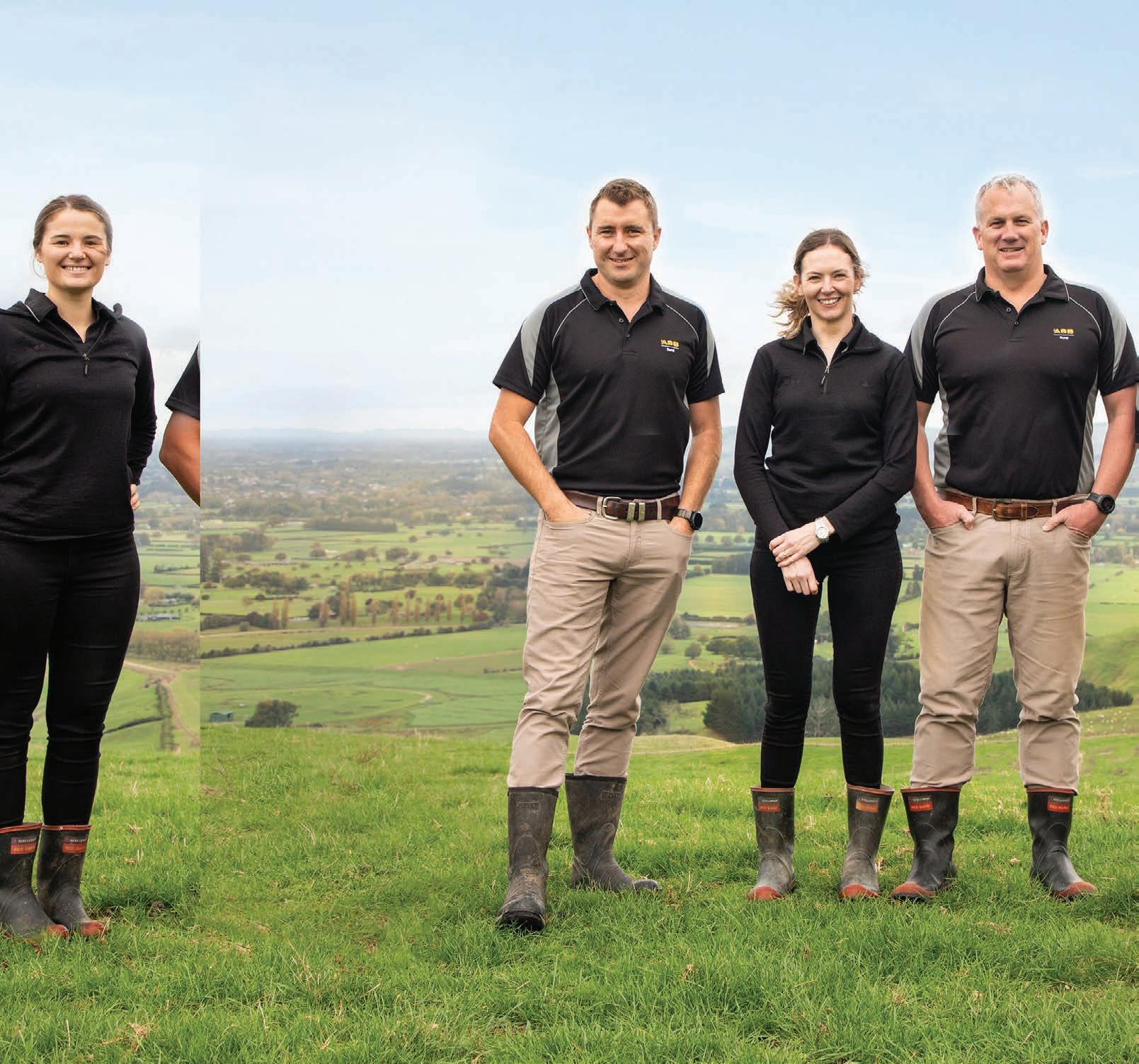
another important step towards the company’s goal to be the world’s most trusted naturepositive producer.
DAMAGE: Forestry Minister Peeni Henare says slash provisions have been tightened to reduce the risks of damage to downstream communities.
These make up 94% of the company’s emissions profile.
Silver Fern Farms chief sustainability and risk officer Kate Beddoe said the report is
“Robust emissions reporting and clear science-based commitments to reduce emissions are rapidly becoming a requirement to get on shelf with many key retailers. Being out in front on this issue positions New Zealand farmers extremely well from a market access, trust, and value perspective,” she said.
“We think full transparency on our emissions profile is vital for our social licence to operate and to demonstrate the hard work and efficiency across our value chain to make progress against a full set of Scope 1, 2, and 3 science-based targets.”
Silver Fern Farms’ Scope 3 emissions profile is dominated by indirect on-farm methane emissions derived from enteric fermentation (the methane produced when animals eat grass
and turn it into digestible energy) occurring in ruminant livestock (sheep, cattle, and deer).
The Inventory will be published annually.
A priority for the 2023 Inventory will be including onfarm nitrous oxide emissions (from fertiliser and animal urine) in Scope 3 accounting. It is expected this will further increase Silver Fern Farms’ reported emissions (although not materially).
18 FARMERS WEEKLY – farmersweekly.co.nz – October 9, 2023 News 18 Talk to your local Rural team today. ASB Bank limited 56160 26789 0823 We are here to support your rural business. ASB rural banking 0800 787 252
Staff



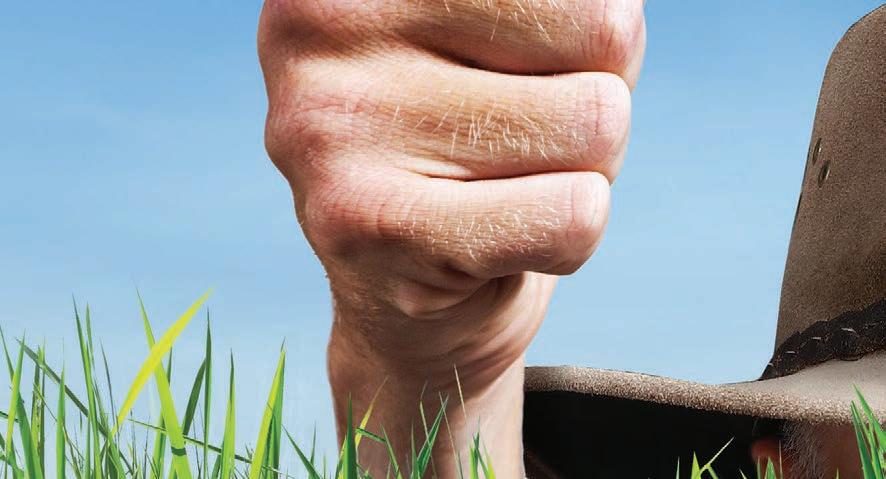

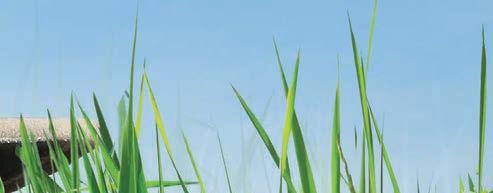
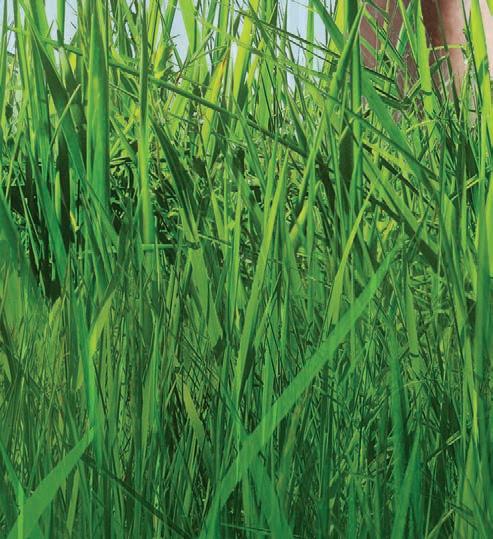





















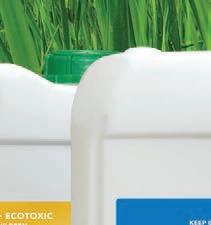

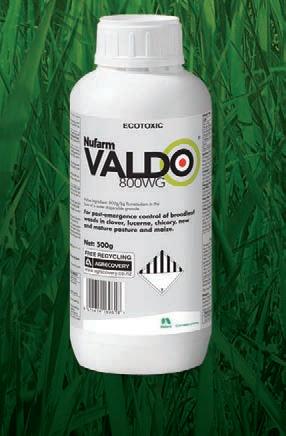



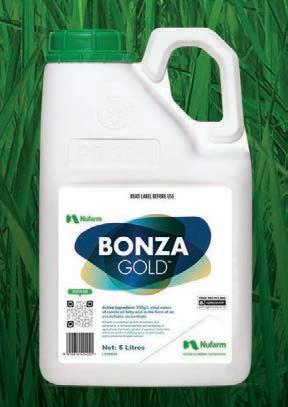

ONF208268NF Make tons with your new pasture investment You’ve done all the hard yards to get your new pasture in the ground. Don’t let weeds steal your pasture’s potential. Post-Em spray today. “Happy healthy cows make more milk” - Ben, Fonterra farmer from Tokoroa. Contact your local Rural Supplier or Nufarm Territory Manager today, or for more information visit nufarm.co.nz ®Thistrol Plus and ®Baton are registered trademarks of Nufarm Australia Ltd. ®Valdo, ®Dictate, ®Bonza Gold and ®Tribal Gold are registered trademarks of Nufarm Ltd. 208268 Nufarm FW New Pasture Advert 262x380.indd 1 21/09/23 2:50 PM 19
Letters of the week The value of leadership
Jason Barrier Waerenga
IT IS with some bemusement that I read your Special Report, which paints a picture of our rural leadership as victims, under enormous pressure from grumpy farmers.
I have no doubt that our leaders have the best of intentions and I take my hat off to all those who make time to represent us. But it is also important that leaders are held to account when they get things wrong.
When farmers see their leadership signing up to government policy that will financially debilitate their businesses, they have every right to be angry. What would have happened if sheep and beef farmers had not stood up against He Waka Eke Noa? Well, by now we would have been signed up to an agreement to pay punitive methane taxes that no other farmer in the world has to pay, without any real control over the huge risk of an escalating methane price.
An industry with a diversity of opinion is a healthy one. Far better to have these robust conversations now than to “follow the leader” like lemmings.
From the Editor

trail is not so much a strategy, but rather a lot of bullet points.
It’s been less a battle of ideas and more a battle of ego and identity.
We know more about what these political hopefuls stand against than what they stand for.
Any mention of tax is communism. Any talk of cutting red tape is Thatcherism. Any policy to protect minorities is woke.

There’s been a lot of name-calling and partisan pigeonholing in both national and farming politics in the past year or two.
National believes it is the better manager of the economy and that smoothing the regulatory path will give businesses the confidence to do what they do best.
To those leadership aspirants who complained that we farmers are “asking too much” of our leaders, I would respectfully encourage you to develop a wider understanding of the real financial challenges that government policy represents to many farming businesses. The excellent new report by Baker Ag and Beef + Lamb NZ on the cumulative impact of government policy is illustrative in this regard. Ask yourself how a Class 3 hill country farm with NPBT of $192,000 can be expected to cough up around $1.3 million in compliance costs and you may answer your own question as to why farmers are getting a little tetchy.
THE election campaign is supposed to be a time when a battle of ideas takes place. Candidates formulate their plan to build their version of New Zealand at its best, and ask voters to buy into it.
Farming leaders have called this election the most significant for the food and fibre sector in decades. Many want a break from what they see as an endless spool of red tape that’s wrapping itself around farm businesses, constricting growth.

Others want clear signals that NZ has a plan to retain its place near the top of the table when it comes to producing sustainable, efficient food.

What we’re getting on the campaign
The recent Rural Issues Debate cut through a fair bit of this bluster and rural voters got a pretty good sense of the world each party envisages us living in.
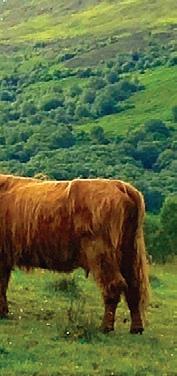

This week, we’ve asked each major party four questions on issues that we think are important to the farming family.
These are the issues at the core of flourishing rural communities.
What will it take to restore the confidence of the those working in the food and fibre sector and give them the belief they can make a life for their families?
How will we improve and protect the infrastructure that gets people from the home to the school, and products from the farm to the market?
What’s the plan to improve rural health, including mental health services?

And what is the best way to reduce agricultural greenhouse emissions?

Canada & Alaska
JULY 2024




Labour believes it is setting up NZ, and its farmers, to thrive in a world that’s changing quickly in terms of what it wants to buy and what it expects from those who make it.

It is easy to talk about “values and vitriol” from comfortable offices on steady salaries, but when businesses, communities and livelihoods across the country are being threatened by poorly thought-through government policy then, quite naturally, farmers get grumpy.
The real “victims” here are not those who put themselves forward as our leaders but those they purport to represent – everyday farmers whose balance sheets and succession plans will be blighted by such overbearing government regulation. The words of the great Tana Umaga ring in my ears: “We’re not playing tiddlywinks.”
At least, those appear to be the messages.

Too often this time around the policy has been obscured by the personal.
We’re told who not to vote for, rather than who we should believe in.
But identifying your enemies and building a strategy around that is not the path to lasting success.
Let’s support those with ideas that grow the good things we hold dear.
UK & Ireland
Best letter WINS a quality hiking knife



Send your letter to the Editor at Farmers Weekly P.0. Box 529, Feilding or email us at farmers.weekly@agrihq.co.nz


www.farmtofarm.co.nz Book Now for 2024 Tours! FARMERS WEEKLY ROP 10/23 70 x 262 116517
Chile, Argentina & Brazil
ph 0800 38 38 747
MAY 2024
20 Editorial
JUNE/JULY 2024
FARMERS WEEKLY – farmersweekly.co.nz – October 9, 2023 Opinion 20
Bryan Gibson
Managing editor
Just tell us what you believe in
We know more about what these political hopefuls stand against than what they stand for.
In my view ...
Lay a bit of wool and fire on the ballot
Tim Gilbertson
Hawke’s Bay
TWO important issues appear to have escaped the notice of our provincial electoral candidates – the collapse of the wool industry and pine trees.
From the 1850s until recently, wool was a major contributor to our prosperity.
Wool has almost all of the advantages of its synthetic competitors and almost none of the disadvantages.
Along with hemp, wool can replace a great many plastic products with items that, unlike their polluting oil-based rivals, are recyclable and leave none or only beneficial residues.
Extensive pine planting is out of control and a disaster, now and in the future. Unrestricted pine planting is a continuing economic, ecological and environmental horror show.
Forestry is all about the right tree in the right place.
A huge amount of the pine invasion is the wrong tree in the
wrong place, and a major worry is fire.
Successive governments have:
• Spent $1.6 billion rescuing Air New Zealand, a major polluter, from bankruptcy.
• Granted $160 million to NZ Steel, a major polluter, owned by a very profitable billion-dollar Australian Company.
• Given a billion-dollar tax break to the NZ film industry, a major CO2-generating industry, whose main NZ beneficiary is Sir Peter Jackson, one of our wealthiest citizens.
• Spent over $80m on trying to recover bodies from the Pike River Coal Mine.
• Given tens of millions in cheap electricity to the aluminium smelter in Southland, owned by one of the richest companies on earth, Rio Tinto Zinc.
• Spent $80m on a planned cycle way over Auckland harbour, which was scrapped. On and on it goes, with no end in sight: $80m already spent on the Three Waters fiasco and a $15bn pumped hydro power station in Otago still to come.
granted as “co-investment to partner with existing wool industry bodies”.
That’s a total of $35m for the wool industry compared to way over $3bn for just the few grants, subsidies and handouts listed above.
It makes a grown man cry.
Thousands of hectares of highly productive farm are planted in pine trees. There is no requirement to provide fire breaks or fire-fighting water ponds.

are inadequate and of little use off-road.
Forestry owners can walk away, leaving us to pick up the pieces, saddled with a massive increase in carbon.
The recent Canadian fires spewed 2 billion tonnes of CO2 into the atmosphere – the equivalent of an entire year of Canada’s “normal” annual emissions.
Our candidates are long on theory. Three hundred and fifty more doctors and free dental care by 2030 are wonderful ideas, doomed to fail because 40% of young doctors leave NZ within seven years of registration and there is a worldwide shortage of dentists and dental technicians . A struggling rural economy, failing country businesses, unemployed shearers, forest fires and cyclones are the more immediate problem.
We should concentrate on creating health, wealth and happiness in the countryside. We have productive land that we should be nurturing. We have proven industries we should be investing in.
• Given a $146m tax break to the gaming industry to promote a pastime that encourages sedentary pursuits, which contribute to obesity and its associated health costs.
The Ministry for Primary Industries has currently 17 projects to “develop high value strong wool products” with a combined budget of $15.7m.
A further $19.5m has been
There is no rule ordering them to insure their forests against fire or losses caused to communities thanks to their actions.
When the trees burn we have limited means of putting them out because our fire-fighting resources
Our candidates should be vocal about the need for woollen mills and fire-bombing aircraft. Not $3bn on another Auckland harbour crossing nobody needs and tens of millions on a Wellington road tunnel we can well do without.
Our would-be MPs face a simple choice: they can serve the longterm interests of our country or the short-term agenda of their particular party. Let’s hope they choose their country.
In defence of data in modern farming
Dr White is head of product at FarmIQ Systems
ARECENT opinion piece published in Farmers Weekly, “Death by data and other farm hazards” (September 18), criticised some aspects of today’s agriculture that I believe are core to its continual advancement. The article took issue with how “computer-generated advice” is being increasingly used to help guide farmers to make management decisions. It went on to imply that science is biased because it loves to average data so it can fit into the equations and models that scientists design.

It also questioned the ability of rural professionals today, stating that their advice is overly reliant on the outputs of software, leading farmers to potentially drive their farm systems beyond their inherent capabilities. Everyone is entitled to their own opinion – ideas and debate are a cornerstone of a healthy society that looks to improve over time. Here’s a short summary of what I believe and why I don’t agree with the positions and sentiment expressed in the article.
It’s puzzling that farming is often portrayed as simple and it is therefore assumed that the approach to it should be too. The
evidence suggests otherwise.
Not all farmers are the same –not just in the sense of the types of farming systems they operate, but in their debt levels, attitudes toward technology, number of staff and stage of career.
Similarly, not all farms are the same – they differ in size, climate, soils, altitude, aspect and topography. Beyond the farm gate, things such as product prices, exchange rates, rules and regulations also continually change.
All these things combine and interact in dynamic and unpredictable ways; being an
effective farmer is complex and challenging.
A lot of New Zealand farmers are exceptionally good at handling this complexity. Through experience and/or gifted ability, they are world class at combining all these sources of information and making decisions that maximise the profitable conversion of pasture into meat, milk or fibre.
There’s no doubt there is an artistry to their craft, but there’s also planning, measurement and decisions based on data.
There’s also no doubt that farming is an unusual business
because it often defines the essence, the identity of the people involved. Farmers don’t work on a business; they work in it. That’s what’s great about it. But farming practice has also been shaped and powered by science. Productivity and sustainability advances in agriculture haven’t occurred by accident; they have come from fundamentally understanding the chemistry, biology and physics of climate-soil-plant-animal systems.
Contrary to what the article’s author implied, the purpose of science is not to generate average data to agree with established understanding and models. Rather, its purpose is to unbiasedly test current understanding and challenge accepted norms and thinking. Similarly, the purpose of the mathematical models derived from scientific understanding of these complex systems is not to replace the need for decision-making by farmers. Their purpose is to identify potential consequences of different management decisions before they are implemented. Their purpose is to save time and expense by rapidly testing and comparing options, and to help refine the scale and timing of chosen management option(s).
They are there to complement
a farmer or rural professional’s intuition and thinking, not to replace it. For example, FARMAX technology does not replace the need for good stock management, but it does help inform farmers and consultants by identifying potential production, financial and environmental outcomes of the decisions they make.
Regardless of people’s attitudes to data, technology and science, the simple fact is that farming has changed, it will continue to change greatly, and data will drive that change. Food is always going to be in demand, but so are consumers wanting evidence –data – that the food they consume is good for them and the planet.
Today’s new farmers have much greater expectations of being able to make decisions based on data, just like any other industry or profession does.
The drivers of these expectations are numerous: better work-life balance, health and safety considerations, the increasing cost of labour and the accelerating development and use of remote sensing, artificial intelligence and robotics.
So, I believe the future of agriculture will not suffer “death by data”, but rather science, data, modelling and software will be pivotal to meeting the challenges NZ faces in order to keep producing the best food the world.
21 In My View
Todd White
FARMERS WEEKLY – farmersweekly.co.nz – October 9, 2023 Opinion 21
FIRE HAZARD: Candidates for Parliament ‘should be vocal about the need for woollen mills and fire-bombing aircraft – not $3bn on another Auckland harbour crossing nobody needs’, says Tim Gilbertson.
Our would-be MPs face a simple choice: they can serve the long-term interests of our country or the short-term agenda of their particular party.
ADDS UP: Regardless of people’s attitudes to data, technology and science, says Dr Todd White, the fact is farming has changed and it will continue to change greatly – and data will drive that change.
Let’s hear less from Greater Wellington
Alternative view
Then in rides the GWRC on a white charger, telling us that its climate change initiatives are even more rigorous than those of central government.
Unsurprisingly, I have several issues with that position. The first would be to question the qualifications of the GWRC in the climate change space.
Central government can call on the expertise, or otherwise, from the Ministry for the Environment, Department of Conservation, Ministry for Primary Industries, Ministry of Business, Innovation and Employment and the Environmental Protection Authority. What resources is GWRC relying on?
THE general election is upon us – thank heavens. I’m over it.
The climate change policy debate has been interesting, if inconclusive.
For a start, every party except ACT is committed to net zero by 2050. National has said it will scrap some of Labour’s climate policies but has been vague on what it will do to replace them.
All that indicates to me that there will be even more of a shambles on climate change legislation after the election than currently. That’s depressing.
On top of that we have an additional problem in the southern North Island and that is the extreme whims of the Greater Wellington Regional Council (GWRC).
GWRC has a climate change plan, which I’d suggest is far more destructive than that supported by central government.
You’d have to ask why.
As you know, I consider many of the decisions coming out of the Wellington bureaucracy to be deeply flawed. Those coming out of GWRC are, in my view, even more so.
Consider the logic. We had the zero-carbon legislation, the Climate Change Response Act, and the Climate Change Commission all having input into a national strategy.
That the GWRC track record in environmental issues is flawed is evidenced by the wetland fiasco in Upper Hutt.

A developer wanted to develop an area. The GWRC refused to allow it, saying the development would interfere with an established wetland. The Environment Court ruled there was no wetland. The developer is suing the GWRC for $20 million. Such is the environmental expertise of the GWRC.
Mind you, that didn’t stop GWRC Climate Committee chair Penny Gaylor telling me that its approach would “strengthen the council’s reputation as a climate change leader”.
I would humbly suggest that the GWRC would be better off running a remotely efficient public transport system than trying to be a leader in an area where I’d question its expertise.
I also remain totally unimpressed with its 16.94% rates hike. It put part of that increase down to “inflation and rising interest rates”.
Doesn’t it realise that its ratepayers have the same problems and that a 16.94% increase is ridiculous?
Another issue is that central government policies, regulations and legislation are transparent. While we may not agree with government initiatives, we know the reasons behind them. The opposition can question and
Low Input High Production
debate. The process is transparent. That’s not the case with much of local government.
What the GWRC has done is to set a target of a 50% reduction in all GHGs by 2030. That’s less than six and a half years away.
That’s both ridiculous and totally impractical. No one else has done it so why would the GWRC?
Reading through the myriad of platitudes in its reports, the only mitigation option I could see was to plant pine trees. That’s unimaginative, economically destructive and a massive fire hazard. It had other options, like promoting genetic engineering.

The tragedy is that the GWRC isn’t the only climate missionary trying to hamstring the productive rural sector. Now the Aussie banks are wanting to get involved.
BNZ has a dairy emissions reduction target of 11% by 2030. ANZ appears to be heading down the same tortuous track.
As with the GWRC, I’d question the banks’ ability to make an informed decision on agricultural emissions. The fact that they announced their ridiculous targets at the busiest time of year for dairy farmers shows they also don’t understand the practicalities of agriculture.
I’d further question whether they’ve installed the same targets in Australia.
My research also shows that the Australian banks have funded $A8.9 billion ($9.5bn) to coal, oil
and gas, $A385 million to expand the fossil fuel industry and $A464 million to some of the most climate destructive companies in Australia.
For them to then target New Zealand farmers to reduce their environmental impact is rampant hypocrisy and unscientific.
Fortunately for farmers Feds, Beef + Lamb NZ and DairyNZ have released a research note by leading scientists from Oxford University saying that our methane targets are wrong and insisting on a


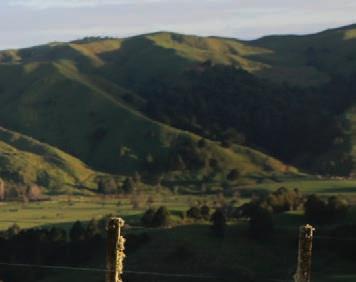

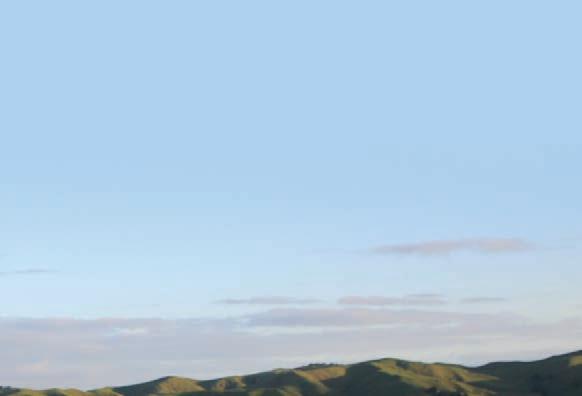
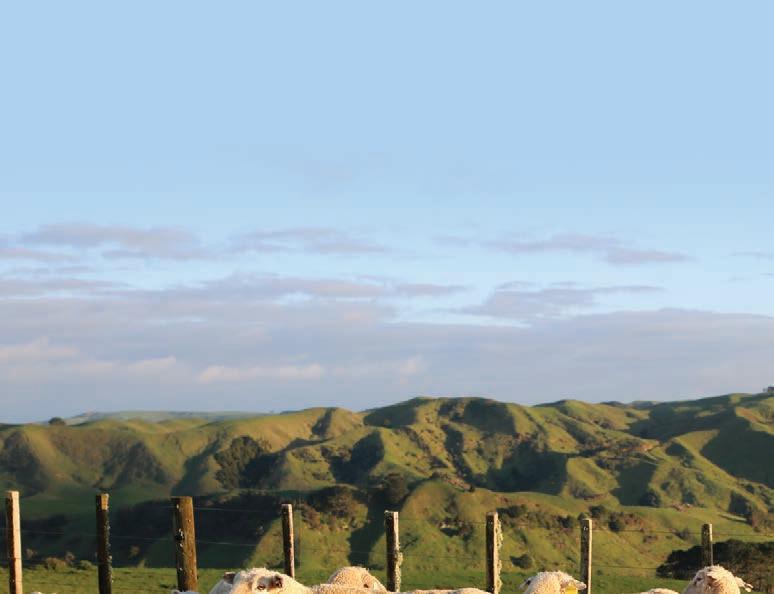
FOCUS: Alan Emerson says GWRC would be better off running a remotely efficient public transport system, rather than trying to be a leader in an area where he questions its expertise.

science-led methane review.

They believe a 15% reduction in methane will achieve the nation’s goals. I agree.
The organisations are to be congratulated for their research. It is detailed, definitive and non-political.

They just need to make sure that the GWRC and the Aussie banks get copies. Unlike those organisations’ ramblings, the Feds, Beef and Lamb and DairyNZ evidence is highly credible and scientifically robust.
Cheers to our very own Hairy Maclary
Meaty matters
VANESSA and I put our old dog down last weekend after he had almost reached his 18th birthday, which was a very sad although clearly inevitable decision.
George was a Tibetan terrier who we acquired a week before we moved out of Auckland permanently to live on a 2ha section near Matakana with a magnificent view out to Great Barrier Island and within easy reach of Omaha beach.
In his younger days he was very high spirited and presented us
Continued next page
Waimai rams are bred to give you a low input flock, with selection for facial eczema tolerance, worm resistance, low methane, low dags and large breech. At the same time, their production traits make you money: strong growth, high fertility and good survival. Join us on our journey toward creating a more profitable low input sheep.
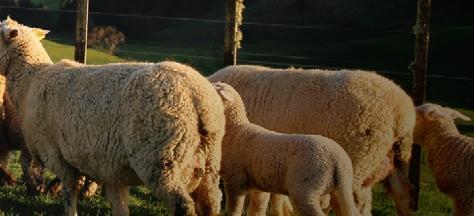


ALASTAIR REEVES 07 825 4925 or 027 457 3615 waimairomney@gmail.com waimairomney.co.nz OPEN DAY See our stock on-site at 841 Waimai Valley Rd Thursday 12 October, 10am–4pm ELITE RAM SALE On-site 841 Waimai Valley Rd. Thursday 2 November, 1pm. We will also be using online auction platform bidr.co.nz. 150 Romney rams and 40 CharaBlack terminal rams available. Private treaty rams enquiries from 4 November.
22 Opinion FARMERS WEEKLY – farmersweekly.co.nz – October 9, 2023 Opinion 22
Alan Emerson Semi-retired Wairarapa farmer and businessman: dath.emerson@gmail.com
Allan Barber Meat industry commentator: allan@barberstrategic.co.nz, http:// allanbarber.wordpress.com
The case for calm on alternative proteins
Eating the elephant
their argument turned out to be compelling, I would have a duty of care to my family to seriously consider selling the farm and maybe investing in a precision fermentation startup.
Our conversation covered a lot of ground and many of their points went over my head. We covered the basics – like what it takes to physically produce such a variety of protein types. Then we talked through the cultural aspects associated with sharing food, and how these social norms could stop or slow consumer uptake. Science often sounds scarier than nature when it comes to food.
Throughout our conversation it became clear that scientists and farmers are trying to solve the same problem in very different ways – the need to produce protein without any negative environmental and social costs.
both technologies are trying to mimic the inner workings of what I have out in my paddock. I have a precision fermentation tank (the rumen in every cow) and plenty of cellular meat (their muscle tissue). The question is, who has the harder challenge? The scientist looking to remove the animal from the system, or the livestock farmer looking to remove the emissions from the animal?
In this series, the lads each explore an unpopular opinion in farming
SHARING food with others is a symbolic experience. At its core, it’s about respect and trust. My wife and I had the pleasure of breaking bread with two recent PhDs from Oxford University. Both were scientists. One of them specialised in alternative foods – specifically precision fermentation (producing protein similar to milk and eggs in large fermentation tanks) and cellcultured meat (meat-like protein grown from animal stem cells). As a sheep and beef farmer, I approached the conversation with both caution and curiosity. If
with frequent challenges, not least his resemblance to Hairy Maclary, both in appearance and character.
We took him to dog training classes in Warkworth, where he caused total chaos by leading a breakout around the A&P
I have long held the view that alternatively produced proteins will act as a substitute to any product that is an ingredient (for example, milk powder) or is provided to feed the masses (for example, beef mince). The tipping point for mass consumption will be based on price. When the cost of producing the same amount of protein is cheaper in the lab than in the paddock, we will see increased demand for alternative proteins. The simple reason being that many primary products are commodities with consumers being very sensitive to price.
I am normally drawn to novel solutions such as cellular meat and precision fermentation. However, what struck me in this case is that
Showgrounds, and a walk on the beach often resulted in him latching on to another dog owner and disappearing into the distance. Many was the time we drove home and waited for a phone call to tell us where we could collect him. One holiday weekend I let him out of the car at the beach and realised with horror he had lost his collar
Some numbers put agricultural methane emissions at 43% of New Zealand’s greenhouse gas emissions. A number that is very high compared to other countries. According to our dinner guests, methane emissions are potent, but short lived, whereas carbon emissions are less potent but long term. What these PhDs helped me appreciate is that we – the livestock farmers of NZ – have an opportunity to almost halve our nation’s greenhouse gases numbers in a short period when we get the right tools.
A scientific race has begun between PhDs like those around our dinner table and the scientists working in ruminant-based livestock systems. The latter are busy creating vaccines, feed additives and other solutions to reduce the emissions profile of livestock.
Less capital is flowing to reduce the emissions from livestock, given the area is not shiny and new like alternative proteins.
But here’s the key takeout – even with all their capital, the PhDs agreed that a solution to reduce methane emissions in ruminants will likely scale sooner, and

with his name tag, so I had to try to keep up with him for 10 minutes before he disappeared through an unsuspecting family’s open door. I staggered in and asked them to keep him shut in until I could come back in the car to collect him.
One day he was unwise enough to try rounding up some sheep on the other side of the drive and shot back through our fence squealing loudly, after a ewe had backed him into a corner and given him a head butt.
Over the first couple of years we were better known as George’s owners than for anything notable we had done ourselves.
On another occasion he disappeared off our section and raced down the driveway, successfully stopping the traffic in both directions on the road between Matakana and Leigh.
This was the point when we concluded we had to take him to the vet for an operation, having decided we were unlikely to find a mate for him, the main reason we had left him entire until then.
To reassure readers who will be muttering about our irresponsibility for allowing him to run riot, there is no evidence of George having sired any puppies in the area; he was just
BREAKING BREAD: Whatever vehicles we opt for, all of us are on the path to a sustainable menu, David Eade says.

Who has the harder challenge? The scientist looking to remove the animal from the system, or the livestock farmer looking to remove the emissions from the animal?
potentially result in a bigger shortterm impact than both cellular meat and precision fermentation can deliver.
In short, pasture raised meat still has a place on the dinner plate and innovation within this space represents one of the greatest contributions our sector can make to a low-emissions, liveable future. I find that exciting.
It is conversations like these that help reframe perceived threats to our sector. Potential solutions are never black and white – the future
exceptionally gregarious and independent.
At the age of six we finally had a relatively manageable dog and we heaved multiple sighs of relief. Fortunately he retained all the character traits we loved so much, while no longer indulging in his worst excesses.
He was with us for the 18 years of our life in the country, helping us get to know a whole new group of friends and joining in at several events, such as when we had to prepare for the Warkworth A&P Show and he was able to range across the showgrounds in the days before the actual show.
George
We had been somewhat nervous about leaving the city in the first place, although I was originally brought up in the Cotswolds and retained my love of the country. But George made the transition easier than would otherwise have been the case with his personality and eagerness to get to know new people and their dogs.
is not 100% red meat or alternative meat, farms planted in 100% pine trees or no pine trees at all. The future is one of nuance.
Put another way, the consumer of the future will likely enjoy a diet that is free of most, maybe all, environmental and social sideeffects. She will start her day with a smoothie made with precisionfermented oat milk, lunch will be a cellular meat stir fry, afternoon snack will be cultured yoghurt with a handful of nuts, and that night she might enjoy a carbon-positive steak, reared on a Kiwi farm. All the items on her day’s menu are yet to be achieved on a commercial scale because they all face the same challenges of capital constraints, scientific challenges or a combination of both. But all of us – livestock farmers and PhDs – are on the pathway to a sustainable menu, and there is no going back.
He made himself known to our driveway neighbours and kept us company, not always helpfully, while we developed our garden and maintained the section, covering large distances following the ride-on mower.
Viewing his life through another lens, his span covered almost all the years since I began writing this column for Farmers Weekly and he lived through the final three years of Helen Clark’s government, nine years of National and six years of Labour with help from NZ First and the Green party.
The chaotic prospect of National, ACT and possibly NZ First or Labour, Greens and the Maori Party may have proved more than he could take, so with immaculate timing he got out just three weeks before his 18th birthday, which also happens to be Election Day.
We already have another Tibetan terrier, Hugo, who came to us as a puppy more than eight years ago, so we have had our replacement in place for quite some time. He is a totally different character, much more relaxed and very affectionate, whereas George was more standoffish.
He was a challenging and rewarding dog who we loved dearly – it really is the end of an era.

23 FARMERS WEEKLY – farmersweekly.co.nz – October 9, 2023 Opinion 23
David Eade
David Eade is a Whanganui sheep and beef farmer with a finance background, specialising in investments within the primary sector. eating.the.elephant.nz@gmail.com
Continued from previous page
made the transition easier with his personality and eagerness to get to know new people and their dogs.
CURIOUS GEORGE: George may have resembled Hairy Maclary, a ‘small dog of mixed pedigree’, but he was in fact a Tibetan terrier by breed.
Rural bankers keep pace with changing times
The close but sometimes contentious relationship between primary producers and their rural bankers has evolved to include on-farm emissions, which ASB’s new head of rural banking, Aidan Gent, sees as a great opportunity, he told Hugh Stringleman.
THE fastest rise in the Official Cash Rate in history has pushed rural borrowers and their bankers into a very challenging set of circumstances, ASB general manager, rural, Aidan Gent says.
From the bottom of the OCR four years ago until now there has been a 4.5% increase and the financial markets have priced in at least one more hike before February.
Banks are required to hold more capital against a farming loan than a housing loan, hence the differential interest rates, Gent says.
They are helping their farming customers, where possible, to cope with rising interest rates, on-farm cost inflation impacts and falling commodity prices.
“History tells us that high inflation is very hard to get on top of, and that it is always darkest before dawn,” Gent says.
“Those businesses that control their costs very well, and optimise the drivers of cash flow, will come out of the downturn more quickly.”
From the end of this financial year banks will be required by the Financial Markets Authority to report on the farm emissions and reduction plans of their customers. Farmers need to know their numbers and their relation to productivity in kilograms of milksolids, fruit or meat and wool.
“The drivers of sustainability are the same as those of productivity and financial results.”
Gent has a Bachelor of Commerce from Auckland University, as he wanted to stay within driving distance of the family farming activities back in Ruawai, on the Kaipara harbour, Northland.
His father, Greg Gent, has held high-level governance positions for the past 30 years and mother Ann Flood is a Kaipara stalwart who dairy farmed on her own account before marrying.

Within the family succession plan Aidan has one-third ownership of a 400-cow dairy farm and tries to get back there as often as possible to “milk cows and drive tractors”.
His enjoyment of outside work includes operational management of this shared-ownership dairy farm, run by a very good lowerorder sharemilker.
Gent was a Young Farmer Contest grand finalist for Northern region in 2009.
Coming up to two years with ASB, he has 14 years’ experience in banking, having worked in Canterbury, Taranaki and Australia before returning to Auckland and Northland.
ASB has a rural workforce of close to 170 people spread throughout the country.
In the family succession plan, Aidan Gent has one-third ownership of a 400-cow dairy farm. He tries to get back there as often as possible to ‘milk cows and drive tractors’.
Its most recent market share of primary sector lending is 17% and Gent says ASB’s growth in the past year was three times that of the sector growth rate as a whole.
ASB puts effort into recruiting graduates by attending university careers opportunities and making sure that people know the number of ways they can enter the food and fibre industries, he says.
The reputation of ASB in the primary sector is strong and its market share is consistent across the regions, he says. The proposition to farmers rests on the quality of the rural bankers and their interactions and upon ASB’s longevity and its confidence through economic cycles.
ASB also backs Youthline, which provides real help to rural people struggling with mental health.
“We have funded extension of the times Youthline is able to take calls and we know that rural people are users because of their locations.”
Support of St John Ambulance fits rural people in the same way, he said.
Gent is certainly energised by the role to which he has been recently appointed and the cyclical circumstances.
“Our role is to help customers understand and manage the risks in their business.
“Rural banking 10 years ago is very different to today.
“We now talk to them about their farm emissions and their plans for reducing or mitigating those emissions.
Most farmers now have a group of rural professionals around them who need a deep understanding of the business, the platform and the requirements.
“How do we view these requirements as an opportunity, to set your business up to be more successful in five or 10 years?
“To be trusted advisers we need to spend more time with farmers.
“In days gone by rural bankers coming up your driveway wasn’t always a good thing, but now more face-to-face meetings help add value to the relationship and to the customer’s business.”
Gent was asked about the tenor of the relationship, as perhaps banks could be viewed as part of the burden of regulations.
“No one person is the author of these requirements, which are ultimately requested by the people who buy our products and invest in our businesses through bank deposits.
“But how some of these have been implemented have made it more challenging on farm, without alignment.
“Farmers have spent decades adapting and evolving on the basis of consumer expectations and they will do so again.”
When farmers have moved through the near-term lump of requirements that have come at once, that will be a platform for growth and opportunity, he says.
Dairying tends to get the spotlight, the statistics and the analysis, but Gent says sheep and beef farmers face more change over a shorter period.

Opuha Water Ltd appoints new CEO
INVOLVEMENT with irrigation schemes in his role as national water director for Downer NZ has landed Bjorn Triplow the top job with Opuha Water.
Opuha Water Ltd (OWL) chair Ryan O’Sullivan announced the irrigation co-operative has secured Triplow as its chief executive.
Triplow take up his position with Opuha on November 6.
He has extensive experience in the civil water and infrastructure industries.
“In his current role he had involvement with irrigation schemes which proved to be a catalyst for his interest in the role at Opuha,” O’Sullivan said.
“With 15 years’ experience successfully leading infrastructure businesses and associated workstreams, Bjorn brings this very relevant and valuable experience to Opuha as we continue our commitment to enabling sustainable growth for the company, our community and continuing our commitment to benefit the cultural, recreational and commercial communities of interest in the Timaru District.”
Triplow has been with Downer since July 2019.
Prior to that he was with Citycare Ltd in Christchurch for 10 years.
Born in Gisborne, Triplow lives in Christchurch but has committed to being based locally during the week, with a medium-term plan to move closer to Pleasant Point where the OWL head office is located.
Triplow takes up the chief executive role from Andrew Mockford, who left OWL at the end of July to take up the operations manager role with Mid Canterbury water distribution company, Rangitata Diversion Race Management.


In his five years with Opuha Water, Mockford was successful in expanding the team across multiple business units to better meet the external demands placed on the business in the regulatory financial and dam safety space.
He oversaw the implementation of a much-enhanced automation programme across surveillance, water control and measurement and scheme network communications.
Formed in 1846 by pioneers like Sir John Logan Campbell, ASB has always catered for farming, including ownership since 1933 of the 8ha Mt Albert Grammar farm, which it gifted to the school last year.
It sponsors Rural Support Trusts and the Dairy Women’s Network nationally along with many regional organisations and events.
“Farmers in that industry don’t have the scale and the sector knowledge and advice networks.
“Yet the sustainability opportunities, especially for wool, are greater.”
“The best use of some land might not be for animals, and the integration of dairying and beef has potential for reducing emissions intensity.”
In his senior management role at Downer Triplow is responsible for business development, stakeholder engagement, financial and commercial management, and operational oversight throughout New Zealand.
The role provides executive management with industry insight, strategy, governance, and guidance to ensure the company is best position in the market; all attributes he will bring to the irrigation company, O’Sullivan said.
24 People FARMERS WEEKLY – farmersweekly.co.nz – October 9, 2023 People 24
CHANGE: Aidan Gent says dairying tends to get the spotlight, the statistics and the analysis, but sheep and beef farmers face more change over a shorter period.
HANDS ON:
Annette Scott PEOPLE Water
GO WITH THE FLOW: National water director for Downer NZ Bjorn Triplow is the new CEO of Opuha Water.
In days gone by rural bankers coming up your driveway wasn’t always a good thing, but now more face-to-face meetings help add value to the relationship and to the customer’s business.
Aidan Gent ASB
Innovator boosts crop value with science
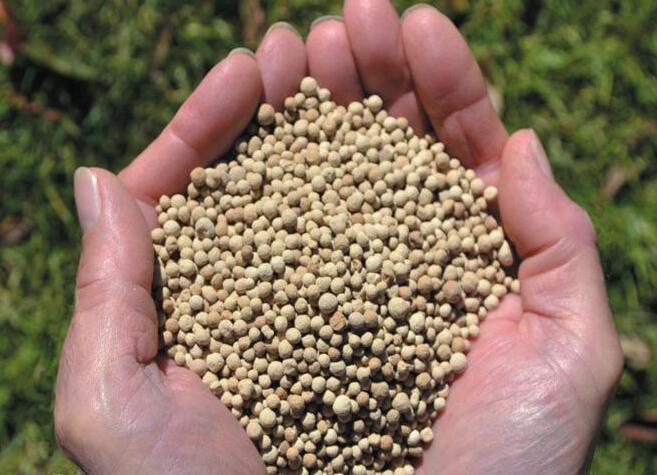

A food technologist and entrepreneur is finding unique, healthy compounds in New Zealand food, adding value to niche crops. Richard Rennie reports.
FOOD technologist and entrepreneur Brendan Vercoe is making his mark pulling unique, healthy compounds out of New Zealand food, and bringing more value to some of the country’s niche crops.
Those efforts are already being recognised, with Vercoe being the only primary sectorrelated nominee for this year’s professional commercialisation prize at the KiwiNet Research awards.
The son of dairy farming and kiwifruit growing parents from Te Puke, Vercoe has had a lifelong interest in what grows well in New Zealand and what can improve its value.
“The clean green marketing message is really not enough anymore and it is a case of having to identify what is really different about our produce, what can it deliver that other sources of that produce can’t,” he said.
That desire was buoyed by time spent working at Fonterra as a global innovation manager,

Ultimately, we would like to see blackcurrants replace some of the area currently used for dairying in Canterbury now.
Brendan Vercoe 2before Performance Nutrition
learning more about what can be unpacked from raw products that contain particularly high quality compounds.
His latest foray down this route has been with blackcurrants, the staple of Kiwi kids’ after-school beverage in the form of Ribena. But his company’s 2before performance drink supplement
BERRY GOOD: KiwiNet commercialisation
finalist Brendan Vercoe sees potential to expand NZ’s blackcurrant crop to meet a growing recognition of its nutritive value.
goes well beyond any claim about the goodness of blackcurrants in general, to identify their value specifically for enhancing athlete performance and recovery.
“New Zealand-sourced blackcurrants are particularly high in anthocyanins, they have a unique ratio of pro and antioxidants which, taken before exercise, switch on the body’s own defence systems to provide multiple benefits.”
Anthocyanins are the compounds that give darkcoloured vegetables and fruit their pigmentation and are linked to boosting antioxidant levels, the substances that reduce damage caused by cell oxidation. Pro oxidants are chemicals that induce cellular stress.
EV charging network powers up

with the industry to ensure charging capacity grows, and in front of demand,” Woods said.
of options available to them while out and about, and especially on longer journeys.
Vercoe said NZ blackcurrants achieve their well-centred ratio through a happy combination of latitude, light, UV levels and soil types that create particularly vigorous, nutritive fruit types, not limited to blackcurrants.
The company now has endorsement from some leading Kiwi athletes, including longdistance runner Sam Tanner and shot putter Tom Walsh.
Vercoe said NZ’s small supply of Canterbury-grown blackcurrants is starting to reach its limits and he hopes to see more growers step up to supply the raw product.
“Ultimately we would like to see blackcurrants replace some of the area currently used for dairying in Canterbury now. It is the ideal place to grow them, and they have been identified as a viable alternative crop to have in the region.”
The company is targeting dieticians and athletes in the United States, Australia and New Zealand, keeping the focus on “performance and recovery”.
Vercoe said they have resisted the temptation to leverage off other benefits that blackcurrants have been linked to, including improved brain function, better eyesight, and boosted immunity.
“We would love to see other brands in the market supporting NZ growers and promoting

their product’s strengths. We are currently doing most of the education.”
Vercoe’s other success in the field has been bending NZ-grown hops to the task of being an appetite suppressant.
“The success there was really thanks to good science done by Plant & Food Research.
“Taste receptors have been found to be in our intestine, and by isolating the bitter compounds in hops and delivering them to those receptors through a slowrelease capsule, it prompts the intestine to switch off the satiety receptors.”
The active his company isolated is marketed as Amarasate. It is the key compound in the appetite suppressant product Calocurb, made in NZ.
With his key focus now on growing the 2before brand, Vercoe is excited by the wider prospects that ingredient extraction could hold for NZ’s primary sector as the physical limits of additional production are reached.
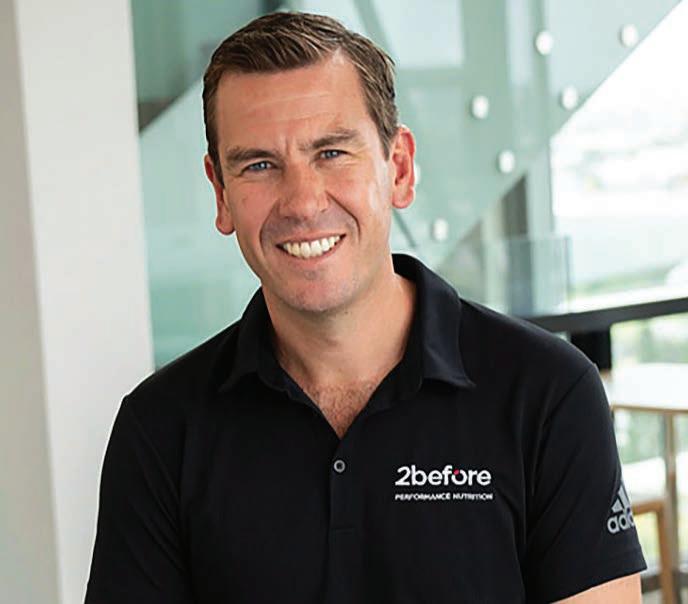
“It is also a good means of dealing with our waste streams.
“We are sending our most impeccable fruit and produce overseas, and do reasonably well with managing the other fruit, but we could do better, and this is one means of achieving that.”
THE public EV charging network has received a significant boost with government co-funding 100 new chargers on 19 popular New Zealand holiday routes, and many are expected to be up and running by Christmas.
Minister of Energy and Resources
Dr Megan Woods said the focus is on major highways, thoroughfares, and places New Zealanders regularly visit while out and about, such as shopping.
“Our EV sales keep increasing month on month, so we’re working
“We have hit the previous EV charging target of one charger each 75km on our state highways, but our new vision is that New Zealanders should be able to charge where and when they need to.
“The projects that have received co-funding today show the full mix of options EV drivers can expect.”

EECA (Energy Efficiency and Conservation Authority) research shows that while 80% of people do more than half of their charging at home, Kiwis also need a range
Woods said new chargers will be situated at places like shopping centres where people may be parked for up to a couple of hours.
“To help with longer journeys, the government is co-funding high-speed chargers on main highways at 19 popular holiday routes including Bombay, Turangi and Wanaka. Also included are the country’s first charging ‘hubs’ where up to 10 highspeed chargers will sit alongside amenities like food options and toilets.”
C M Y CM MY CY CMY K Farmers Week y NZ Sep2023 ai 1 6/09/2023 2 27 57 PM Farmers Weekly NZ_Sep2023.ai 1 6/09/2023 2:27:57 PM 25 Tech FARMERS WEEKLY – farmersweekly.co.nz – October 9, 2023 Technology 25
Staff reporter TECHNOLOGY Transport
TOPPING UP: While 80% of people do more than half of their charging at home, Kiwis also need a range of options available to them while out and about, and especially on longer journeys.
Time for a


Federated Farmers has had a number of members reach out in the past few weeks wanting to better understand our position on the use of genetic modi cation, genetic engineering, and gene-editing in New Zealand –so I wanted to put pen to paper and share some views.
I completely understand that this is a really signi cant issue for a lot of people and that there will be a lot of di erent opinions right across our membership.
This will range from those who are complete opposed, right through to those who think it’s the only way forward, and everything in between.



For the avoidance of doubt, Federated Farmers’ position is that we strongly believe it’s time for New Zealand to have a national conversation about things like geneediting where we consider all the potential bene ts, weight them up against any risks, and decide how we want to move forward together as a country.

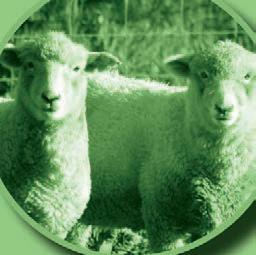

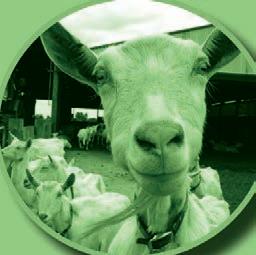

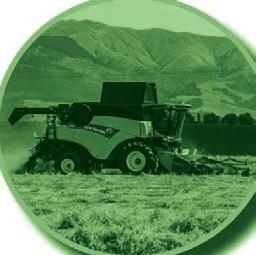

The world has really changed since we last had this discussion in the late 1990s and early 2000s.
The science has continued to develop at breakneck speed, and so has our collective understanding of some of the big global challenges we are facing like climate change and biodiversity loss.
We’ve all got a lot on our plate, and we need some real solutions.
That doesn’t necessarily mean GE is
a solution that we will move forward with, but as a country we shouldn’t just close the door on the issue – we need to continue to revisit it and to be open to new technologies like gene-editing that have a lot of potential to help not just farmers, but all New Zealanders when it comes to things like healthcare. We would be doing ourselves a huge disservice as a country if we weren’t even prepared to have that conversation.
That’s why in February this year Federated Farmers wrote to the ve political parties in Parliament (Labour, National, Green, ACT, and Te Pāti Māori) asking them to commit to a review of New Zealand’s rules
















LET’S TALK: Federated Farmers president Wayne Langford says the potential opportunities from gene editing are too great to just leave them sitting on the table without even taking a look at them.

relating to genetically modi ed organisms.
That advocacy has prompted both major political parties, and some of the smaller ones, to commit to take another look at whether our current rules are t for purpose.



The potential opportunities here are too great to just leave them sitting on the table without even taking a look at them.
Could gene-editing help us completely eradicate pests like possums that are spreading disease and decimating our native forests?
Could GE ryegrass lower our greenhouse gas emissions or improve our resilience to drought?

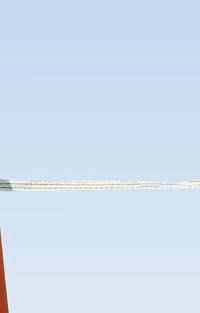
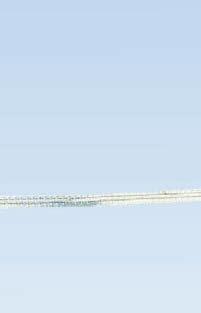


Could it increase our farm
production? These aren’t just imaginary concepts – they’re real possibilities.
Of course, there will always be risks and trade-o s that need to be considered too.


There are some legitimate questions that still need to be answered about whether the use of GE would have unintended consequences or devalue New Zealand’s international brand. Do our consumers around the world care about our GE Free status, and more importantly, are they willing to pay a premium for it?








I also wonder what they would place a greater premium on: Our GE Free status or having a lower greenhouse gas product?

As a country which is completely reliant on trade, with 82% of our exports coming from the primary sector, of course we need to continue to look closely at what our customers are asking for and respond to those preferences –because they’re ultimately the ones who buy our products.
When I look at countries like Canada and Australia, who do allow GE cultivars to be grown, they still maintain a very strong reputation for their high-quality food exports.
At the end of the day, every consumer is di erent. We all have our own values, views, and preferences – we see this all the time with food. Some people choose to only eat organic; some choose to be vegetarian. Some people make their decisions depending on quality, price, or availability. Farmers then
respond to those market signals when making decisions about what they produce and how they produce it – and GE would probably be no di erent.
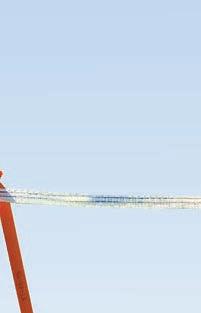
As the president of Federated Farmers what I would really like to know is whether individual farmers would be able to make that choice for themselves, or would that decision be taken away from them because of the choices of their neighbour? In other words, can we have a situation where some farmers are producing ‘GE Free’ products while others are using GE technology?
That needs to be looked into more and explained clearly as part of the conversation. Surely it must be a possibility when a lot of the soy milk sold in NZ supermarkets is labelled as ‘GM Free’ but is produced in the United States – a country that has a huge amount of GMO soy being grown. Not that this dairy farmer is buying soy milk.
Regardless of where you stand on this issue it’s really important that we do have the conversation – and that we have it in a respectful way. There should be absolutely no tolerance for misinformation or scaremongering, but equally we can’t just dismiss legitimate concerns.
Federated Farmers will be discussing our position on GE at the end of November, so if you’re a member who has a view on the topic then we want to hear from you before then. Make sure you reach out to your local Feds team, share your views, and join the conversation.
26 Fed Farmers
Vol 1 No 5, October 9, 2023 fedfarm.org.nz STRENGTH IN NUMBERS. ARABLE HIGH COUNTRY GOATS RURAL BUTCHERS MEAT AND WOOL DAIRY When it comes to farmer advocacy, there is strength in numbers. And that number is one. JOIN TODAY! 0800 327 646 fedfarm.org.nz
FEDERATED FARMERS
conversation
GE?
about
Wayne Langford
Federated Farmers President
Don’t risk it with ‘handshake’ deals
Unfortunately, a handshake isn’t worth what it used to be – and that puts everyone’s business at risk. That’s why Federated Farmers and Rural Contractors New Zealand have worked together on a gold standard forage contract to safeguard everyone’s business interests against volatile fuel and fertilizer prices.
A new and improved iteration of that Forage Trading Agreement is now available for farmers – just in time for the upcoming maize growing season.
“This contract gives growers, harvesters, and purchasers an agile contract that can address spikes in the cost of those two key inputs to ensure nobody nds themselves unfairly out of pocket,” Federated Farmers arable chair David Birkett says.

From a legal standpoint it can be litigated, which means that if that farmer or contractor wants to take that other party to court, they have a contractually binding legal document.
Laura Sandford
Federated Farmers national sales and engagement manager
While the massive jumps in prices for fuel and fertiliser that occurred in 2022 have settled back to an extent, disruption from the war in Ukraine, wider geopolitical tensions, and news last month that oil prices are edging towards $US100 a barrel, all add uncertainty and risk.
On top of that, El Niño weather brings the prospect of a dry and very windy summer, which could lead to feed shortages if pasture is fried.
Federated Farmers and Rural Contractors NZ continue to contract

NZX to develop and regularly update fuel and fertiliser cost reference indices.
Armed with that independent data available to members through both organisation’s websites, growers and contractors can take advantage of the exibility of the Forage Trading contract to select what costs they want to move, and at what rate.
“It doesn’t tell either party to the contract how to price, as everyone has their own cost model and pricing model. The template provided with the agreement is a guide to assist with being able to calculate the change in price,” Birkett said.

One improvement to the 2022 version is a cut to length.
“Some of the feedback we got last year was that it was too long; some people put it in the ‘too hard’ basket because there was too much ne print and explanatory notes.”
The 2023 contract is only ve pages – less than half that of the 2022 model – but it still covers o all the essentials, as well as that allimportant adjustment schedule and space for parties to write in other agreed additional terms.
One Federated Farmers maize grower member who didn’t use one of the new contracts last year told us he was out of pocket when a farmer who had ordered 150 tonnes fronted up at the March harvest and only agreed to take 100 tonnes. Grass growth had been better than anticipated and he didn’t want the expense of the other 50 tonnes.
A handshake agreement, when conditions and input variables aren’t too much out of whack, are usually ne.
But not so many years ago when the dairy payout slumped to $3.50/kg, more than a few grazing contractors and graziers went under because some dairy farmers didn’t pay them or were really late with payments.
Laura Sanford, Federated Farmers national sales and engagement manager, said that kind of volatile situation may be here again and growers, contactors – and buyers – deserve a formal agreement that can, if push really comes to shove, be litigated.
“Our contracts have been developed with advice from Norris, Ward & McKinnon. From a legal standpoint it can be litigated, which means that if that farmer or contractor wants to take that other party to court, they have a contractually binding legal document.”
It o ers protection for both sides and makes sure everyone is getting a fair deal.
Sanford poses the potential for that dry summer that some forecasters are predicting. It’s not so hard to imagine that as very dry conditions persist, particularly in the top and east of the North Island, maize prices could be pushed up considerably.
“You end up with a real pricegouging market. But if farmers have our forage trading agreement in

place, they’ll at least be able to do their budgets with some certainty. They’re not going to be at the tail end of the market trying to nd feed and goodness know what price if we head into drought,” Sanford said.
“So, it’s of bene t for the farmer to get it locked in, do the budget on scenarios including the oating percentage based on NZX indices. They should then be able to work out what that means for the top
price they’d end up paying for the maize, or whatever forage they need.”
This is a great contract option for farmers and contractors because there is only one fee of $815 + gst for non-members and you can print it o and use it as many times as you like that year. Federated Farmers members can purchase this contract at the reduced rate of $215 + gst and Rural Contractors NZ members for $250 plus gst.
Put it in writing so everything is there in black and white
Te Awamutu-based contracting business owner John Austin is a rm believer that people should stand by their word, and honour verbal agreements. As one of his contracting colleagues once said of someone who walked away from a verbal contract: “Is your word worth less than your signature?”.

Notwithstanding that, Austin also believes in the value of


putting everything in writing, “just to formalise and make clear what you’re agreeing about. I think that’s absolutely critical”.
“I think it’s even useful to have meeting notes in writing, so that everybody understands what was discussed.”
John Austin Ltd has long had written contracts that factor in a price adjustment for delivery should diesel prices go up.
He was one of the experienced contractors that Federated Farmers asked for input as the organisation began to design its Forage Trading Agreement.
Austin continues to use his own version but his advice whatever growers/contractors/ buyers put in place is to be certain about what everyone is agreeing to, and “keep it reasonably simple”.
27 fedfarm.org.nz – October 9, 2023 Federated Farmers 27 in PODCAST FEATURING A WEEKLY CONVERSATION WITH FEDERATED FARMERS LISTEN NOW
FAIR: Federated Farmers arable chair David Birkett says the Forage Trading Agreement can address spikes in the cost of fuel and fertiliser to ensure nobody finds themselves unfairly out of pocket.
Hunting was once a sport, now a chore
According to a 2021 Department of Conservation (DOC) monitoring report, feral deer, goats and pigs now roam 82% of the conservation estate, up from 63% in 2013 – and some groups believe that is an underestimate.
Wild animals and pests certainly don’t stick to boundaries and have no issues jumping fences or roaming the countryside as they devour pasture and forests, much to the dismay of farmers who neighbour Crown and local authority bush and reserves.

Up and down the country, the talk in many districts is that the feral pest problem is getting worse – and even in areas where sustained control of possums shrunk or eliminated the TB problem, possum numbers are in resurgence.
Dean Rabbidge is the Federated Farmers Southland meat and wool chair and is increasingly frustrated by the rapidly growing numbers of wild pigs and deer in his district of Wyndham.

Earlier this month he sent Federated Farmers a video of some of his paddocks uprooted by wild pigs.
“We’ve only got about two hectares that’s effectively been ruined by them, but I know farmers around our area who will lose that area in a night.”
He’s lost count of the number of hours he’s wasted, gun in hand, waiting for the marauders to make an appearance so he can bag a few and scare the others off.






“They’re becoming nocturnal. They’re very hard to control, especially at this time of year when everyone is lambing, and you don’t
really want hunters with dogs on the place.”
If they’re doing that sort of damage to productive farmland, he has no doubt they’re also wreaking havoc in all the bush on private land in the district, never mind the neighbouring DOC estate at the western end of the Catlins.
“Farmers are spending a lot of time and money on pest control on their own land, trying to make as good an effort in denting the populations as possible.”
He strongly suspects DOC has dropped the ball with their own efforts on that front.








Southland’s rabbit control boards have done well, Rabbidge says, and he’s aware Environment Southland has also made a big push on rabbits, hares and rooks - but in his view pig, deer and possum numbers are exploding.
“Ten years ago, you’d get into the bush and you wouldn’t see a possum. Now you lose count of how many you shoot, which is a real shame when you consider all that investment and time that went in almost eliminating them.
“We seem to be back to square one.”





Deer are just as bad, he says.
“You can see the start of dieback of trees, and small seedlings are being eaten. Regeneration of bush has gone stagnant or is going backwards again unfortunately.”
The deer numbers are starting to have a serious impact on farming operations and paddock selection for crops.
“It pretty much doesn’t matter where I plant swedes now…even two or three paddocks away from the bush, the deer will get into them.”
GIVEAWAY!








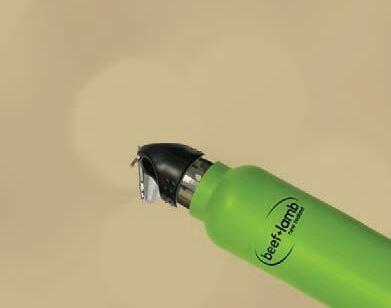



Rabbidge sums up the extent of the problem in his district like this:
“Fifteen years ago, if you saw a deer you got your camera. Ten years ago, you’d shoot one to keep your freezer full.

chair Toby Williams’ property in Gisborne – a beautiful sight from a nature point of view, but not great when they’re chewing through grass meant for his sheep.
“We’ve probably got 200 feral deer on the place at any one time, across three or four mobs,” Williams says.
“Getting up into our top flats, I know why they’re not growing. The 40 or so deer grazing there each night are keeping them down.”
Dean Rabbidge Federated Farmers Southland



“Now you’re just shooting to control them. It used to be a sport and recreation, now it’s just a chore.

“About the only positive is that all our toys we use for hunting can now legitimately be claimed as pest control tools.”
A recent post to the Federated Farmers Facebook showed a group of feral deer moving across the slopes of meat and wool national
Awards Partner







The Beef + Lamb New Zealand Awards dinner is being held on 19 October at Te Pae Christchurch Convention Centre. You could be amongst the winners on the evening and take home a product prize package to the value of $1,000 provided by the B+LNZ Award sponsors.

Simply scan the QR code or visit beeflambnz.com/awards-dinner and answer two questions. The giveaway closes 5pm on Monday 16 October and the winner will be announced at the B+LNZ Awards dinner and online.
A limited number of tickets to the Awards dinner are still available, go to beeflambnz.com/awards-dinner or scan the QR code.

Terms and Conditions apply: www.beeflambnz.com/awards-giveaway-terms-and-conditions
Category Sponsors






Williams says they’re something of a mixed blessing, “being part of the attraction for staff who enjoy hunting, and it’s nice to see them”.
“But we’re getting into riparian fencing and putting natives in as part of the work protecting waterways. Deer will strip all your natives overnight.
“It adds to the cost and complexity when you’re a farmer trying to do what’s right for the environment.”

The extent of the deer problem is pretty similar to his along the East Coast, Williams believes, “gets worse the further north you go”.
The bigger issue is wild pigs.
“You’ll find guys who shoot 200 or











300 pigs on their property in a year.”
They’re really bad for lambing losses and their ploughing up of fields and slopes when the soil is soft in winter adds to erosion issues. Both pests just scoot back into forestry land when hunters go after them. While some forestry companies work alongside farmers on pest control, others lock their gates and save the hunting for selected mates – which means feral population increase can get away. “It’s not really fair to the farmers trying to make a living.”
Williams is in favour of increased targeted funding on wild pig, deer, and goat control, “and it has to be a catchment-wide approach”.

It’s pointless farmers or DOC or whoever working separately. “We need a formal action plan moving forward, and I think there’s an opportunity here as well.
“Think about the Jobs for Nature programme, and the wild meat recovery work that happens down south. We’re look at this as a pest problem, but it could also be an opportunity.”
28 October 9, 2023 – fedfarm.org.nz Federated Farmers 28
WORK TOGETHER: A joint-organisation, catchment-wide approach on deer, goat and pig control is the best way forward, Federated Farmers meat and wool chair Toby Williams says. And there may be opportunities to exploit on wild meat harvest.
Ten years ago, you’d get into the bush and you wouldn’t see a possum. Now you lose count of how many you shoot.
meat and wool chair
Pest numbers out of control
We may not see eye-toeye on every issue, but the fact Federated Farmers, Forest & Bird and the New Zealand Institute of Forestry have joined forces to highlight the growing problem posed by feral pests speaks to just how bad things have got.
Late last month the three organisations called on political parties to commit to controlling the large mobs of wild animals and browsing pests now common across most of New Zealand. The initiative gained a lot of media interest. The letter to politicians said decades of underinvestment and inadequate wild animal control has resulted in exploding populations and a subsequent increase in the range of wild deer, pigs, wallabies and goats.
“These animals are having a heavy economic and environmental impact, while creating a signi cant biosecurity risk.”
Not only do they destroy on-farm native vegetation and hamper farm revegetation e orts, but they also threaten farm economic viability by consuming vast amounts of grass, lessening productivity.
Federated Farmers president Wayne Langford pointed out one deer eats the same amount as two
adult sheep or a one-year-old heifer, and one wild goat is the equivalent of one sheep.
The organisation frequently receives reports of herds of 30 or more deer roaming through farms – that size of wild deer represents an additional 60 sheep that a farmer can no longer support.
The joint letter said the current suite of control e orts including farmer funded pest control, recreational hunting, and DOC or Regional Council-deployed hunters “are failing in many areas to adequately control populations”.
“Wild animals like deer, goats and pigs are carriers of diseases such as bovine tuberculosis (TB), so having them roam onto farms in large numbers creates a signi cant disease risk for farmers.
“Large populations of deer, goats and pigs also create a national risk as, if a major disease incursion were to occur and infect wild stock, control becomes exponentially harder.”
Former Conservation Minister Eugenie Sage was rst out of the blocks with a response to the three organisations, stating the Green Party was well aware of the impacts and risks raised.
Noting substantial increases in funding for wallaby control work
We just want wild animal numbers brought under control, so they stop wrecking our farms.
Wayne Langford Federated Farmers president
and a further $148 million for DOC in 2020 for pest eradication and control, Sage said after strong representations from the Greens an
additional $30m over four years was made to DOC in Budget 2022 for goat control and deer management.
“The Greens have continued to question the department about how this fund has and is being spent. There has been e ective control of goats in areas such as Banks Peninsula but less evidence of the funds being used to reduce deer numbers.”
Sage said DOC’s own monitoring shows a national shift in forest composition, with the number of ungulate-preferred tree species in
GLUTTONS: One wild goat consumes as much grass as a sheep, never mind the erosion risk they can exacerbate; their growing numbers are a curse for farmers.
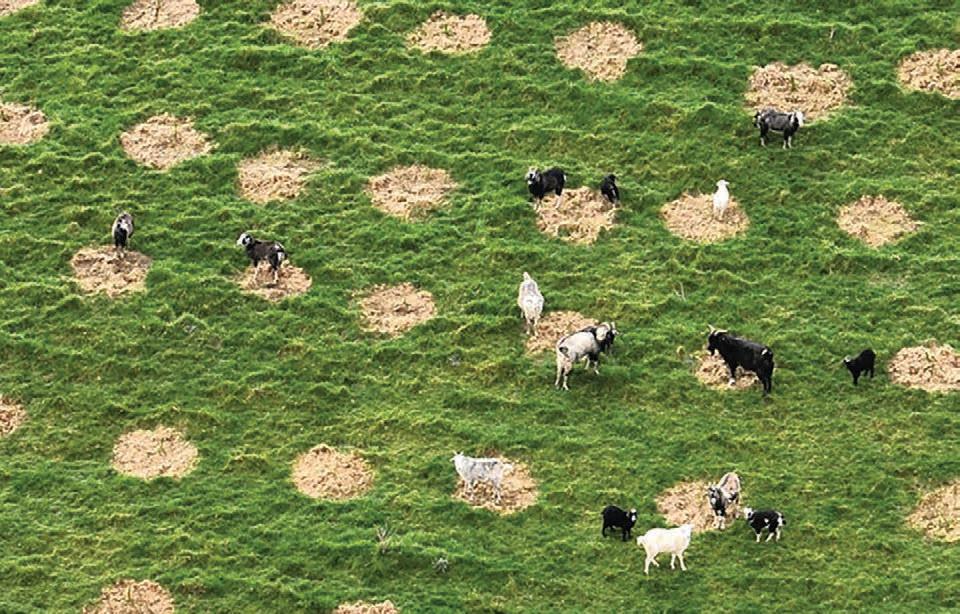
decline with the tree species they avoid eating increase.
Given the large amount of money being invested already, Federated Farmers say that this isn’t necessarily about the dollars spent – it’s actually about dealing with the issue.
“Whether that means new money invested, the reallocation of old money, or trying new ways of doing things doesn’t matter to farmers –we just want wild animal numbers brought under control, so they stop wrecking our farms,” Langford concluded.
Cloud hangs over wallaby strategy funding
One growing pest animal problem where the government has heard farmers concerns loud and clear and fronted with some nancial support, is that of wallabies – but a dark cloud is hanging over the future of the funding.
In 2020, the government committed $27 million over four years to the Aotearoa New Zealand Wallaby Strategy. Regional councils are also spending millions of dollars a year on control work.
Federated Farmers says unfortunately, that the end of the


Jobs for Nature funding has meant that future work programmes have had to be reduced.

This threatens to undo the good work of the last few years as there is now not enough money to even maintain the gains made, let alone make new gains.
With no natural predators, two introduced species in particular are causing millions in damage each year — the Dama wallaby in Rotorua in the Bay of Plenty, and the Bennett’s wallaby in Canterbury and North Otago.
It has been estimated that if left unchecked, by 2025 wallabies would cost New Zealanders around $84m a year in damage. Over the next 50 years, they could spread through a third of the country.
Federated Farmers South Canterbury meat and wool chair Matt Simpson knows all about that threat. He recently cleared about 1800 Bennett’s wallabies o his property.
The National Wallaby Eradication Programme is running a 1080 poison ght back from the Tekapo River
in the Mackenzie Basin into the containment area.
The landowner has to pay 10% of the total cost and that includes a follow up aerial shoot after the poison drop.
Simpson said the 1080 operation is making a di erence and those farmers who have had it done can’t believe how few wallabies are left, and how much grass is now growing on farmland. However, the breakdown for the poison is six months or 100ml of rain - whichever comes rst.
“You’re asking a landowner to take his land out for six months, which is pretty unacceptable for grazing.”
The good news is a new bait has been developed speci cally for wallabies.
“The new bait they have created is a maize type of bait which breakdowns in six weeks or in about 25ml of rain, which is bloody great.
“They’re going to get a lot more landowners buy-in to poison operations if they can get their grazing land back.”
Strategic leadership development for Food and Fibre now. Applications for Lincoln Programme One 2024, January 23 start, close on 22 October. To learn more or apply visit ruralleaders.co.nz/kellogg 29 fedfarm.org.nz – October 9, 2023 Federated Farmers 29
EXPLORE NEW OPPORTUNITIES ON THE HORIZON
When it comes to rural property, Bayleys’ Country is altogether better at unlocking new opportunities, delivering quality rural and lifestyle properties for sale and the latest insights directly to you.
We’ve dug deep to deliver you 140 of spring’s freshest farms, horticulture, viticulture, forestry and lifestyle properties for sale from the far north to the deep south. Country also delves into how improved internet connectivity is bringing the rural sector up to speed and delivering productivity gains, and how lifestyle block owners can leverage their land to grow food as the cost-of-living bites.
Bayleys is consistently New Zealand’s number one rural real estate brand – with deep roots in farming communities, our local relationships, connections, and legendary professionalism mean we’re ready to guide you along country roads.


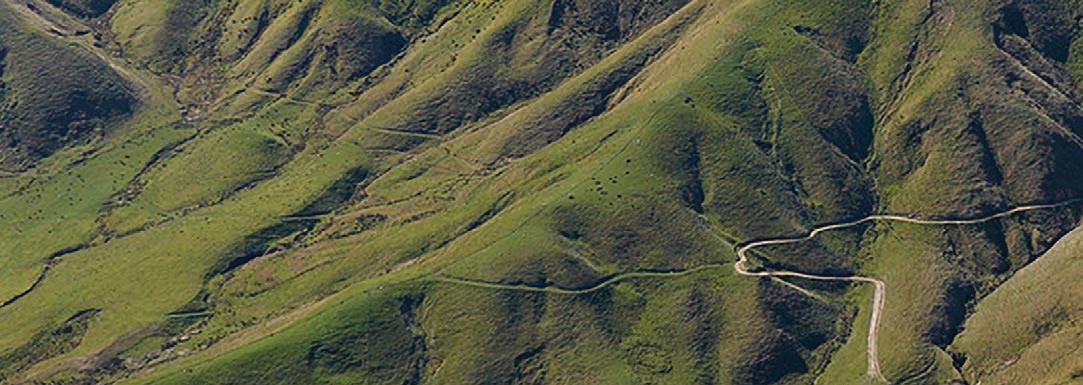







For your copy of Country magazine, call 0800 BAYLEYS or visit bayleys.co.nz/country.



Residential / Commercial / Rural / Property Services 140 –Up to speed Volume to value New Zealand’s reputation as premium food producer OUT NOW
LICENSED UNDER THE REA ACT 2008 RURAL REAL ESTATE BRAND #1 30 Real Estate
Okukari Bay Okukari
Bay
Idyllic waterfront farm with income potential
Okukari Bay is situated at the Tory Channel entrance to Queen Charlotte Sound. There are six separate titles, three with charming homesteads and the other three comprising a 467 hectare farm.



This coastal rural property is accessible by boat and helicopter and is located in the stunning Marlborough Sounds within the South Island. A captivating property steeped in history that presents you with the opportunity to own a piece of paradise. Its breathtaking location, private beachfront access, and abundant recreational opportunities are on offer with the existing farming operation. Consider further farm potentials or research ventures to create your aspirations into reality. These other income options make it an alluring investment. bayleys.co.nz/4004733
468.4762 ha
Tender (will not be sold prior) Closing 1pm, Wed 29 Nov 2023
288 Trafalgar Street, Nelson, New Zealand
View by appointment
Darryl Marshall 0274 437 205
Katy Kerby 0210 296 9259
Georgia Ryan 027 347 8913
bayleys.co.nz
VINING REALTY GROUP LTD, BAYLEYS, LICENSED UNDER THE REA ACT 2008 BE MARLBOROUGH LTD, BAYLEYS, LICENSED UNDER THE REA ACT 2008
31
Waiotira 346 Hillcrest Road
Impressive sheep and beef unit
This outstanding 456 hectare (more or less) sheep and beef unit is in two titles and boundaries the Tauaroa and Mounganui Rivers to the west and north. The attention to detail here is second to none, outstanding infrastructure which includes, wellpositioned cattle yards, woolshed, airstrip, fertilizer bin, and loading out yards ensures stock management is safe and easy. The flat to easy contour and fertilizer history lends itself to maximizing grass production and growth rates. The farm is divided into 80 paddocks with excellent fencing and water supply. Three well-presented laneways create a park-like atmosphere. This is very much a turn-key operation. Properties like this are sought after and do not present themselves very often. bayleys.co.nz/1020802

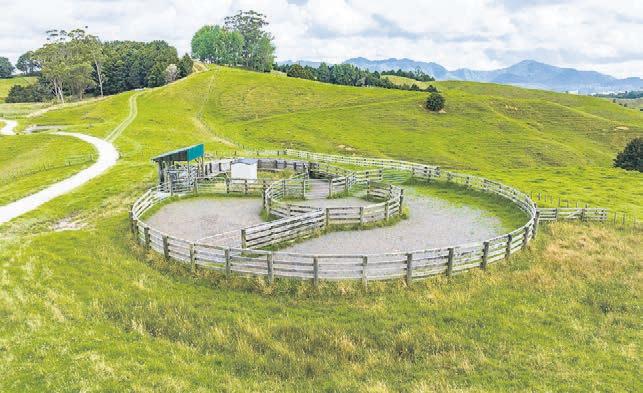
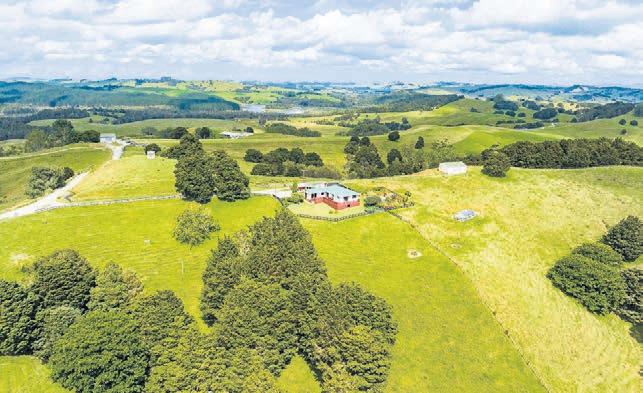
456.5528 ha
Auction (will not be sold prior)
12pm, Wed 1 Nov 2023
84 Walton Street, Whangarei
View by appointment
Todd Skudder 027 439 1235 todd.skudder@bayleys.co.nz
MACKYS
Rangiwaea 253 and 402 Owhakura Road
Easy contour in a strong farming district
'Wainella' is located in the highly sought after district of Rangiwaea, 35 kilometres north-west of Taihape and 32 kilometres south-east of Ohakune at Bells Junction, and features large areas of cultivated country, two homes and three titles. These free draining soils are dominated by Ohakune silt loam on flat to easy contour, providing options for forage cropping and intensive winter grazing to finish all progeny, plus some.


The spacious three-bedroom plus office brick home, with double garage, sits on an elevated site. The farm also has a two-bedroom weatherboard cottage offering extra family or staff accommodation. Well-fenced to 26 main paddocks accessed by a central laneway; all with conventional fencing. Facilities include a five-stand woolshed, cattle yards, satellite sheep yards, two implement sheds and a large half round barn. bayleys.co.nz/2900618

bayleys.co.nz
254.253 ha
Auction (will not be sold prior)
2pm, Fri 24 Nov 2023
The Workingmans Club, 34 Kuku Street, Taihape
View by appointment
Pete Stratton 027 484 7078 peter.stratton@bayleys.co.nz
NEW LISTING
REAL ESTATE LTD, BAYLEYS, LICENSED UNDER THE REA ACT 2008
NEW LISTING
BARTLEY REAL ESTATE LTD, BAYLEYS, LICENSED UNDER THE REA ACT 2008
32
Okahu - 935 Waimarama Road, Hawke's Bay
Breathtaking 360-degree views - development options


Located only 13 kilometres from Havelock North on the Waimarama Road this trophy 582-hectare limestone landholding runs to the east of “Craggy Range” and boasts some of the most breathtaking 360-degree views to Napier in the north, along the coastline to Cape Kidnappers and east to Ocean and Waimarama beaches. Okahu is an appealing property given its proximity to Havelock North, Craggy Range Winery and Restaurant, Cape Kidnappers golf course and resort as well as the fantastic beaches. Options to purchase 170ha of top plateau, 332ha farmland and 80ha lifestyle. bayleys.co.nz/2853327
582.13 ha
Tender Closing 4pm, Fri 10 Nov 2023
17 Napier Road, Havelock North View 12-12.30pm Tue 10 Oct or by appointment
Tony Rasmussen 027 429 2253 tony.rasmussen@bayleys.co.nz
Wimbledon 6472 Route 52 Tararua
First time to the market since 1883 -594ha
Situated in the rural Wimbledon District, this expansive 594-hectare sheep and beef farm is a testament to generations of dedicated farming. Since 1883, the Hales family has nurtured this land, creating a family legacy that spans over a century. This property boasts not one, but two main homes, a cozy cottage, and spacious shearers' quarters, offering comfortable accommodations for a multitude of residents. At its heart is a four-stand woolshed, equipped with 1,000 night pen capacity, complemented by sheep and cattle yards. Satellite sheep yards, strategically located atop the farm, enhance its operational efficiency. With approximately 400 effective hectares of predominantly medium to steep hill country this property offers a mix of sheep and beef and forestry. bayleys.co.nz/2870977
594.3888 ha
Tender (will not be sold prior)
Closing 12pm, Wed 15 Nov 2023
26 Takapau Road, Waipukurau
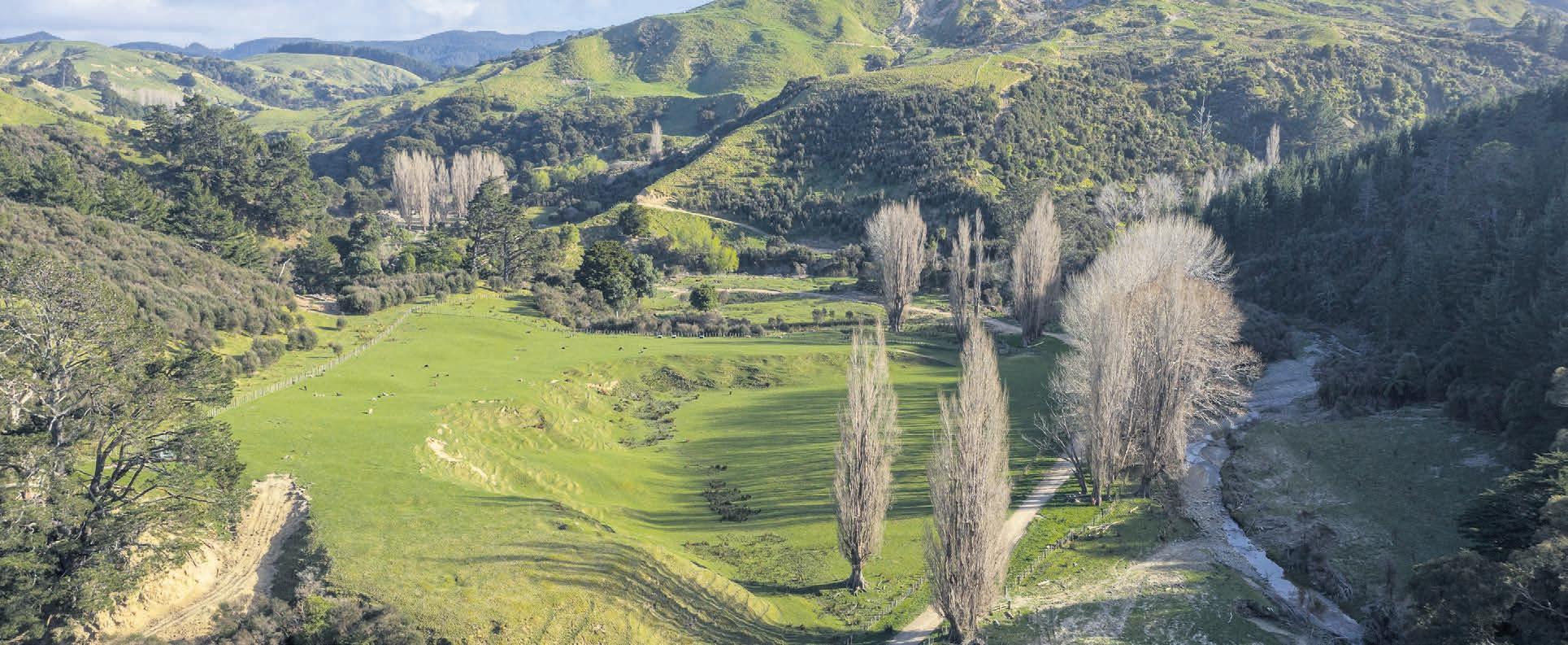
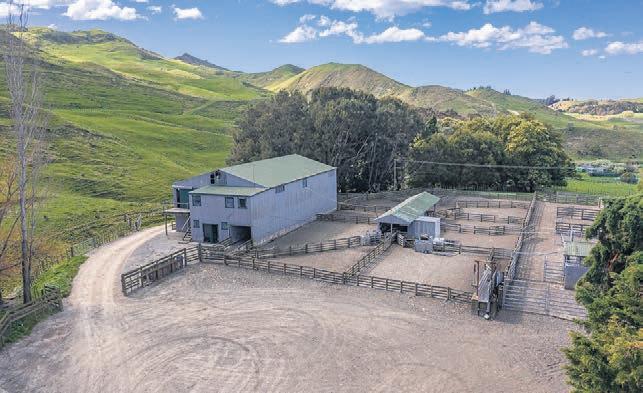
View by appointment
Andy Hunter 027 449 5827 andy.hunter@bayleys.co.nz
Andy Lee 027 354 8608 andy.lee@bayleys.co.nz
bayleys.co.nz
Boundary indicative only, view across neighboring property
NEW LISTING
View into Okahu
EASTERN REALTY LTD, BAYLEYS, LICENSED UNDER THE REA ACT 2008
EASTERN REALTY LTD, BAYLEYS, LICENSED UNDER THE REA ACT 2008
33
Chatham Islands 594 Te Matarae Road
Chatham Island lifestyle and farm
What an opportunity to have your own waterfront property on a remote, awe-inspiring island where sealife, birdlife and serenity is in abundance. The land and waters are legendary with its abundance of blue cod, paua, kina and crayfish.

This sheep & beef property carrying 2,500 stock units is bounded by two large separate stretches of water and boasts spectacular views from all around. Your three-year-old, four-bedroom waterfront home is surrounded by mostly flat and gently rolling land. Whether it’s a full-time home to enjoy and explore a variety of income streams, or an adventure destination cared for by a manager while you’re away – for family & friends, it’s the ultimate escape. bayleys.co.nz/4004773
362.9128 ha
Tender (unless sold prior)
Closing 4pm, Thu 30 Nov 2023
288 Trafalgar Street, Nelson
View by appointment
Doug McKee 027 442 6927 doug.mckee@bayleys.co.nz
VINING
Maheno Kakanui Valley Road, North Otago
Oaks Dairy
This is an exceptional irrigated dairy farm of approximately 489 hectares, including approximately 78 hectares of support land. The first phase of the current owners purchasing land commenced in 2007, and with strategic additions of neighbouring land, they created this large-scale dairy farm. A feature of the property is the 17-hectare 1,300,000m3 water storage pond, which primarily sources water from the Kakanui River under a consent with reliability enhanced by the North Otago Irrigation scheme, giving reliability while managing water costs.
Oaks Dairy presents a remarkable opportunity for investors or dairy farmers seeking an expansive property with a substantial effective area, good infrastructure and a prime location. bayleys.co.nz/5520740
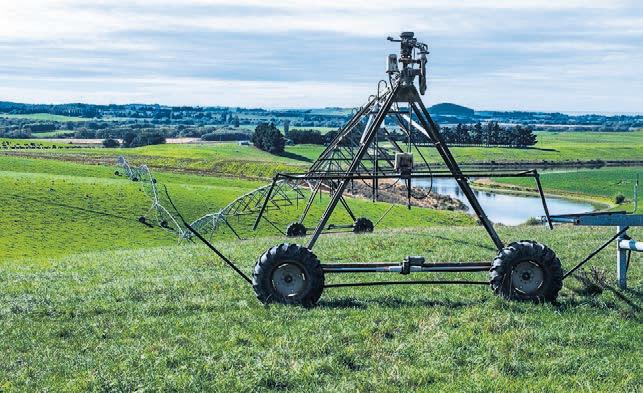


bayleys.co.nz
489 ha
Deadline Sale (unless sold prior)
12pm, Wed 8 Nov 2023
201 West Street, Ashburton
View by appointment
Mike Preston 027 430 7041 mike.preston@bayleys.co.nz
Al Brown 022 188 6601 al.brown@bayleys.co.nz
REALTY GROUP LTD, BAYLEYS, LICENSED UNDER THE REA ACT 2008
WHALAN AND PARTNERS LTD, BAYLEYS, LICENSED UNDER THE REA ACT 2008
34
Wellsford 392 and 421 Journeys End, Tapora
Waterfront dairy or avocado gold!
Positioned on the banks of the Kaipara Harbour is Pinehill Farm; a 301 hectare dairy operation with exciting avocado potential. Set in five titles, this top-tier farm boasts an impressive pedigree; 2022-23 production of 223,989 kgMS achieved from its low-input system, and 102 hectares being identified for future orchard development in this proven avocado “capital”. Other special features include highly fertile volcanic soils, a high volume farm bore, a 60 bale rotary shed, and four houses. With direct access to the Kaipara Harbour, Tapora's popular golf course, and within 90 minutes of Aucklands CBD you can enjoy the best of both worlds!






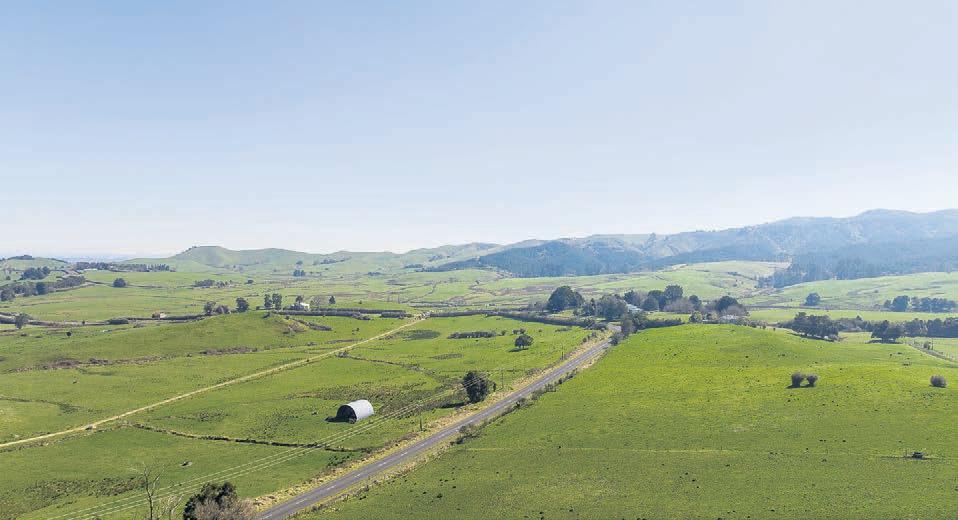

Take a tour: www.vimeo.com/867770757 (turn on your sound) bayleys.co.nz/1203601
35
301 ha
Tender (unless sold prior)
Closing 12pm, Fri 27 Oct 2023
41 Queen Street, Warkworth

View by appointment
John Barnett 021 790 393 john.barnett@bayleys.co.nz
MACKYS REAL ESTATE LTD, BAYLEYS, LICENSED UNDER THE REA ACT 2008
Ohinewai 345 Waiterimu Road
Eight titles plus a fantastic location
This strategic large scale opportunity with eight titles offers an exciting range of options in an increasingly popular area. The farm comprises 277ha and until recently was a working dairy farm with opportunity for reinstatement, or explore the possibilities of maize, horticulture and unlocking the potential of the titles. With free draining ash soils, the rolling contour is centrally raced throughout. Infrastructure is included on an as is where is basis and includes a disused 22ASHB and 17ASHB and a range of support shedding. With four homes all needing some gentle TLC, property owners and staff are well catered for. Easy access to the Waikato expressway sees Hamilton 45km south and Auckland 95km north. bayleys.co.nz/2314579
277.795 ha
Tender (unless sold prior)
Closing 2pm, Wed 8 Nov 2023
96 Ulster Street, Hamilton
View 12.30-2pm Wed 11 Oct or by appointment
Peter Kelly 027 432 4278 peter.kelly@bayleys.co.nz
Angus Kelly 021 165 5031 angus.kelly@bayleys.co.nz
SUCCESS REALTY LIMITED, BAYLEYS, LICENSED UNDER THE REA ACT 2008
Morrinsville 97 Reay and Watson Road
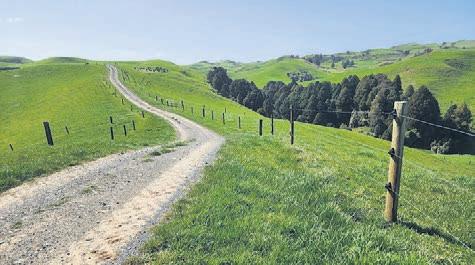
Good scale – great set-up
128.1419 ha
Tender (unless sold prior)
Closing 2pm, Thu 9 Nov 2023
96 Ulster Street, Hamilton
View 12-1pm Wed 11 Oct
Mike Fraser-Jones 027 475 9680 mike.fraserjones@bayleys.co.nz
Neville Jacques 021 774 190 neville.jacques@bayleys.co.nz
SUCCESS REALTY LIMITED, BAYLEYS, LICENSED UNDER THE REA ACT 2008
Boundary
Piopio 953 State Highway 3
Large-scale dairy support
447.91 ha
Tender (unless sold prior)
Closing 2pm, Thu 9 Nov 2023
96 Ulster Street, Hamilton
View by appointment
Scott Macdonald 027 753 3854 scott.macdonald@bayleys.co.nz
Peter Kelly 027 432 4278 peter.kelly@bayleys.co.nz
SUCCESS REALTY LIMITED, BAYLEYS, LICENSED UNDER THE REA ACT 2008
bayleys.co.nz
Boundary lines are indicative only NEW
LISTING
In the heart of the Waikato, between Hamilton and Morrinsville, is this good sound production dairy unit. The property is milking up to 420 cows with a 200kgMS per day winter milk contract supplying Synlait Dairy Company. The farm is well set up with a 40ASHB Don Chapman dairy with ACR’s and in-shed meal feeders. Good shedding for calves and machinery storage is mostly near the working hub along with three dwellings. Production has been to 154,336 kgMS supplemented with meal, grass and maize silage plus some mix from a nearby goat farm. With its location and set up for ease of management, this unit should appeal. The Vendors are exiting the industry so stock and machinery may also be available. Well worth the look. bayleys.co.nz/2314911 lines are indicative only
This large-scale beef and dairy support farm comprises of 447.9100ha (more or less) of freehold land within eight titles. The property has two main separate landholdings, with the northern block comprising of 160 hectares and the southern block making up the remaining 287 hectares approximately. Both have good farm accommodation, farm support buildings, good quality stockyards, internal subdivision, quality lane ways, fencing, and water sources. The property currently operates in conjunction with 102.50 effective hectare Māori Lease Block. The land has a mixture of contours with interspersed native bush and gullies and a mixture of soil types. Bull finishing or beef operations should also be considered. bayleys.co.nz/2314276
Hawke’s Bay 3986 Puketitiri Road, Patoka
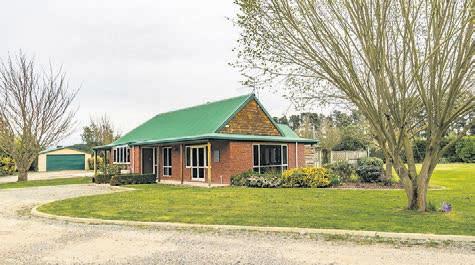
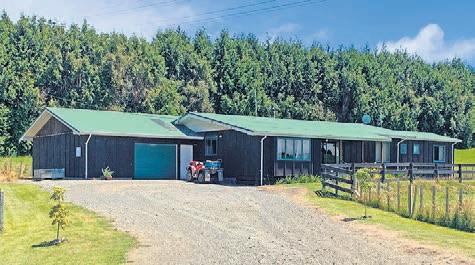
Mid season settlement on offer
Are you looking for summer safe farming on fantastic free draining fertile ash soils? Then look no further. Ben Alpin, a 351ha dairy farm, located in the premium Hawke's Bay farming district of Patoka. Boasting approximately 200ha of mainly flat and easy milking platform with 90ha of support land and a further 51ha of QEII bush for recreation, this well set up dairy unit must tick all the boxes, and with a quality herd, the combination provides an amazing opportunity. Improvements include two dwellings, staff quarters, a 2009 built 60 bail rotary shed with cup removers and in shed feeding, excellent housed calf rearing facilities for 350 calves and numerous implement sheds. An ideal self contained unit providing an excellent return on investment. bayleys.co.nz/2853182

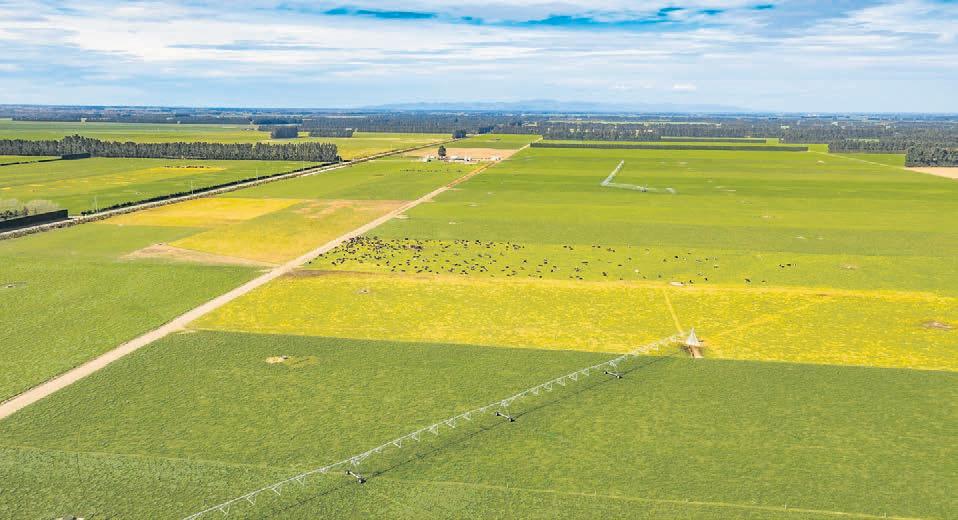
351.8563 ha

Auction 12pm, Fri 10 Nov 2023
17 Napier Road, Havelock North
View by appointment
Tony Rasmussen 027 429 2253 tony.rasmussen@bayleys.co.nz
Monty Monteith 027 807 0522 monty.monteith@bayleys.co.nz
EASTERN REALTY LTD, BAYLEYS, LICENSED UNDER THE REA ACT 2008
Waikari 554 Waikari Valley Road
Double Hill
Presenting an exceptionally well-balanced grazing property situated in a well-regarded area for stock health, and with low operating costs, this property has plenty of future upside. 637.6981 hectares (more or less), consisting of a substantial area of fertile flats in the front and back of the property, a large area of rolling hill country, and some larger hill blocks. Double Hill has a wonderful balance of both contour and aspect. The property has had a significant amount of capital expenditure over the past five years, including new yards for both sheep and cattle, new fencing, and an upgraded stock water system. There is a range of farm improvements including a wool shed, workshop, and various storage sheds plus two dwellings. bayleys.co.nz/5522003

bayleys.co.nz
637.6981 ha
Deadline Sale (unless sold prior)
12pm, Fri 27 Oct 2023
3 Deans Avenue, Chch
View by appointment
Ben Turner 027 530 1400 ben.turner@bayleys.co.nz
Peter Foley 021 754 737 peter.foley@bayleys.co.nz
WHALAN AND PARTNERS LTD, BAYLEYS, LICENSED UNDER THE REA ACT 2008
Boundary lines are indicative only
Bankside 1031 Sharlands Road
Abvan Farm
Abvan Farm is an opportunity not to be missed by those looking for a quality dairy operation, located in a favoured Central Canterbury area, boasting all the key attributes to enable continued success. Milking approx. 840 cows, Abvan Farm is set on 242.4627ha, with a history of consistent production and budgeted to produce 390,000kg milk solids this season. The farm has a very well-thought-out layout, with a centrally located 50-bail rotary dairy shed, numerous calf sheds and four dwellings. The irrigation system underwent a major redevelopment in 2022 with the addition of new pivots. Water is supplied from Central Plains Water Limited. The surrounding area offers a variety of outdoor adventures and activities. bayleys.co.nz/5522014


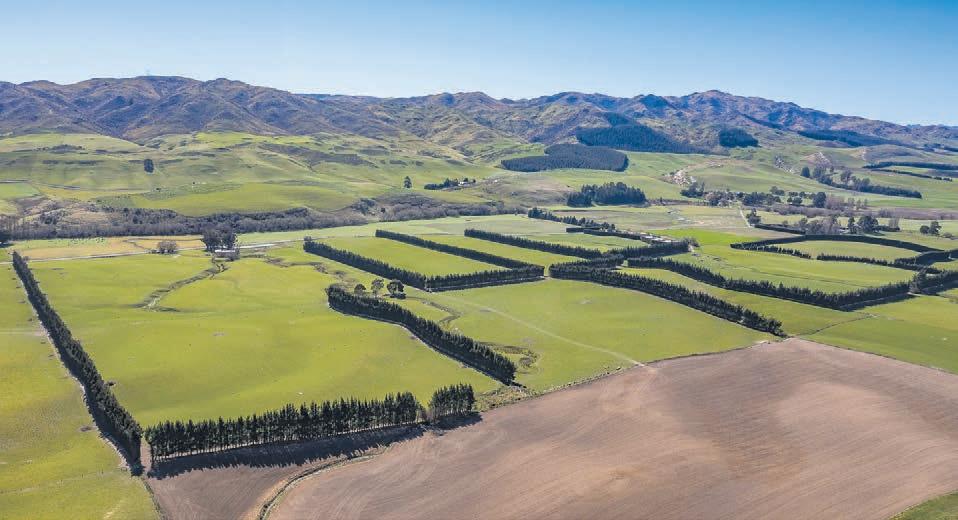

NEW LISTING
242.4627 ha
Deadline Sale (unless sold prior)
12pm, Thu 19 Oct 2023
3 Deans Avenue, Chch
View by appointment
Ben Turner 027 530 1400 ben.turner@bayleys.co.nz
Craig Blackburn 027 489 7225 craig.blackburn@bayleys.co.nz
WHALAN AND PARTNERS LTD, BAYLEYS, LICENSED UNDER THE REA ACT 2008
Ashburton 200 Dowdings Road
‘Skibbereen Farm’

A prime agricultural opportunity located in the heart of Mid Canterbury's dairy region. Encompassing 197.5436 hectares (more or less). Currently, the farm has a peak milking capacity of approximately 620 cows. The farm produces an average of 289,346kgMS over the last three seasons. Featuring a modern rotary dairy shed constructed in 2010 by Dave McCrea Ltd, this facility is equipped with DeLavel ACRs and Auto-drafting, along with in-shed feeding and mineral dispenser. Water is sourced from three bores and also benefits from 1,972 MHV Water shares. Skibbereen Farm provides comfortable living accommodation with four well-maintained homes. bayleys.co.nz/5522169
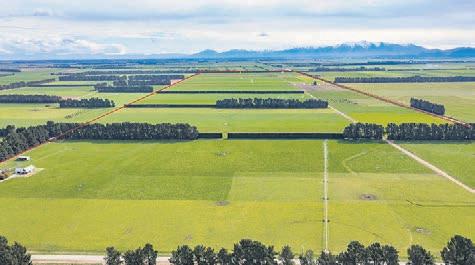
197.5436 sqm
Deadline Sale
12pm, Wed 1 Nov 2023
View by appointment
Ben Turner 027 530 1400 ben.turner@bayleys.co.nz
Simon Sharpin 027 631 8087 simon.sharpin@bayleys.co.nz
WHALAN AND PARTNERS LTD, BAYLEYS, LICENSED UNDER THE REA ACT 2008
36
Real Estate
364 Maungatautari Road, Cambridge
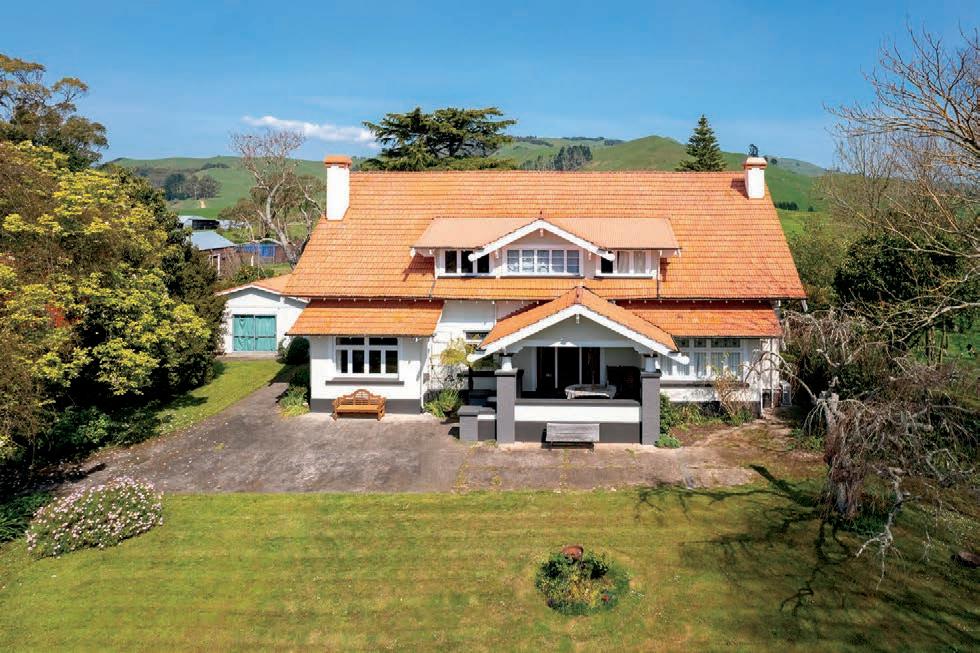
Arts and Crafts style bungalow w th six bedrooms and two large living rooms Features of note are the large front porch stained glass entranceway and grand staircase – lending dignity and charm of yesteryear
Within the established grounds of the homestead are fruit trees grass tennis court and swimm ng pool There are also two three-bedroom staff houses with northerly aspects The view from the 1962 Hinuera stone house on the hill at 398 Maungatautari Road, provides a wonderful view of nearly the whole farm Multiple sheds both new and old are close to the family homestead


With fertile ash soils and





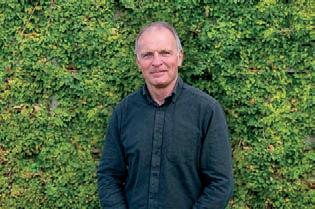
Cambridge Real Estate, MREINZ, Licensed: (REAA 2008) 47 Alpha Street Cambridg 954 Oreipunga Road, Cambridge $6,500,000 +GST (if any) Discover this incredib e opportunity to own an established dairy farm spann ng across two titles This expansive property has a footprint covering approximately 213 hectares and boasts a stunning location next to Maungatautar Mountain with breathtaking views and a thriving birdlife habitat With a portion of the land covered in native bush this property creates the added advantage of Environment Benefit Lot (EBL) ent tlements making this an appea ing prospect for potential buyers The farm has a mix of contours with some steeper sidling s Soils are free-draining ash and the productive area of land will be approximately 141 hectares Sound farm management is reflected with product on of 155 403 kgMS off approx 150 effective hectares over the last 3 years from 380 to 400 cows Farm infrastructure is exceptional, featuring a recently rebuilt 30-aside herringbone cowshed, ample storage space in various sheds, two meal silos, a substantial PKE bunker with a 30-tonne capacity A well-maintained track allows easy access around the farm The main home enjoys an outlook of stunn ng rural views and has recently been renovated to create a modern and comfortable family home compris ng six bedrooms and three bathrooms Heating is ensured with two wood burners and two heat pumps with heat transfer vents in every living area and bedroom There is also a second 4-bedroom dwelling plus sleepout used
quarters
as staff
Karapiro
recreational activ
this offering
t miss out -
swiftly
Matt a ca l to secure this
property David Soar Rura Sales Consultant p: 07 823 1945 m 027 284 9755 e: david@cambridgerea estate co nz View: Tuesday 10th October: 11 00am-12 00pm Matt Seavil Rural Sa es Consu tant p 07 823 1945 m: 027 444 3347 e: matt@cambr dgerea estate co nz Advertise with us Reach hundreds and thousands of rural New Zealanders every week Call 0800 85 25 80 realestate@agrihq.co.nz
Located between Cambridge and Tauranga and handy to Lake
for
ties
presents a wealth of opportunity for the purchaser Don
act
and give
exciting
Known as Dingley Dell this superb 165 ha dairy farm has been in the Vosper family for over 140 years and is now on the market for the very first time Situated just 8km from the centre of Cambridge and just a short walk or bicycle ride along the cycleway to the international facilit es of Lake Karapiro With road frontage of over 1km this location is second to none Most of the nfrastructure is near new (2019) including the 40 aside herringbone Chapman dairy shed DeLaval milking and effluent systems and is in excellent working order The farm has been leased out for approximately the last 37 years to a very well-respected farming company It has been operating with two other smaller neighbouring leased properties milking a total of around 630 cows producing a 3-year average of 219 335 kgMS Included with the property is the stately Dingley Dell homestead This 1928 Category B Heritage building, designed by Cambridge s most successful architect of the day, James Douce, is a two-storey
Auction
mainly flat to rolling pastures this superbly located property will appeal to a wide range of people and would suit a variety of applications - from equine to horticulture and of course dairy farming This really is a once in a lifetime opportunity to purchase a arge farming operation so close to Cambridge and Lake Karapiro This is your chance to create your own chapter in the history of this iconic and treasured property Please do not hesitate to give me a call if you have any questions AUCTION: To be held Thursday 2nd November 2023 at 1 00pm at the Cambridge Community Pavilion Corner of Dick Street and Queen Street Cambridge (unless sold prior) Cambridge Real Estate, MREINZ, Licensed: (REAA 2008) 47 Alpha Street, Cambridge 3434 View: Wednesday 11th & Friday 13th October: 12 00pm-1 00pm Matt Seavill Rural Sales Consultant p: 07 823 1945 m: 027 444 3347 e: matt@cambridgerealestate co nz 37
–
FARMERS WEEKLY – farmersweekly.co.nz
October 9, 2023
37
Pukekohe 361 Brien Road
Waikaretu 414 Baker Road
Support block or finishing unit?
Located 40 km from either Pukekohe and Port Waikato is this nicely contoured 116.4 ha (S.T.T) approx. of grazing land.




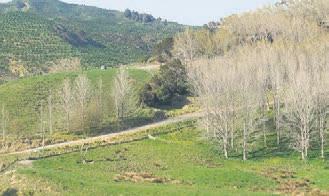

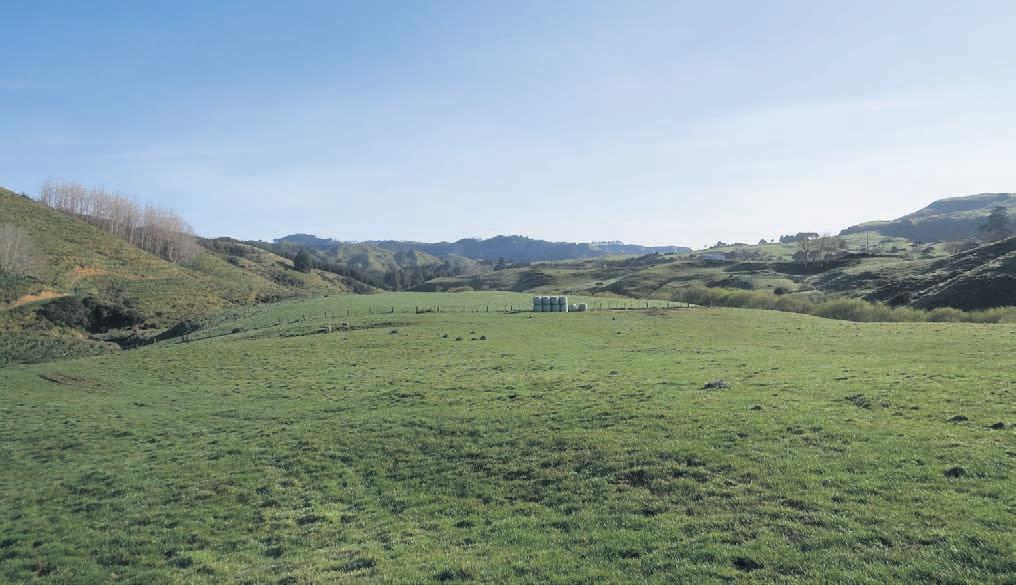
There are excellent support buildings that include a newish four stand woolshed, large implement shed, and good sheep and cattle yards. The two homes are older and in fair order only. Large enough to make an excellent support block for dairying or a nice little finishing unit for someone looking for entry into land ownership ranks. Title is soon to be issued.
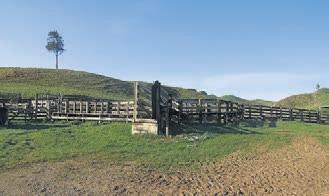
Otorohanga 31 Kiwi Road
Auction
30.6 ha (S.T.T) lifestyle block
Tired of living in the city but still want to be reasonably handy? Just 48 km from Tuakau and 90 km from Auckland Airport - is this 30.6 ha (S.T.T) lifestyle/finishing block.


The four bedroom, 1920's homestead has commanding views of the surrounding countryside, was fully refurbished in the 90's and could easily be restored to its former glory. The land is mostly flat and easy, and there is support buildings but no yards. Title is soon to be issued.
By appointment Web pb.co.nz/TWR170921
Take a look at this!
An excellent 118 ha dairy unit with a full range of tidy farm improvements. There are three good homes and a 24 ASHB dairy. The property has a good mix of contour with 50/50 flat to easy rolling and seven to eight ha of steeper sidlings. All consents are in place.
Motivated vendors will try to meet the market
John Sisley M 027 475 9808


Auction 12.00pm, Thu 26th Oct, 2023, Hautapu Sports Club, 211 Victoria Street, Cambridge
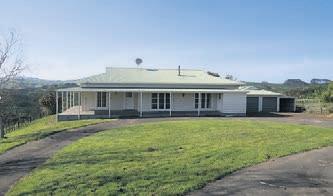
View Tue 10 Oct 12.30 - 1.30pm Tue 17 Oct 10.45 - 11.45am Web pb.co.nz/TWR165043
John Sisley M 027 475 9808 E john.sisley@pb.co.nz

David McGuire M 027 472 2572 E david.mcguire@pb.co.nz

Deadline Sale
Deadline Sale closes Friday 3rd November, 2023 at 4.00pm, (unless sold prior) View By appointment Web pb.co.nz/TWR169609 John Sisley M 027 475 9808
Deadline Sale
Deadline Sale
View
closes Friday 3rd November, 2023 at 4.00pm, (unless sold prior)
Property Brokers Ltd Licensed REAA 2008 | pb.co.nz Proud to be here 38
Matamata 1578 Old Te Aroha Road
Auction
Otorohanga 745 Puketarata Road
Auction
It's all here!
This 217 ha property is well presented with very desirable contour and strong farm infrastructure, with an exceptional ability to deliver premium returns.
Located in the Waikato district, 15 minutes' drive from Matamata, that winters on average 500 R2 dairy heifers plus beef stock. The property is well farmed and regularly fertilised. The contour ranges from flat to easy medium hill to slightly steeper contour at the rear and has been subdivided into approximately 50 paddocks, mostly with great track access and water troughs. There are two sets of cattle yards, a woolshed, a six-bay calf shed and two workshops.


Mayfield 425 Mayfield Valetta Road
Auction 12.00pm, Thu 26th Oct, 2023, (unless sold prior), Hautapu Sports Club, 211 Victoria Street, Cambridge View Wed 11 Oct 1.00 - 2.00pm Wed 18 Oct 1.00 - 2.00pm Web pb.co.nz/TXR104102



Steve Mathis
M 027 481 9060
Deadline Sale
When quality counts
An excellent 109 ha dairy farm in every respect, with a good mix of contour and soil types, a full range of sound farm structural improvements, two good homes and located in the popular and well-known farming district of Kio Kio, approximately midway between Te Awamutu and Otorohanga.



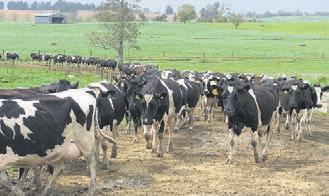
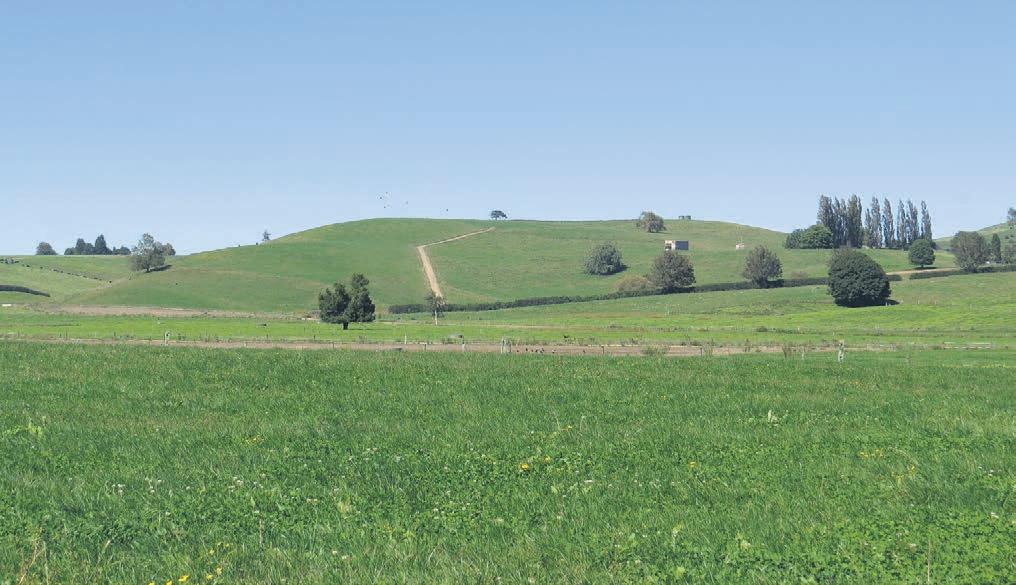
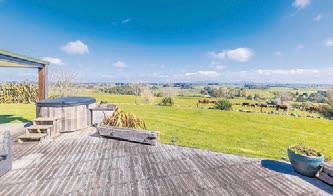
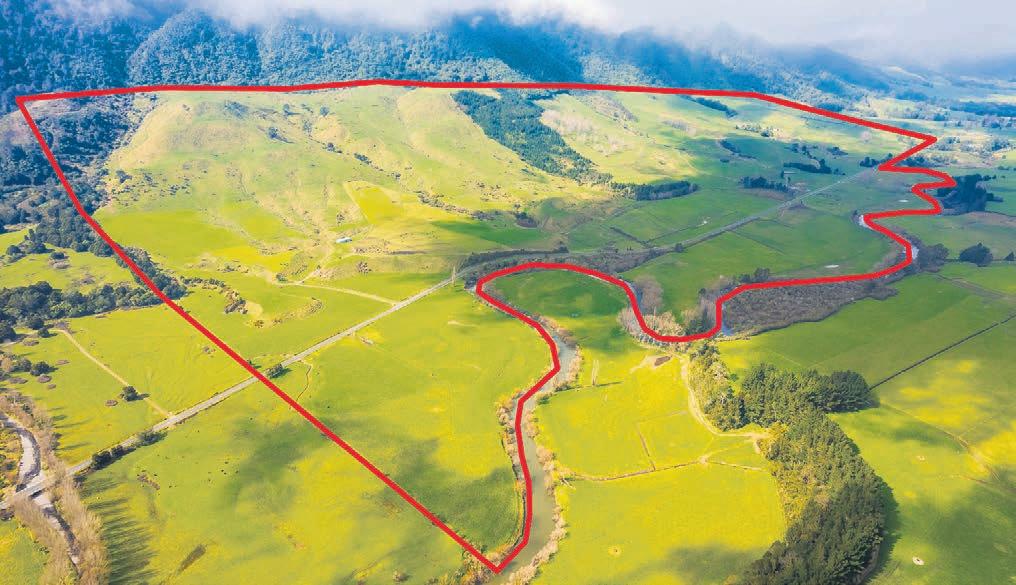
There's a lot to like about this well-presented property.
Contact the agent for the full property details.
Lake Ohau 2/1857 Twizel-Omarama Road
Auction 12.00pm, Thu 26th Oct, 2023, (unless sold prior), Hautapu Sports Club, 211 Victoria Street, Cambridge View Tue 10 Oct 10.45 - 11.45am Tue 17 Oct 12.30 - 1.30pm Web pb.co.nz/TWR164611
John Sisley M 027 475 9808
272.44 ha - Dairy support
This 272 ha dairy support/finishing property is located on Mayfield Valetta Road which is approximately 25 minutes west of Ashburton and 5 km north of Mayfield. Having a strong dairy support history, an executive four bedroom homestead, excellent second home, great infrastructure, excellent pastures and pivot irrigation. Excellent standalone business or dairy support for the larger dairy farmer. This property is currently leased until 1st September 2024. A quality farm with excellent irrigation, great access from lanes system plus excellent dairy support history. Available to purchase - Option 1 - Whole farm; Option 2 - 146.99 ha - Homestead block; or Option 3 - 125.43 ha Bareland block.
Lake Ohau, Waitaki District - South Island
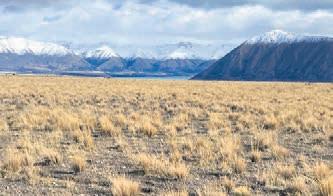
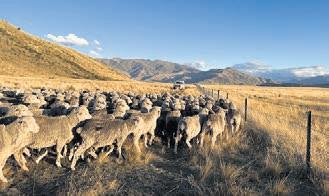

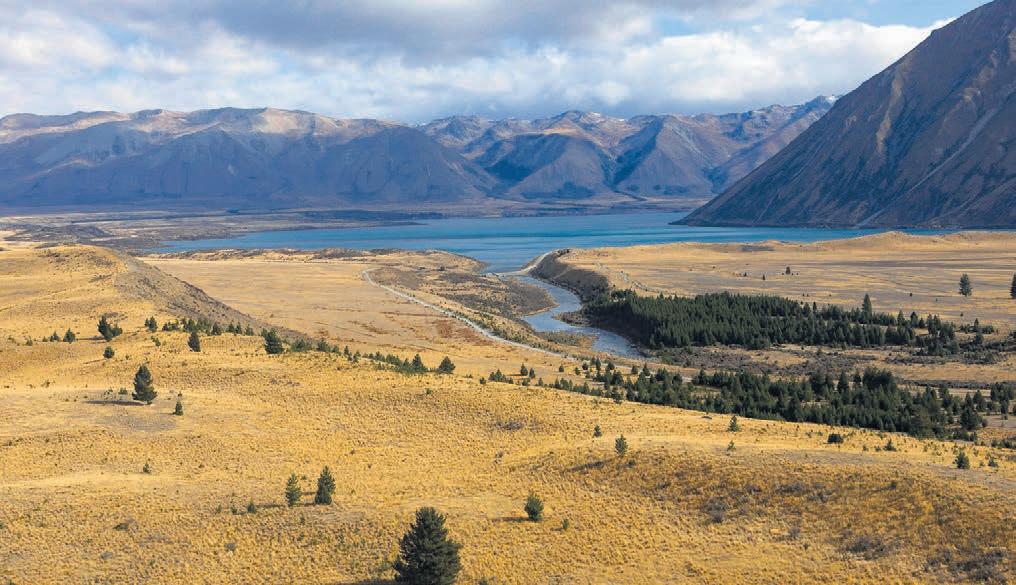
Deadline Sale closes Wednesday 25th October, 2023 at 12.00pm, (unless sold prior), Property Brokers
Ashburton
View By appointment Web pb.co.nz/AR167205
Chris Murdoch M 027 434 2545
Blue Chip Development - An extremely private, freehold property located between Lake Ohau and Lake Ruataniwha. This is a once in a lifetime opportunity. The discerning buyer will purchase 349 ha of freehold land subject to survey, with a second stage 2 further dividing the property into 14 lots all larger than 20 ha. With unmatched landscapes you will enjoy the ultimate in fishing, boating, hunting and skiing all just minutes away. If you are looking for a large lifestyle bolt hole or an impressive blue chip development block, then look no further. Contact the sole listing agent for more details.
Deadline Sale closes Tuesday 21st November, 2023 at 12.00pm, (unless sold prior)
View By appointment Web pb.co.nz/DNR170733
Ross Robertson M 021 023 27220
John Faulks M 027 452 5800





New Listing
Property Brokers Ltd Licensed REAA 2008 pb.co.nz Proud to be here 39
TENDER
888
This
• Subdivided into eight paddocks


• Troughs in each paddock
Accelerating success.
Tender Closes 17 October 2023 at 4.00pm at Ray White Te Awamutu, may be sold prior



Boundary indication only

3.2879ha
Pauline Love 021 155 4689 pauline.love@raywhite.com


Howard Ashmore 027 438 8556 howard.ashmore@raywhite.com

TENDER
Estimated 278ha effective, excellent contour, 80% free draining volcanic soils. Recently wintered around 600 Friesian bulls, the block is very capable of running more. Was run as an intensive technograzing system but would need to be reinstated. Good array of buildings and well maintained four bedroom home.



4:00pm 26 Oct 2023 at 33 Kerikeri Road, Kerikeri (unless sold prior) VIEWING Phone For Viewing Times
Claude Shepherd 0274 410 436 c.shepherd@barfoot.co.nz TENDER
311ha Beef Unit
WAIMAMAKU 636 TAITA ROAD barfoot.co.nz/849734 rwteawamutu.co.nz/TEA30614 Rosetown Realty Ltd Licensed (REAA 2008)
Bond Road, Te Awamutu
large grazing block has subdivision potential:
• Post, wire and batten sheep proof fences
• Ideal land bank
View by appointment
40 FARMERS WEEKLY – farmersweekly.co.nz – October 9, 2023 Real Estate 40
Semi-self contained 2412 Atarau Road, Grey Valley, West Coast Agri Realty Ltd Licensed under the REAA 2008 457.6333 hectares total area 2022/23 peak milked 790 cows Richard O'Sullivan 027 292 3921 Scott Healey 022 437 0664 2022/23 production 379,798 kgMS This superbly developed property is on the market for the first time since 1884 to allow family succession to take place. This offers a special opportunity for the discerning purchaser to secure a premium rural asset with strong farming credentials and a proven history of management and performance. For Sale by Deadline Private Treaty closing 4pm Wednesday 8th November 2023 Semi self-contained Rolls Royce operation colliers.co.nz/p-NZL67025678







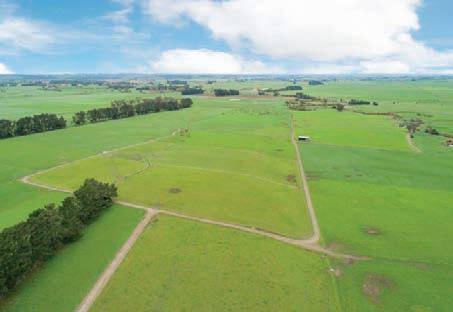
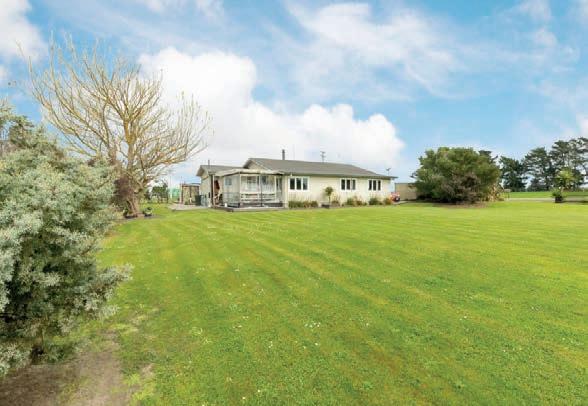
41
AUCTION
PAPAMOA, BAY OF PLENTY
A Farm with a World of Future Opportunity
• 74.8949 hectares total area
• Three bedroom Keith Hay home
Grazing land, approx 25 paddocks
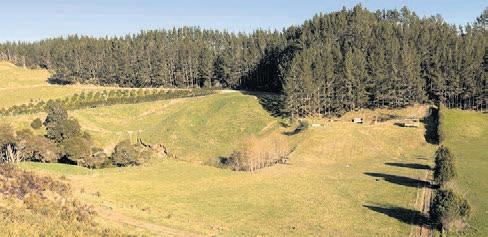

7ha of Pine, 1ha Lusitanica trees
Streams, riparian planting, bush
• Implement sheds, wood shed, barn
• Opportunity for future diversification
Phone or email for full Information Memorandum
pggwre.co.nz/TEP38282
AUCTION
AUCTION Plus GST (if any)
(Unless Sold Prior)
1.00pm, Monday 16 October
VIEW By Appointment Only

David McLaren
M 027 223 3366
E dmclaren@pggwrightson.co.nz
Karen McLaren


M 027 555 0421
E karen.mclaren@pggwrightson.co.nz
AUCTION
RAGLAN, WAIKATO 61 Pond Road
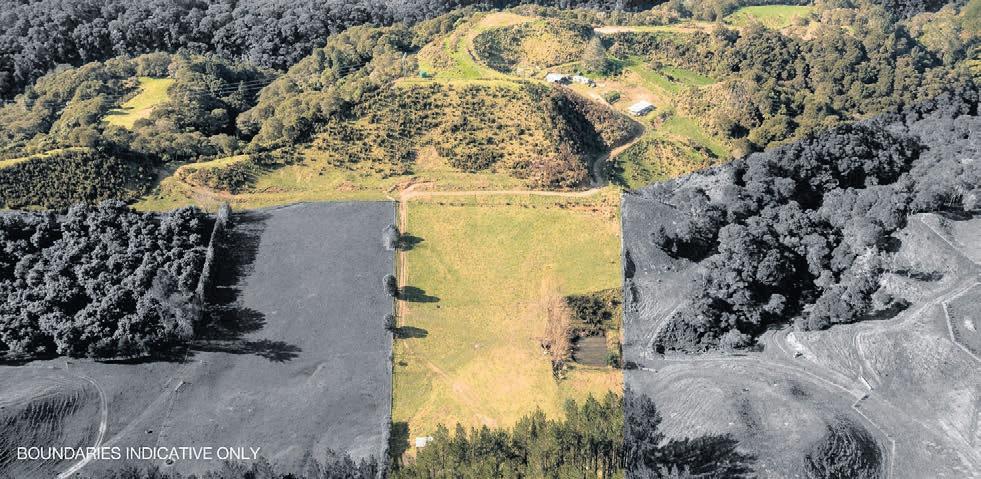
Attractive, Flat, Quality 103ha Farm
This 103ha dairy farm, nearly entirely flat with gentle rolling areas, features two comfortable four-bedroom homes, useful sheds, workshops, stables, garaging, implement sheds, calf rearing sheds and a modern 30 ASHB dairy shed. 275 cows are milked with consistent production on a low-cost system.
An excellent race system provides access to approx 50 paddocks, a trough in each paddock provides water from the bore. The farm has mature stands of native trees and three spring-fed creeks.
Located 6km from Raglan you could have the best of both worlds, a productive farm and amazing lifestyle.
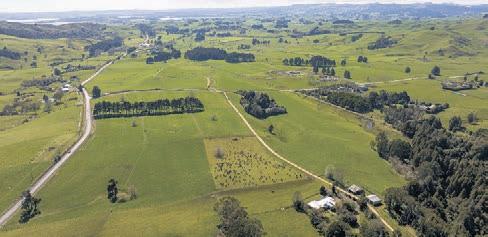
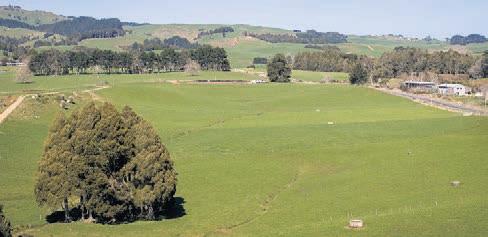


pggwre.co.nz/HAM38417
AUCTION Plus GST (if any)
(Unless Sold Prior) 11.00am, Wednesday 1 November
PGGWRE, Cambridge VIEW 11.00-12.30pm
Wednesday 11 & 18 October
PAENGAROA, BAY OF PLENTY
Rural Life with Development Opportunity
Escape to the beauty of the hills with this exceptional rural property.

A desirable land size of 22.663 hectares

Multiple, elevated house sites
• Views of the coast and natural landscape
• Fully fenced grazing paddocks
Two storage sheds
Opportunity for subdivision
Contact Morgan today.
pggwre.co.nz/TEP38123
NEW LISTING
AUCTION Plus GST (if any)
(Unless Sold Prior)
1.00pm, Monday 16 October
VIEW By appointment
Morgan Sayle
M 020 413 60152
E morgan.sayle@pggwrightson.co.nz
Richard Thomson
M 027 294 8625
E richard.thomson@pggwrightson.co.nz
PIARERE, WAIKATO 66 Pahihi Road
Productive and Profitable in Tirau

This well-presented dairy farm of 119 hectares (subject to title - more or less) - 100 hectares effective located 4.5km from Tirau. Production comes from 265 cows with split calving and winter milk contract in place with a three-year average of 103,000kg MS pa through a 24 ASHB shed. The soils comprise predominantly of Tirau Ash soils, on a mixed contour with rolling to medium with the balance in stepper sidling's. Infrastructure includes a four bedroom double storied homestead with other well maintained farm buildings. The farm is in very good heart and worthy of inspection to appreciate.

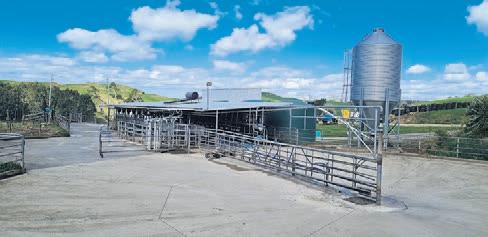

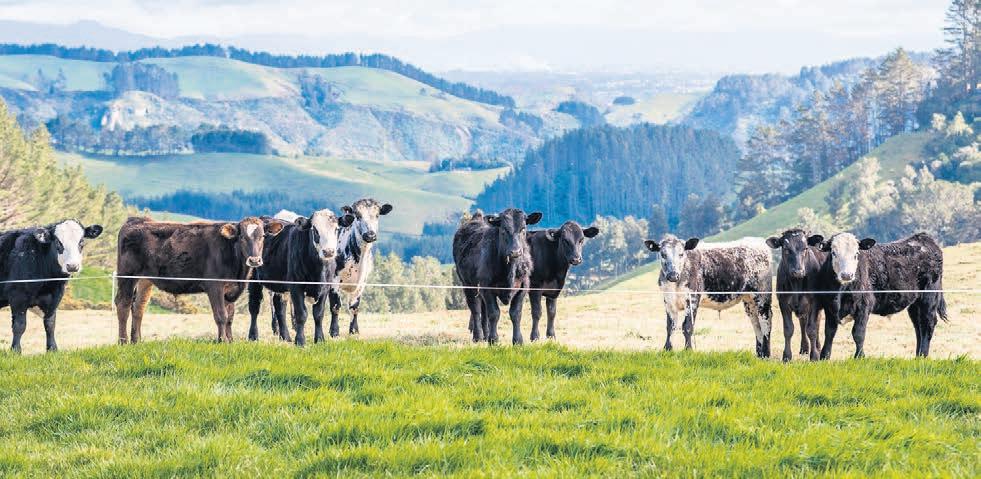
pggwre.co.nz/MAT38294
DEADLINE PRIVATE TREATY Plus GST (if any)
(Unless Sold Prior)
Closes 4.00pm, Tuesday 31 October VIEW 12.00-2.00pm
Thursday 12 & 19 October
M 021 791 643
E trevor.kenny@pggwrightson.co.nz

Trevor Kenny www.pggwre.co.nz

PGG Wrightson Real Estate Limited, licensed under REAA 2008
grow the country
Helping
PGG Wrightson Real Estate Limited, licensed under the REAA 2008. SPRING 2023 COMING SOON RESERVE YOUR COPY Showcasing a collection of New Zealand’s premium rural properties. RURAL | LIFESTYLE | RESIDENTIAL 42
TENDER
MATAWAI, GISBORNE DISTRICT 6464 Matawai Road
Heartland Opportunity
An opportunity has presented itself in the sought after, close-knit, rural community of Matawai. Those looking for strong hill grazing land that lends itself to multiple uses must check out Pukehinau. Midway between Opotiki and Gisborne, on SH 2, you will drive through the small rural heartland settlement of Matawai in the Gisborne District. Matawai could be described as a snapshot of rural New Zealand at its best with all the attributes that provincial communities are recognised for, in so providing the perfect environment to bring up a family. Social lives are focused around the school, the squash club, the local fire brigade and the township in general.
241.52ha (or 596.82 acres) with good fertiliser history



Spacious four bedroom family home, spring and rainwater supply
Multiple artesian springs supply stock water, gravity reticulated to all paddocks
• 27 post and batten paddocks, most internally subdivided with two-wire electric fences

• Satellite yards are well positioned for ease and efficiency of stock handling
• Four-stand wool shed with covered sheep yards, four-bay implement shed and workshop
pggwre.co.nz/WHK38420
EXCLUSIVE
4 1 1
TENDER Plus GST (if any)
(Unless Sold Prior)
Closes 4.00pm, Thursday 9 November
VIEW By Appointment Only
Phil Goldsmith

M 027 494 1844
E pgoldsmith@pggwrightson.co.nz
WAIUKU, AUCKLAND 1047 Awhitu Road

Time for a Change
Dairy farms of this quality and size located close to Auckland are few and far between. This 161ha farm, with views over the Manukau Harbour, has been farmed with pride by the owners for over 30 years.




Infrastructure includes five bedroom home with four bay shed, two bedroom cottage, 30 aside herringbone shed, inline feed system, rubber matting, multiple silage pits, calf rearing facilities, and large implement shed. Currently milking 400 cows, across the property with well subdivided paddocks via well maintained raceways, with a good standard of fencing throughout.
pggwre.co.nz/PUK38389
$40,000 PER HA

Plus GST (if any)
VIEW 11.00-1.00pm
Tuesday 10 & 17 October
Kane Needham
M 027 336 8709
E kane.needham@pggwrightson.co.nz
Mark Needham
M 027 704 6833
E mneedham@pggwrightson.co.nz
HAVELOCK NORTH 2246 Middle Road
Pukekura
596.38 ha (1473 acres) in four titles with one large homestead and four other dwellings.
A feature of the farm is the significant boundary with the Tuki Tuki River and the large areas of cultivatable country.
This is a large breeding and fattening property situated approx 22km south of Havelock North.


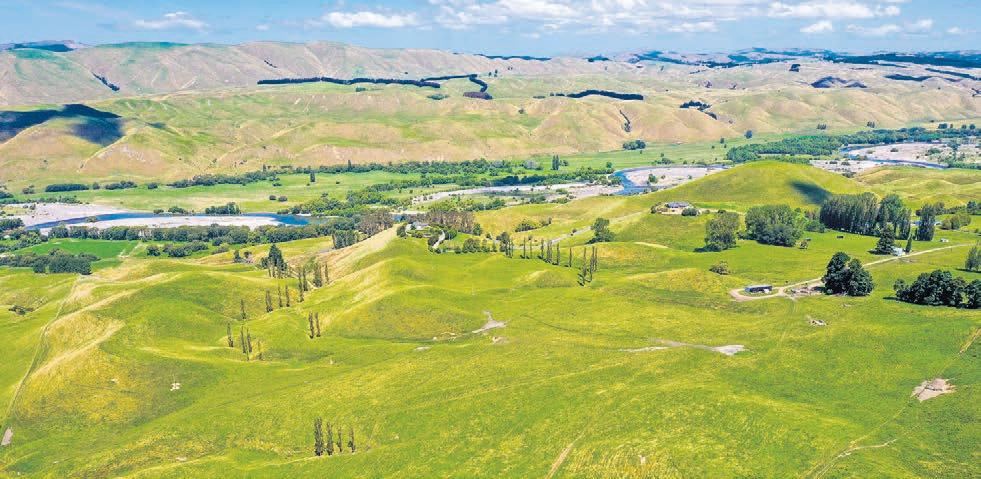
Phone the agents to view.
pggwre.co.nz/HAS37294
TENDER
Plus GST (if any)
Closes 4.00pm, Wednesday
8 November Hastings
VIEW By Appointment Only
M 027 494 4854
E paul.harper@pggwrightson.co.nz

Mark Johnson
M 027 487 5105
E mark.johnson@pggwrightson.co.nz
Paul Harper www.pggwre.co.nz

PGG Wrightson Real Estate Limited, licensed under REAA 2008 Helping grow the country
TENDER
PGG Wrightson Real Estate Limited, licensed under the REAA 2008. SPRING 2023 COMING SOON RESERVE YOUR COPY
RURAL | LIFESTYLE | RESIDENTIAL 43
Showcasing
a collection of New Zealand’s premium rural properties.
Accelerating success.
Sheep/Beef

Prioritise This One
62 Seafund Rd, Te Awamutu
For Sale by Tender closing Thurs 16 November 2023 at 3pm (plus GST if any) 529 Blackburn Road, Ongaonga, Central Hawke’s Bay
Doug Harvey 027 262 6153 doug.harvey@colliers.com Hamish Goodwin 027 291 2156 hamish.goodwin@colliers.com

If conservation, contour, recreation, and the ability to have multiple pastoral farming options are important property considerations ‘Totaranui’ is a property you should consider. Located in the sought-after Ongaonga district with a river boundary, large homestead, cottage, new Te Pari cattle yards, 4-stand woolshed, and supporting farm buildings this property offers the opportunity to tick many boxes but also the ability to add further value.
‘Totaranui’ Two dwellings Land Area: 275.5931 ha (more or less) Sheep/Beef breeding/ finishing colliers.co.nz/p-NZL67025481

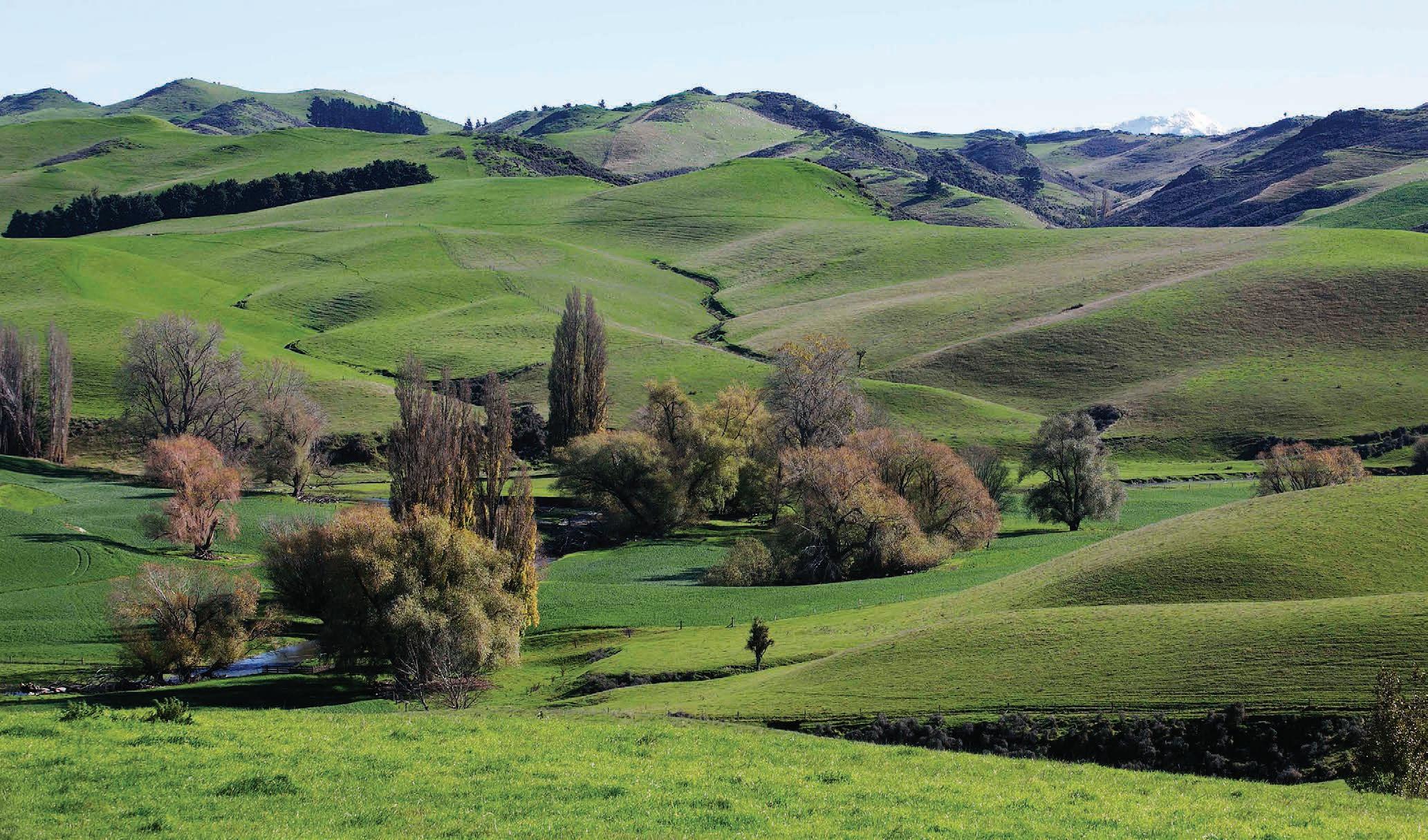

colliers.co.nz

The best way to appreciate just how special this 54.9 hectare dairy farm is, will be to visit it in person. Located in the community focused district of Wharepuhunga just down the road from the village hub of the local school and hall, and within an easy commute to Te Awamutu and Cambridge. This attractive property is predominantly flat or gently rolling with only minimal sidlings. Milking around 170 cows through an 18 ASHB. To name all of this properties features would be a lengthy exercise although the fact that it has two road boundaries and is in two titles with a house on each is worth a special mention. This combination could provide some flexibility around future subdivision.
888 5677
CRHB Limited Licensed under the REAA 2008 Excellent farm infrastructure & contour
New Listing 44 FARMERS WEEKLY – farmersweekly.co.nz – October 9, 2023 Real Estate 44 Advertise with us Reach every farmer in New Zealand every week Call 0800 85 25 80 Email realestate@agrihq.co.nz Link Realty Ltd. All information contained herein is gathered rom sources we consider to be reliable. However, we cannot guarantee or give any waranty about the information provided. Interested parties must solely rely on their own enquiries.
matamata.ljhooker.co.nz/KFGHR1
54.9 ha
LJ Hooker Matamata 07
Link Realty Ltd.
Auction
View
Agent Rex Butterworth 021 348 276 Peter Begovich 027
AUCTION
Licensed Agent REA 2008
Wed 1st Nov (unless sold prior)
11th & 18th Oct 11am - 12pm
476 5787
OAK TRUFFLE TREES
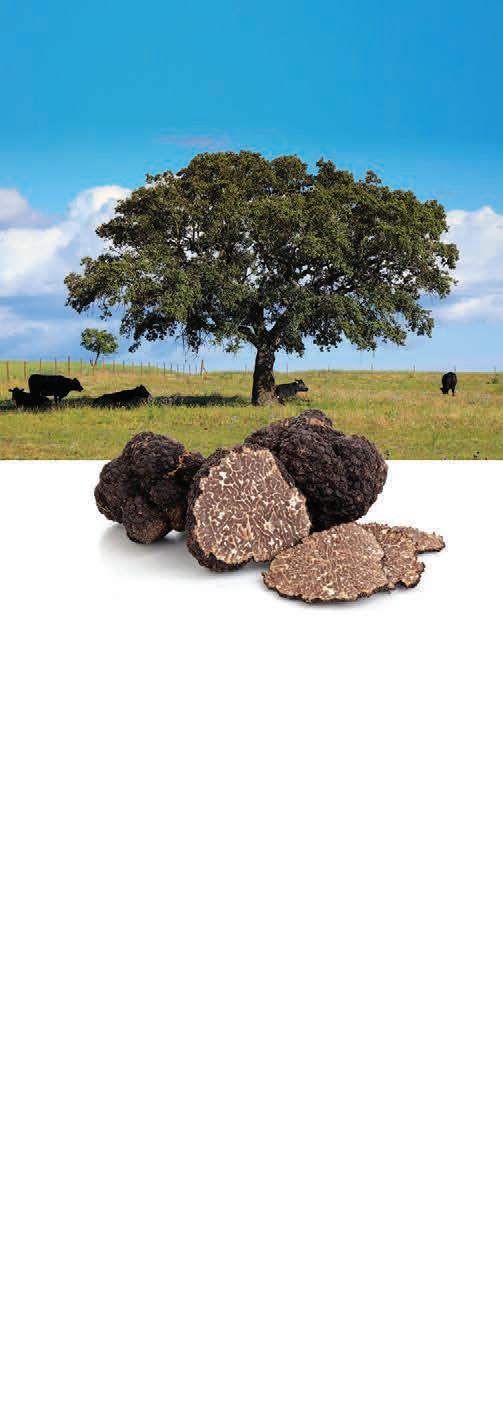
is hiring
Position: Lamb weigh crate operator

Location: Feilding Sale Yards
When: Fridays from 11am
Hours: Casual basis for a minimum two hours
Activity:
• Be part of the team weighing store lambs on a portable weigh crate
• Assist with other AgriHQ stock data recording activities if required
You will need:
• An adequate level of fitness
• Excellent stock behaviour awareness and handling skills
• Teamwork and an obvious empathy for the work of agents and farmers
• An ability to work a weigh crate (with training)
• An ability to work under pressure.
Training: Full health and safety, and work training will be provided. For more information please email: suz.bremner@agrihq.co.nz
Marketplace Partnership Manager


Farmers Weekly is celebrating its 20th birthday this year and we’re looking for someone new to join the party.

As our Marketplace Partnership Manager you’ll be the custodian of one of the most well-loved and well-read parts of the paper – where farmers advertise to other farmers!
You’ll be an expert at making relationships (and sales!) over the phone, via email, and on Zoom/Teams/Google Meet, and will love being part of our energetic Feilding-based team.
If you’re self-motivated, love connecting with people, and are passionate about the food and bre sector then we’re keen to talk! At least three years of Sales experience is required.
We’re an innovative, welcoming team with a big vision for the sector. Come and join us!
For more information about the role contact hr@agrihq.co.nz or visit agrihq.co.nz/careers
Applications close: Friday October 27, 2023.
EXPERIENCE SUSPENSION WITH TRIPLE MOWING TECHNOLOGY











From $12,999 RRP
Ferris® suspension systems are engineered to provide you with a smooth ride on uneven ground. The deck of the mower works in conjunction with the suspension system to provide a consistent quality of cut.







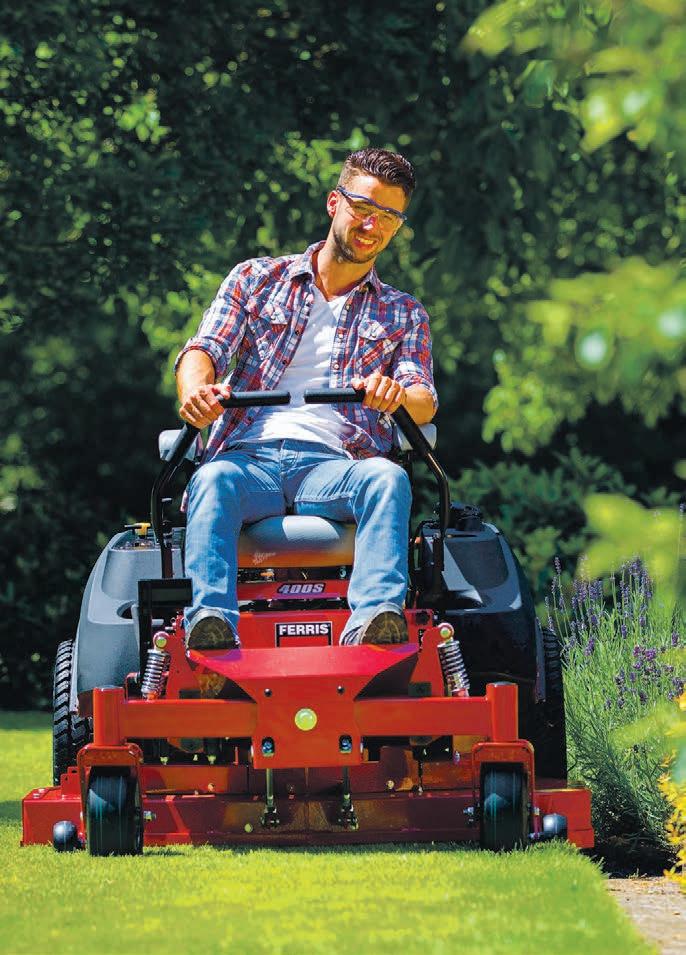
And, the TRIPLE mower deck (on selected models*), now gives you side discharge, rear discharge and mulching configurations that can be converted as required.
*TRIPLE Deck available on the 400S and ISX2200 (not shown).

You wouldn’t drive a car without suspension.
™ FW/FERRIS/2022 FERRIS® 400S - 48” deck Affordable & durable with commercial-grade power and maneuverability. Advanced debris management system, large turf friendly 20” tyres for increased traction, with speeds up to 12.8km/h. RRP from $12,999inc. So why buy a Ride-on without it? FERRIS® IS®600Z - 48” deck The best value in a compact zero-turn mower. With our exclusive suspension technology, heavy-duty Hydro-Gear® Drive System and speeds up to 16 km/h, this mower will give you all you’re looking for and more. RRP from $17,849inc. FERRIS® SRS®Z1 STAND-ON Ride con dently into narrow spaces with advanced comfort and stability. The new SRS Z1 offers excellent productivity with our exclusive suspension technology - all in a compact frame that will t into a van or smaller trailer. RRP from $18,899inc. Take a Ferris for a test drive. Phone 0800 274 447 for your nearest dealer. Or visit ferrismowers.com for more information.
LK0116763©
Trees produce truffles at around year 7, producing up to 1kg a year by year 15. Currently black truffles are selling at $2,500$3,000 per kg, with high demand. It grows under them.
Great stock shade and shelter with 0% loss of grazing land. Stock protector options are available for cattle, sheep & deer. Fantastic stock feed which is low tannin and high in carbohydrates. Produces up to 1 ton of acorns per tree each year. Extremely resilient. Fire resistant, stabilises erosion, frost & snow resistant to -9 degrees. Drought & heat tolerant over 40 degrees. Add value far into the future. Trees last over 200 years. Cork harvest income at year 25, then every 10 years. Potential carbon credits at 30% with a minimum 1ha canopy cover. For tree availability call 021 327 637 or visit truffles.nz LK0116741©
CORK
Join the team! LK0116821© 45 Marketplace FARMERS WEEKLY – farmersweekly.co.nz – October 9, 2023 Marketplace 45
DOGS FOR SALE
HEADING PUPS. Strong eye, Father tricolour, 3 Dogs. $350.00 each, good working parents. Phone or Text 027 476 2579, 07 871 9934.

YOUNG HUNTAWAYS AND Heading dogs. Top working bloodlines. Check out our website www. ringwaykennels.co.nzRingway kennels. Phone 027 248 7704.
GRAZING AVAILABLE
DAIRY HEIFER grazing available. Bulls /Marton areas. Phone 027 223 6156.
BOOK AN AD. For only
$2.30





LIVESTOCK FOR SALE
THE GULLIES WILTSHIRE & Low Input Rams. SIL; FE and worm tolerance. Richard Morrison Phone 021 626 513. richard@thegullies.nz www.thegullies.nz


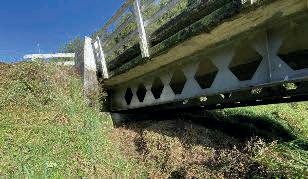
HORTICULTURE
14th-16th October. West and Central Otago/Maniototo, 17th-20th October. Phone Ron Wilson 027 435 3089.




CRAIGCO SHEEP JETTERS. Sensor Jet. Deal to y and Lice now. Guaranteed performance. Unbeatable pricing. Phone 06 835 6863. www.craigcojetters.com


FORESTRY
WANTED
NATIVE FOREST FOR MILLING also Macrocarpa and Red Gum, New Zealand wide. We can arrange permits and plans. Also after milled timber to purchase. NEW ZEALAND NATIVE TIMBER SUPPLIERS (WGTN) LIMITED 027 688 2954 Richard.


NZ KELP. FRESH, wild ocean harvested giant kelp. The world’s richest source of natural iodine. Dried and milled for use in agriculture and horticulture. Growth promotant / stock health food. As seen on Country Calendar. Orders to: 03 322 6115 or info@nzkelp.co.nz
HYPNOTHERAPY


FARMING FAMILIES, online hypnotherapy support for everyday challenges. Contact Shirley Henderson at shirl@ shirl.nz for a chat. For more info: http://www.facebook. com/handsforhealthnz
LEASE LAND WANTED

DAIRY OR GRAZING FARM wanted. Open to leasing, equity, share farming or developing land in partnership. Rangitīkei, Manawatū or HB areas. Phone Michael 027 223 6156.

PUMPS
HIGH PRESSURE WATER

PUMPS, suitable on high headlifts. Low energy usage for single/3-phase motors, waterwheel and turbine drives. Low maintenance costs and easy to service. Enquiries phone 04 526 4415, email sales@hydra-cell.co.nz

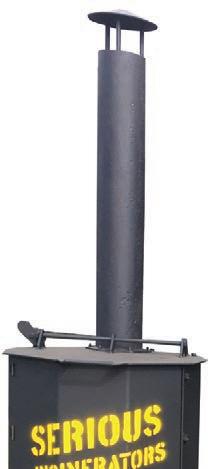
RAMS FOR SALE
WILTSHIRES-ARVIDSON. Self shearing sheep. No1 for Facial Eczema. David 027 2771 556.
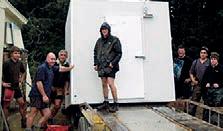

STOCK FEED
MOISTURE METERS Hay, Silage dry matter, grain. www.moisturemeters.co.nz 0800 213 343.



BALAGE FOR SALE EXCELLENT QUALITY, $85 per bale plus GST. Unit loads available. Phone 021 455 787.

CONTRACTORS
GORSE AND THISTLE SPRAY. We also scrub cut. Four men with all gear in your area. Phone Dave 06 375 8032.
DOGS FOR SALE
DELIVERING AND BUYING NZ Wide. https:// www.youtube.com/@ mikehughesworkingdog Phone 07 315 5553.

1 GRIZZLY HUNTAWAY. 10-months-old. Good shifting bark, ready for work. Phone 027 243 8541.

PROMOTES QUICK PASTURE growth. Only $6.50+gst per hectare delivered. 0508-GIBBGRO [0508 442 247] www. gibbgro.co.nz. “The Proven One.”

GIBB-GRO GROWTH PROMOTANT GIBBOOST INCREASE PASTURE growth and dry matter. $5.50 per/ha ex store + GST. Phone 0508 733 343. www.vernado.co.nz
GOATS WANTED
519
TWO STUNNING 4WD SELF DRIVE OPTIONS South Island High Country Grand Slam Self drive your own 4WD from Blenheim to Cardona in Central Otago through a network of high country tracks including Molesworth on this 7 day 8 night tour. NOW TAKING BOOKINGS FOR 2025 SEASON Limited spaces available for 2024 Contact John Mullholland Phone 027 228 8152 • RANFURLY info@highcountryjourneys.co.nz www.highcountryjourneys.co.nz The Great Explorer Self drive from Lake Ohau to Cardrona through the majestic high country and Tussockslands of the Mackenzie Basin, Central Otago and Northern Southland with this 5 day 6 night tour. LK0116744© HIGH COUNTRY JOURNEYS Drive from station to station and experience the majestic South Island High Country Heavy duty, long lasting incinerators Three sizes available Phone 021 047 9299 irontreeproducts.co.nz JW114362© PRELIMINARY NOTICE THURSDAY 12TH OCTOBER 2023 A/c DJ & CL McConnell 1839 Gordonton Road, Taupiri 11am Machinery & Sundries 12 Noon Livestock 140 x Predominantly Frsn & XB Cows For further details contact: Auctioneer: Darryl Houghton 0274 515 315 Agent: Liam McBride 021 222 2662 See full details on www.mylivestock.co.nz and our Facebook Page ON FARM INMILK SALE LK0116820© Under Woolshed/Covered Yards Cleaning Specialists www.underthewoolshed.kiwi SCOTTY’S CONTRACTORS NOW WORKING IN HAWKE’S BAY / WAIROA / GISBORNE AREAS CONTACT TO BOOK YOUR SHED ✁ Contact Scotty to discuss all that needs to be done Ph 0800 27 26 88 • Mobile 027 26 26 27 2 • scottnewman101@gmail.com ✁ LK0116800© New Zealand’s Number 1 service provider since 2004 Digging out and remetalling cattle yards and calf sheds. Also specialising in flood damage and silt removal. BRIDGE & STRUCTURE MAINTENANCE Farm bridges and structures showing signs of age? Don't let these valuable assets deteriorate any further ! ben@waterhousecc.co.nz 027 559 7168 Providing affordable repair & maintenance solutions for your expensive assets. Waterhouse Complex Civil are specialists in repairing & maintaining bridges, stock underpasses, culverts, & waterway remediation GO THE MOA! To find out more visit www.mowermaster.co Phone 0800 422277 or 028 461 5112 Email: mowermasterltd@gmail.com Towable Flail Mower 14.5HP. Vanguard Briggs & Stratton Motor. Electric start. 1.2m cut 3 year Briggs and Stratton Commercial Warranty. 2 year Mower Master Warranty LK0116486© $4900 GST INCLUSIVE MOWER MASTER TOWABLE MOWERS Assembled by Kiwis for Kiwi conditions – built to last. 46 FARMERS WEEKLY – farmersweekly.co.nz – October 9, 2023 Marketplace 46 Livestock DOLOMITE For a delivered price call .... NZ’s finest BioGro certified Mg fertiliser 0800 436 566 ATTENTION FARMERS CHILLERS & FREEZERS SEE TradeME #2251190054 Ph JC: 021 441 180 E: frigidair@xtra.co.nz When only the best will do! ZON BIRDSCARER electro-tek@xtra.co.nz Phone: 06 357 2454 ELECTRO-TEK ENGINEERING Check out Poll Dorset NZ on Facebook nzsheep.co.nz/poll-dorset-breeders FLY OR LICE problem? Electrodip – the magic eye sheepjetter since 1989 with unique self adjusting sides. Incredible chemical and time savings with proven e ectiveness. Phone 07 573 8512 www.electrodip.com ANIMAL HANDLING ANIMAL AND HUMAN healer, also manipulation on horses and dogs. Central /South Canterbury, 9th10th October. North Otago /Dunedin/South Otago/ Gore, 11th -13th October. Southland,
weights. All breeds. Prompt service. Payment
pick up.
GOATS WANTED. All
on
My on farm prices will not be beaten. Phone David Hutchings 07 895 8845 or 0274
249. Feral goats mustered on a 50/50 share basis.
FERAL GOATS WANTED. Pick-up within 24 hours. Prices based on works schedule. Phone Bill and Vicky Le Feuvre 07
027
893 8916 /
363 2932.
+ gst per word you can book a word only ad in Farmers Weekly Classi eds section. Phone 0800 85 25 80 to book in or email wordads@agrihq.co.nz FOR ONLY $2.30 + gst per word you can book a word only ad in Farmers Weekly Classi eds. Phone 0800 85 25 80. •••CENTRAL PLATEAU••• A/C HARLAW DOWNS LTD Tuesday 17th October 2023 673 Forest Rd, Reporoa 200 x Young XB In-Milk Cows Generated from a LIC Computer Split From a 900 Cow Herd. A young herd consistently averaging 450kgms. Farmed under System 3. Cows to be sold in lots of 3 with the purchaser selecting 2 Cows and 1 remaining in Vendors possession. Deferred payment until 20th November 2023 Further details to follow Contact Agent: Michael Conwell 027 226 1611 HIGH PRODUCTION CROSSBRED IN-MILK ON FARM AUCTION LK0116805© Advertise with us Call 0800 85 25 80 wordads@agrihq.co.nz
To be held on the property at Pyramid, Riversdale, Southland
Charollais Sheep Genetics

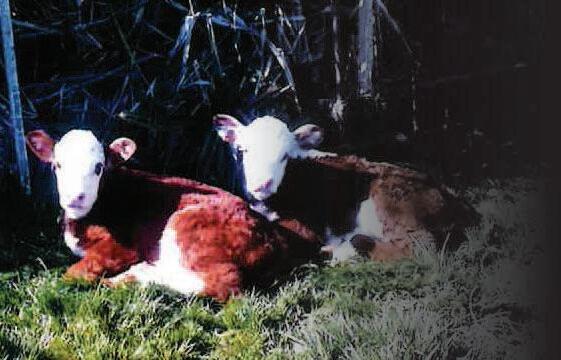
For further information on private ram sales contact participating flocks


The breed that offers fast growth rate and high yielding carcasses. The Charollais wedge shape gives easy lambing and ideal for hogget mating.

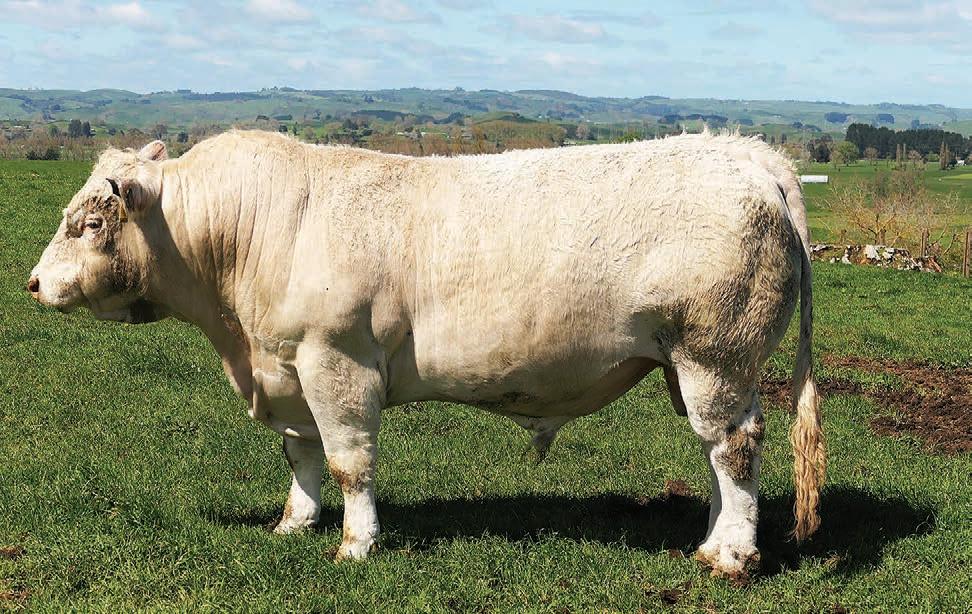
Tuesday 17 October 2023

11.30am | Feilding Saleyards
Tyree Farms Ltd - Tangimoana
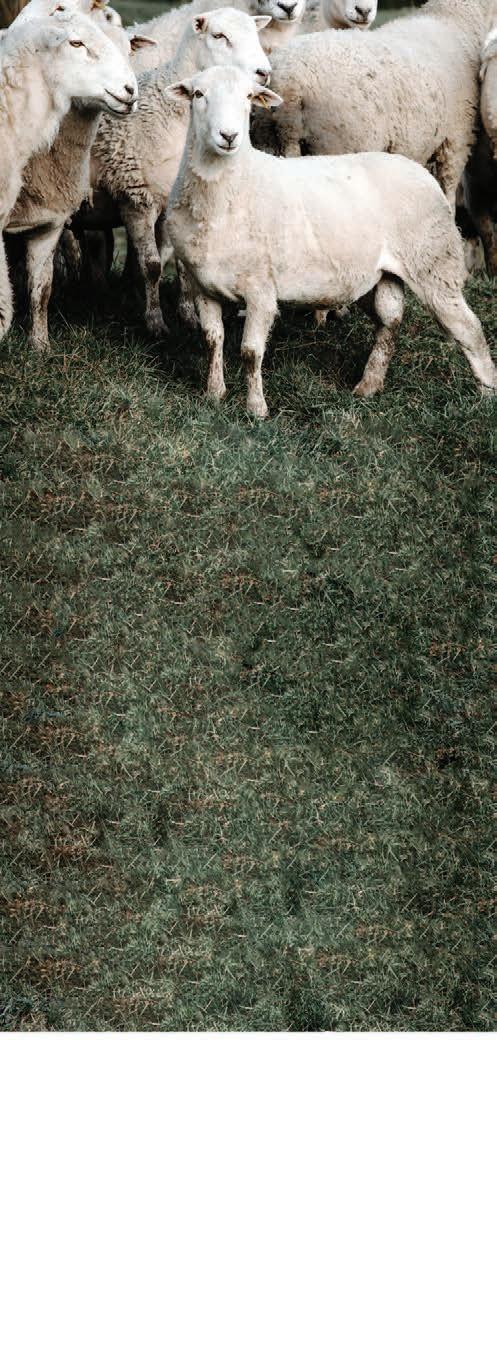
Comprising:
115 x 3 - 8 year old Friesian & Friesian X in Milk Cows BW 160, PW 202, RA 90%.
LIC Breeding for over 20 years.
All Cows are DNA’d.
Herd Test was completed 27th & 28th September 2023.


Cows are averaging 2.32kgMS and 28.8 litres Somatic Cell Count average 63,000 at Herd Test.
TB Clear 10 (completed June 2023) & Lepto vaccinated.
System 2/3 on sand country.
Vendors can accommodate cows that have to travel big distances by returning to their farm at the Purchasers Expense to prepare them for transport.
NB: This is by arrangement prior to auction.
Cows are in good condition & quiet.
Purchasers can buy on Bidr.


Videos available to view on agonline.co.nz

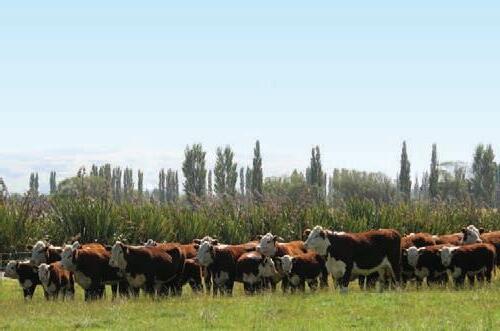
•
•
•
•
For inspections please phone John Henderson 027 633 1775 or Michael 027 412 0062 Henderson Partners Pio Pio Est. 1981 LK0116803© • C10 • EBV available • BVD clear vaccinated For Sale: 9 very good 2 year polled bulls
was purchased for the following attributes:
Auahi Charolais
Sandown
Shorter gestation
Lower birth weight
Homozygous polled
No horns over any breed Straws now available $14.00 each
‘Sandown’ Bred for both dairy and beef markets Helping grow the country
Introducing
Enquiries: Peter Forrest 0275 986 153 IN MILK CLEARING SALE NZ’s Virtual Saleyard bidr.co.nz 28th ANNUAL PRODUCTION SALE SALE DATE: WEDNESDAY 18th October 2023 at 11:30am
2 YEAR OLD POLLED HEREFORD BULLS ON SALE Package includes: Progress Pedigree Performance recording Producer of Meat & Wool Cup winner Performence 51 years of breeding AUCTIONEERS PGG Wrightson Greg Clearwater 027 591 8045 Callum McDonald 0274 336 443 Rural Livestock Ltd Tony Pryde 027 434 7230 Craig North 027 473 0864 Helen Miller Ph 03 202 5339 • Cell 027 431 9759 LK0116781©
NZ
Peter Ponsonby, Lawrence 027 299 2871 Matt Ponsonby, Lawrence 0274 199 733 Scott Linklater, Feilding 0175 483 578 Chris Hampton, South Canterbury 0272 025 679 Murray Smith, Rangiora 0274 140 308 Alastair Brown, Pleasant Point 022 188 6601 Duncan & Casey MacKintosh, Rangiora 03 312 8192 Mitch Taylor, Fairlie 0274 054 527 Nigel Jay, Rangiora 021 140 7827 Martina & Shaun Lawlor, Gore 0274 445 379 LK0116535© 47 Livestock FARMERS WEEKLY – farmersweekly.co.nz – October 9, 2023 Livestock 47 Advertise with us Call Andrea 027 602 4925 Raupuha Studs Where every day is an open day PERENDALE 2TH RAMS TESTED 0.6 ROMDALE 2TH RAMS TESTED 0.6 The only NZ Perendale and Romdale breeder with rams tested at 0.6! Start your genetic progress here. RAUPUHA Perendales & Romdales are Follow the leader #1 Suffolk and Suftex terminal 2ths are available Raupuha Shorthorn bulls are available for sale Please enquire for more info Russell and Mavis Proffit: 2033 State Highway 3, RD, Mahoenui 3978 M 027 355 2927 | E: raupuhastud@gmail.com | www.raupuhastud.co.nz ON FARM SALE Tues 14th Nov 2023 at 12 Noon OPEN DAY Tuesday 31st October, 1pm-3pm at SH3, Mahoenui
“What’s going on with the scanning result - it’s down again. And what about these ewes that are scanned in lamb, why so many dry ones at weaning??”
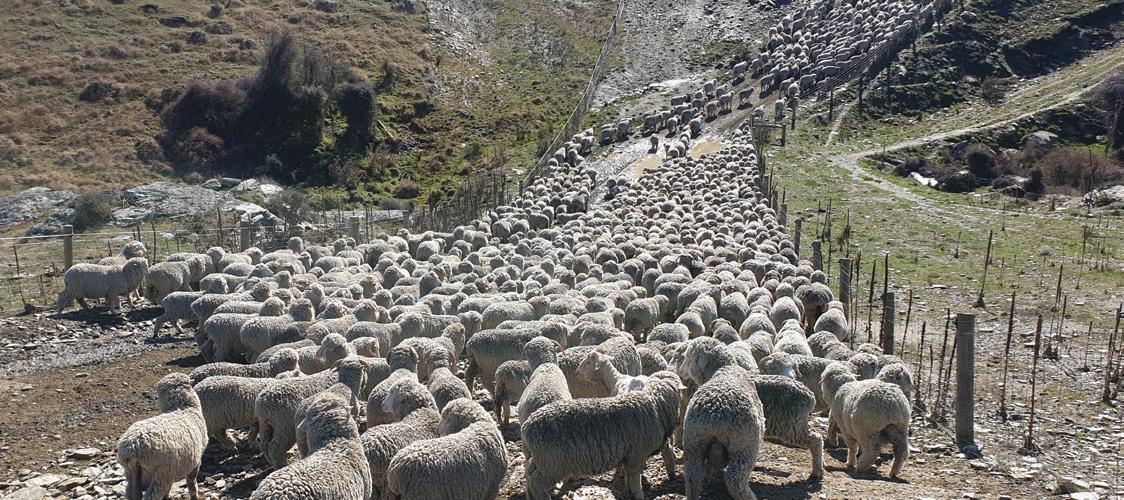

“Ewe losses are so much higher than the neighbour? and ewe condition is lower than it should be.”






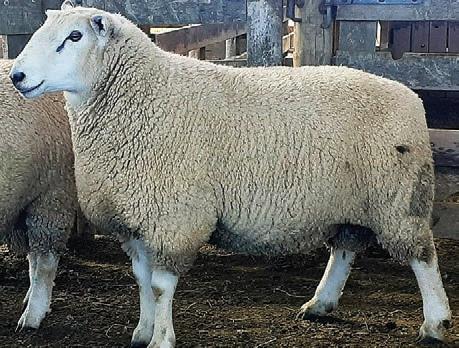

“I am feeding really well, why is the weaning weight not improving??”











“I only get a few clinical FE cases.... maybe there are more affected than I thought?”




Sound familiar?
Maybe it’s time to invest in FE Gold Rams If you want the best, buy the best





Stewart Morton 06 328 5772 • Andrew Morton 06 328 2856 RD 54 Kimbolton, Manawatu • pakiroms@farmside.co.nz
160+ clients last year purchased or leased Paki-iti rams
Bred on a 870ha hard hill country property rising up to 637m asl (2090f asl)
Breeding for constitution, structural soundness and then performance
Facial Eczema tolerant flock
testing at 0.4mg/kg
•
•
•
•
successfully
meat
Romtex offers
weaning
weighting (SIL analysis of 2022 born ram lambs) • Romtex rams sold as 22th rams Visit paki-iti.co.nz to view our breeding programs LK0116786©
ROMNEY ROMTEX - MATERNAL+GROWTH
• Stabilized, fully recorded breeding program - better fertility, better structure, more
•
32% more growth at
and 34% more weight at autumn
PAKI-ITI
SUFTEX A NEW ERA IN TERMINAL RAMS GRUNT Fast growth, high meat yields, meat quality, excellent survival and tough hardy rams AND THE BREEDERS North to South PREMIER SUFTEX PremierSuftexNZ Raupuha Kelso Pahiwi Paki-iti Hemingford Taiko Downs Longdowns Nithdale Twin Farm Strathallan Run Mount Linton Crossiebeg King Country Hawkes Bay Hawkes Bay Manawatu Nth Canterbury Sth Canterbury Otago Gore Gore Wyndham Ohai Invercargill 07 877 8977 0800 453 576 06 855 4943 06 328 5772 03 315 8689 027 685 5702 027 976 0928 027 418 3423 03 208 5904 027 201 7312 021 271 1106 027 230 4052 PERFORMANCE LK0116793© 1800 1600 1400 1200 1000 800 600 400 200 0 1800 1600 1400 1200 1000 800 600 400 200 0 CENT S 1995 1997 1999 2001 2003 2005 2007 20092011 2013 2015 2017 2019 2021 TS Flks Avg Rpt Flks Avg NZ Standard Terminal Worth (NZTW)
PAKI-ITI ROMNEY PAKI-ITI ROMTEX
GENETICS you can TRUST A Financing Solution For Your Farm www.rdlfinance.co.nz Use pure genetics fr om a registered sheep breeder/member to gain a hybrid www.nzsheep.co.nz Brookland & Hillview Simmentals LK0116767© Bulls for sale by Private Treaty Herd established 1972 Inquiries and inspection always welcome Colin & Catherine Hutching Phone 06 374 1802 Karl & Louise Humphreys 06 374 1786 48 FARMERS WEEKLY – farmersweekly.co.nz – October 9, 2023 Livestock 48
www.fegold.co.nz
Livestock
SALE TALK
My best friend Kai used to always play the same joke on me when we were walking in the forest. He would suddenly freeze and start staring into the distance as if he saw something between the trees. He would never say a word, just sometimes he would give me a quick look as if to say, “Man, did you see that?” I usually stood next to him like an idiot, staring at the same spot, wondering if there was something wrong with my eyes. After a while, he’d look away and return to the trail without a word. I really should know better, labradors are easily distracted.
Here at Farmers Weekly we get some pretty funny contributions to our Sale Talk joke from you avid readers, and we’re keen to hear more!
If you’ve got a joke you want to share with the farming community (it must be something you’d share with your grandmother...) then email us at: saletalk@agrihq.co.nz with Sale Talk in the subject line and we’ll print it and credit it to you. Conditions apply

STOCK REQUIRED
SHEEP SIRE SOLUTIONS





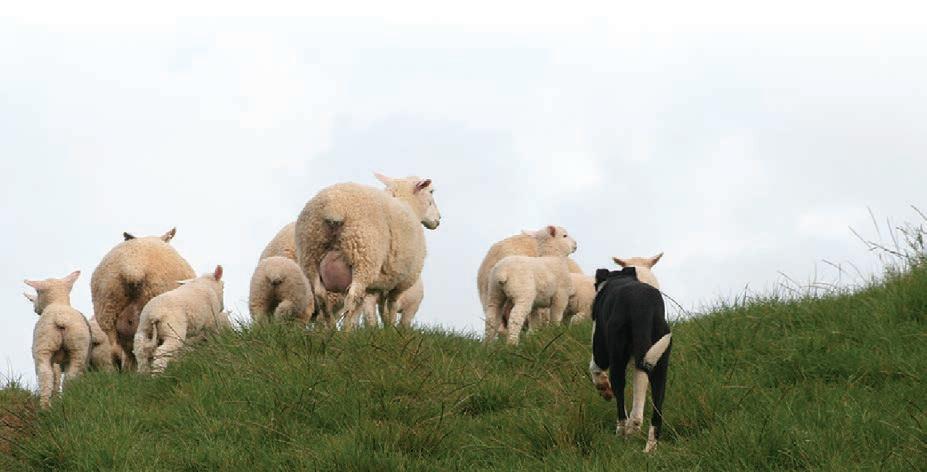

• Highly fertile, great survival
• Strong emphasis on structural soundness and uniformity


• All rams born higher than 1800ft asl
Only multiples born and reared on offer
Price includes an optional Startect drench and Zapp pour on at departure $270ea plus GST
Rams available from February 20th to March 15th
Friday 3 November 2023
Frankton Saleyards – 12.30pm


Tuesday 31 October 2023 122 Kokonga West Rd, Waikaretu Industry Leading Genetics for Performance and Health traits. The future of the sheep industry is dependent on robust efficient ewes - future proof your flock.
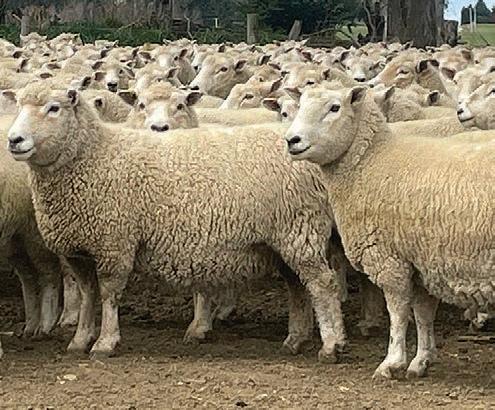




Tackle FE head on with NZ’s leading genetics.
Genetic selection for parasite resistance is a sustainable long term solution to worm challenges and drench resistance.
DPDCents
contact us
time for more information or to arrange a visit. Breeding MORE
for
“Home of the Beef + Lamb Genetics Low Input Progeny Test” Robert & Alex Peacock | 03 692 2893 | robert@orarigorge.co.nz Orari Gorge Station, RD 21, Geraldine, South Canterbury, New Zealand ORARI
GENETICS SIL Dual Purpose Dag Score Orari Gorge 4949 DP Flks Avg 2010 2020 Years -10 10 30 20 0 40 50 70 60
shepherds
SALE DATE
Please
any
PROFITABLE & MORE SUSTAINABLE sheep in the HILL COUNTRY
the HILL COUNTRY.
GORGE
Dags have been identified as a key cause of grumpy
and wasting time Orari Gorge Romney, RomTex actively select for FEWER DAGS AND GREATER RESISTANCE AND RESILIENCE TO WORMS.
OPEN DAY
100 x 200-250kg R1 Angus Steers Chris Kyle, Ph: 027 496 7412 60 x 400kg R2 Beef Steers 15-20 Beef Cows w/ calves at foot Harrison Levien, Ph: 027 496 7410 180-250kg Frs & Dairy Beef Bulls Sam Cowley, Ph: 021 263 2019 STOCK WANTED STOCK FOR SALE 100kg+ Spring Frs Weaner Bulls from 15th Oct Richard Seavill, Ph: 021 169 8276 280kg Charolais & Hereford Heifers Sam Cowley, Ph: 021 263 2019 Ph: 0800 827 455 Email: admin@byl.co.nz Website: www.byllivestock.co.nz "MAXIMISING YOUR RETURN THROUGH PERSONAL LIVESTOCK MANAGEMENT" 26th Annual NI Perendale Ram Sale 1pm Monday 18th November 2019 Te Kuiti Saleyards 70 Top Rams for sale by 9 North Island Breeders Rams all selected from top 20% of Vendors Flock New Venue Contact: Sale Secretary: Cam Heggie PGG Wrightson Philip Brandon Ph: 027 501 8182 Ph:07 873 6313 E: pa.brandon@farmside.co.nz Catalogue available online 12th Nov: www.perendalenz.com 30th Annual NI Perendale Ram Sale 12 Noon Monday 13th November 2023 Te Kuiti Saleyards 60 Top Rams for sale by 10 North Island Breeders Contact: Sale Secretary Philip Brandon 07 873 6313 e: pa.brandon@farmside.co.nz Cam Heggie, PGG Wrightson 027 501 8182 Catalogue available online 8th November www.perendalenz.com LK0116743© 49 FARMERS WEEKLY – farmersweekly.co.nz – October 9, 2023
49
bulls
to 380kg R2 bulls 380kg to 600kg R2 Steers 380kg to 550kg Service bulls R1 & R2 Larger lines of R1 & R2 store cattle SOUTH ISLAND WIDE Contact Colin 027 285 5780 LK0116726©
R1
200kg
RAM LAMBS FOR SALE
ROMDALE
Please contact Sam or Liz Barton on 027 242 4262 to enquire and/or confirm a booking – West Otago LK0116588©
Chillier reception for ewes with lambs
The current prices fetched by ewes and lambs-at-foot may be a bitter pill to swallow, but the market is trading where it normally would relative to schedules.

WHEN a class of stock comes around only once a year, the contrast between the seasons is obvious. We are amid the season for ewes with lambs-at-foot, September and October being the months of highest throughput, so it is a good opportunity to check in on the market for 2023.
By the end of September there had been 4200 ewes with 6200 lambs-at-foot sold in yards across the country. This puts the average lambing percentage in the pens at 149%, the highest in AgriHQ history, and is an indication of the higher fertility this year. This is compared to the 125% averaged in three of the previous four years. Looking into returns is a tricky business when trying to establish the strength of the market. As some would say, there are many layers to that onion, and it comes down to what the end use of the ewes and lambs is.
Typical purchasers are traders filling a gap until new season lambs start filing through the yards. It is also a good way to get a jump on the spring lamb trade or top up numbers following lambing.
In these situations, the potential return from the ewes and lambs is heavily influenced by mutton and lamb schedules and trying to guess where these might be
come weaning time. Some buyers budget on getting their money back for the ewe and making it on the lambs, while others are happy to lose a small amount on the ewe. If you were to peel the onion a different way you would find some buyers picking up replacement ewes with a proven record, and in this case the schedule math makes these good buying.
No contrast is greater than the 2022 and 2023 seasons. At the last Feilding sale of September 2022, good-condition ewes with docked terminal lambs-at-foot were making from $140 to $143 all counted. Hawke’s Bay is earlier lambing country and the midSeptember 2022 sale produced more significant numbers; ewes with undocked Suftex lambs at their hocks fetched $139-$148.
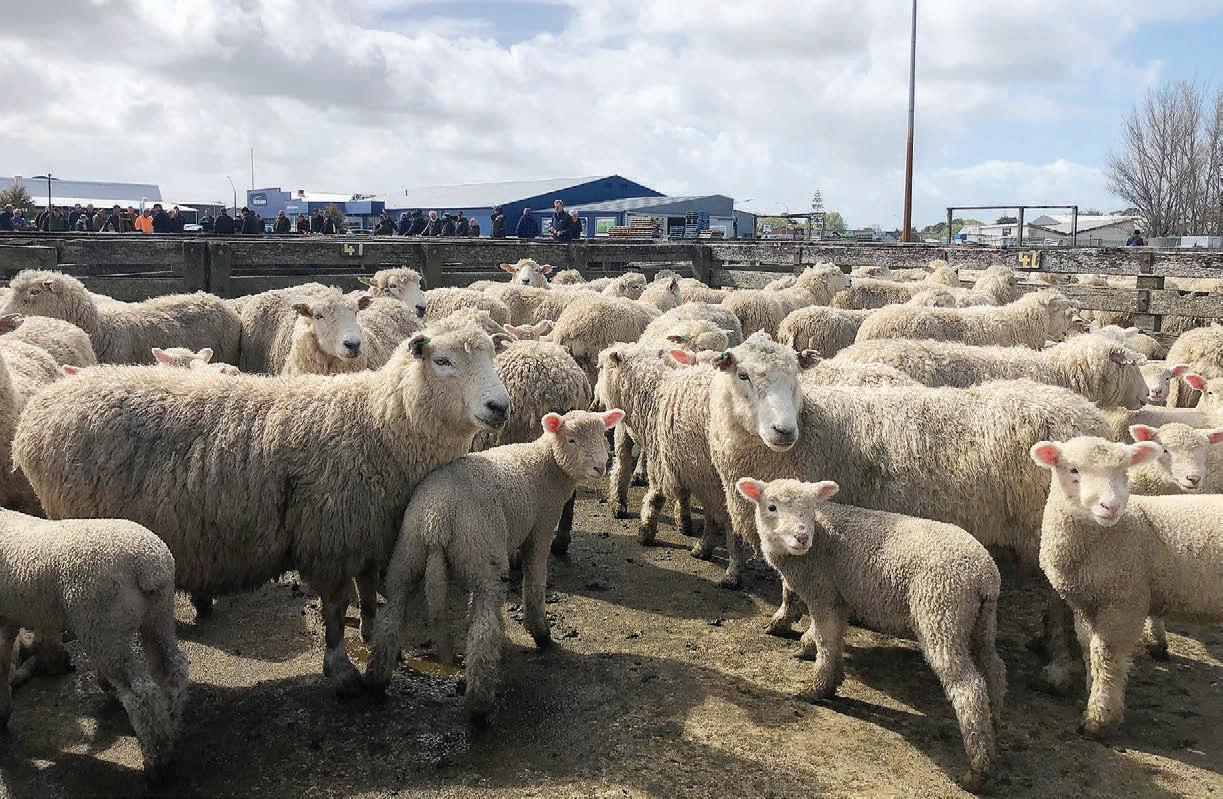
At this point, the outlook for schedules in the week ahead had mutton at $6.05-$6.10/kgCW depending on if you were in the North or South Island, and lamb was expected to average $9.55/ kgCW across the country.
Take a step forward in time and this year’s results for the same week show reasonable pens traded from $65 to $85. The main downwards driver lies in the $3.15-$3.25/kgCW mutton schedule and $7.00-$7.10/kgCW lamb schedule for next week.
Feed is always a factor too. There is no doubting the lower average return at Stortford Lodge and for this the finger has been pointed at talk of El Niño.
Maxwell said that “most of the ewes and lambs sold through Stortford were annual lines of five- and six-year ewes”, a common exit strategy as conditions dry out.
“There was a period where we had numerous frosts in a short space of time followed by 26degC days and the soil moisture was gone. The grass didn’t take off as usual and as a result, ewes were in lighter condition and lambs not as big.
“There were also a lot of woolly ewes penned and those that had been shorn were done with lambsat-foot, so their condition hadn’t picked up yet.”
On the odd occasion where the stars aligned in ewe and lamb quality, returns did pop over $80
all counted but the bulk sold were in the $60-$70 range.
Figures coming out of the South Island suggest the market was significantly stronger in that neck of the woods. PGG Wrightson Southland agent Andrew Martin put the initial strength down to older docked lambs and ewes with good mouths.
This was certainly the case for $90 returns, but Martin said the bulk traded earned $75-$83 all counted.
“Better end pricing has been focused in the saleyards, whereas better paddock sales have often been in the late $70s rather than into the $80s. To help matters, the feed situation is good here and there are limited trade options in Southland apart from a few cattle.
There is no doubting the lower average return at Stortford Lodge and for this the finger has been pointed at talk of El Niño.
Some buyers are willing to pay extra just to get the stock to keep things tidy.”
While it is a hard pill to swallow when your ewes and lambs only make $79 compared to $140 last year, the market is trading where it normally would relative to schedules. Feed abundance has caused some variation between islands both in the condition of stock and demand, but this is limited to a handful of dollars.
50 Markets
Redshaw Livestock agent Will
Markets Proudly sponsored by
STRONGER SALE: This line of 28 ewes and 79 lambs sold for $79 all counted at Feilding recently. At that level, the mob sold on a stronger market relative to the previous two weeks.
REPORTS INSIGHT LIVESTOCK Subscribe from only $35* per month agrihq.co.nz/livestock-reports Make decisionsyour easier Understand your opportunities and barriers with this weekly snapshot of store and slaughter prices, and international market trends. * Prices are GST exclusive
Fiona Quarrie MARKETS Sheep
Weekly saleyards
The first new season lambs appeared at the yards this week, without their mothers, and they made their appearance at the unlikely destination of Canterbury Park. Usually, the first decent offering of lambs would appear in North Island yards, but Canterbury Park bucked that trend and offered 180 Romney-South Suffolk mixed-sex lambs from Lakeside. They had been weaned that morning, and the top cut were heavy lambs, which sold for $150 while the second cut made $130.
51
Kaikohe | October 4 $/kg or $/hd 2-year Angus, Hereford-cross steers 2.86-3.04 2-year beef-cross heifers 2.60-3.00 Yearling Angus, Hereford-cross steers 3.22-3.39 Yearling beef-cross bulls 3.00 Yearling heifers 2.50-2.70 Wellsford | October 2 | 458 cattle $/kg or $/hd 2-year Hereford-Friesian steers, 413-565kg 3.20-3.26 2-year Hereford-Friesian heifers, 412-444kg 3.11-3.18 Yearling dairy-beef steers, 301-352kg 3.10-3.19 Yearling Angus-Friesian heifers, 249-263kg 3.12-3.14 Yearling Hereford-Friesian heifers, 232-296kg 3.00-3.07 Pukekohe | September 30 $/kg or $/hd Store steers 2.95-3.18 Yearling heifers 3.00-3.78 Aut-born weaner steers & heifers 420-665 Prime cows 1.91-2.62 Prime steers 3.10-3.21 Prime heifers 3.00-3.11 Mixed-age ewes & lambs, all 75-83 Store hoggets, all 82-108 Prime hoggets, all 125-178 Tuakau | September 28 | 820 cattle $/kg or $/hd 3-year Hereford-Friesian steers, 523-598kg 2.95-3.21 2-year dairy-beef steers, 470-490kg 3.32-3.45 2-year dairy-beef heifers, 366-410kg 3.01-3.20 Yearling dairy-beef heifers, 240-270kg 740-840 Weaner Hereford-Friesian steers, 146-163kg 700-780 Rangiuru | October 3 | 247 cattle, 70 sheep $/kg or $/hd Yearling Hereford-Friesian steers, 245-328kg 3.67-3.89 Yearling Hereford-Friesian heifers, 235-318kg 3.13-3.31 Prime dairy-beef steers, 583-713kg 3.15-3.30 Boner Friesian cows, 403-583kg 2.03-2.28 Store mixed-sex hoggets, all 56-113 Frankton | October 3 | 680 cattle $/kg or $/hd 2-year Hereford-Friesian heifers, 390-438kg 3.21-3.24 2-year Friesian bulls, 453-496kg 3.22-3.29 Yearling Angus-cross steers, 255-313kg 3.34-3.37 Yearling Hereford-Friesian steers, 315-255kg 3.20-3.41 Yearling Angus-Friesian heifers, 244-270kg 3.20-3.30 Yearling Hereford-Friesian heifers, 217-251kg 3.41-3.43 Aut-born weaner Friesian bulls, 122-171kg 3.89-3.92 Boner Friesian cows, 521-535kg 2.13-2.21 Boner Friesian-cross cows, 478-510kg 1.90-2.00 Boner dairy-beef cows, 456-501kg 2.22-2.30 Frankton | October 4 | 605 cattle $/kg or $/hd 2-year dairy-beef steers, 495-546kg 3.19-3.24 Yearling Angus-cross steers, 216-255kg 3.25-3.29 Yearling Hereford-Friesian steers, 260-319kg 3.54-3.62 Prime Hereford-Friesian steers, 511-609kg 3.23-3.29 Prime Hereford heifers, 443-506kg 3.28-3.30 Boner dairy-beef cows, 458-481kg 1.88-1.98 Matawhero | October 3 | 1210 cattle $/kg or $/hd Mixed-age Hereford cows & calves, one line, 596kg 1520 3-year traditional steers, one line, 532kg 3.18 2-year Angus steers, 424-490kg 3.15-3.16 2-year traditional, Charolais heifers, 374-410kg 2.94-2.95 Yearling traditional steers, 290kg average 3.35 Yearling Angus steers, 293-345kg 1080-1210 Yearling Charolais-Simmental steers, 368-372kg 3.98-4.02 Yearling traditional heifers, 230kg average 2.86 Yearling Charolais-Simmental heifers, 278-316kg 3.58-3.60 Taupo | September 28 | 594 cattle $/kg or $/hd 2-year Hereford-Friesian (red) steers, 428-474kg 3.20-3.36 2-year Friesian bulls, 365-410kg 1310-1465 Yearling traditional steers, 203-275kg 820-1110 Yearling Charolais-Friesian steers, 252-316kg 1110-1200 Yearling dairy-beef steers, 275kg average 3.96 Yearling traditional heifers, 216-238kg 775-890 Aut-born weaner dairy-beef steers, 107-163kg 570-645 Aut-born weaner dairy-beef heifers, 110-153kg 515-610 Taranaki | October 4 | 289 cattle $/kg or $/hd 2-year Angus-cross, dairy-beef steers, most, 389-446kg 3.14-3.29 2-year Hereford-Friesian steers, one line, 437kg 3.48 2-year beef, dairy-beef heifers, 394-487kg 2.82-3.04 Yearling Hereford-Friesian steers, 271kg 3.76 Yearling dairy-beef steers, 246-331kg 900-1130 Prime dairy-beef steers, 599-605kg 3.30-3.39 Boner dairy cows, 490-511kg 1.81-1.90 Stortford Lodge | October 2 | 1178 sheep $/kg or $/hd Prime ewes, very heavy 128-159 Prime ewes, very good 115 Prime ewes, medium to good 81-105 Prime male hoggets, heavy 142.50-151 Prime mixed-sex hoggets, heavy 135-143 FARMERS WEEKLY – farmersweekly.co.nz – October 9, 2023 Markets 51
Stortford
MONEY’S Rongotea | October 3 | 118 cattle $/kg or $/hd Yearling Hereford-Friesian heifers, 154-353kg 2.95-3.32 Aut-born weaner Friesian bulls, 72-134kg 3.76-3.81 Aut-born weaner Hereford-Friesian heifers, 103-135kg 270-540 Coalgate | September 28 | 678 cattle, 3465 sheep $/kg or $/hd Yearling Charolais-dairy steers, 289-334kg 3.36-3.51 Yearling Hereford-Friesian heifers, 247-292kg 3.04-3.23 Prime steers, 502-700kg 2.96-3.08 Prime heifers, 483-556kg 2.88-2.98 Store Corriedale-cross mixed-sex hoggets, heavy to very heavy 140-171 Store Halfbred wether and ewe hoggets, good 98-108 Prime ewes, very good 110-128 Prime hoggets, heavy 174-193 Canterbury Park | October 3 | 620 cattle, 2490 sheep $/kg or $/hd 2-year traditional, Angus-Friesian heifers, 349-409kg 2.66-2.78 Yearling Speckle Park-dairy steers, 267-315kg 3.05-3.17 Yearling traditional heifers, 233-283kg 2.94-3.17 Prime traditional steers, 495-645kg 3.15-3.24 Prime dairy-beef heifers, 450-485kg 2.83-3.02 Store mixed-sex hoggets, good 91-111 Store mixed-sex lambs, new season, good to heavy 130-150 Prime ewes, very good 104-129 Prime hoggets, good 138-157 Temuka | September 28 | 447 cattle $/kg or $/hd 2-year dairy-beef steers, 355-490kg 3.04-3.29 2-year dairy-beef heifers, 351-448kg 2.70-2.88 Yearling Hereford-Friesian steers, 214-260kg 3.13-3.35 Yearling dairy-beef heifers, 214-255kg 600-790 Temuka | October 2 | 702 cattle, 3189 sheep $/kg or $/hd Prime Hereford-Friesian (black) steers & heifers, 495-745kg 2.90-3.07 Boner Friesian, Friesian-cross cows, 410-506kg 1.94-2.04 Boner Friesian heifers, 460-486kg 2.50-2.77
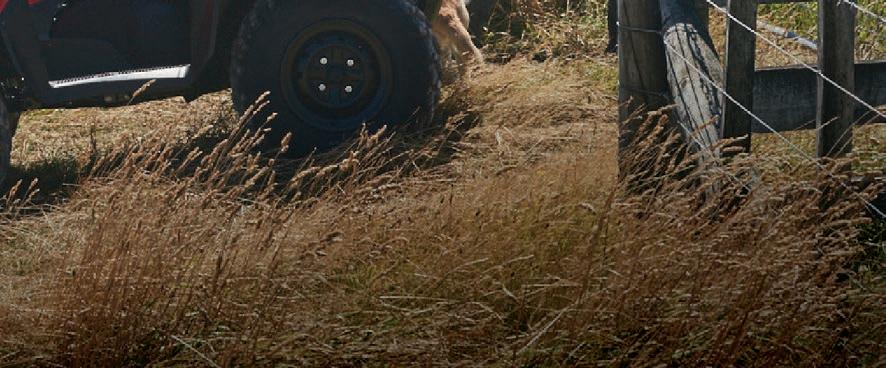

ON
TO IT. From only $5,309+GST upfront +12 months free servicing.*

T&Cs: The 12 month free service offer is available to the first 50 new LT-A500X/XP and LT-A750XP KingQuad models purchased from 1/9/23 – 31/10/23 and limited to three services within 12months (whichever occurs first) of purchase in accordance with the maintenance guidelines set by Suzuki NZ. Any repairs, unscheduled maintenance, and collection/delivery, or cleaning are not included. Finance offer is based on a 7.99% p.a. interest rate fixed over a 24 month loan term and on the following payments; an up-front deposit of one-third (1/3) of the RRP, the cost of any accessories fitted, and the fees set out below; a further payment of one-third (1/3) of the RRP to be paid on the 12 month loan anniversary; and; a final payment of one-third (1/3) of the RRP to be paid on the 24 month loan anniversary. The 7.99% p.a. interest is fixed for the term of the loan. A PPSR fee of $10.35, a monthly maintenance fee of $2, a UDC loan fee of $130 and a $300 dealer origination fee will apply. The loan is provided by UDC Finance Limited. UDC Finance Limited’s lending criteria, standard terms and conditions apply. This offer cannot be used in conjunction with any other discounts or offers, while stock lasts. TRACTA66025_KINGQUAD_SERVICING_FW
TIGHT. HANG
52
WEEKLY – farmersweekly.co.nz – October 9, 2023 Markets 52
With payments spread over 2 years, no servicing costs for 12 months plus a class-leading 3-year warranty, we’re helping you into a new KingQuad with as little initial outlay as possible. Hereford-Friesian steers, 500-706kg 3.06-3.16 2-year traditional steers, tops, 515-610kg 3.36-3.44 2-year traditional steers, second cuts, 470-536kg 3.18-3.31 Yearling Angus steers, 303-395kg 3.63-3.71 Yearling Angus steers, 271-295kg 3.72-3.85 Yearling Simmental-cross steers, 333-368kg 1050-1255 Yearling Angus heifers, 289-294kg 3.21-3.23 Yearling Hereford, Hereford-Angus heifers, 288-343kg 2.92-3.09 Mixed-age ewes & lambs, WF/BF, docked, older, medium to good 65-79 Store male hoggets, good to heavy 106-162 Store ewe hoggets, medium to heavy 95-110 Dannevirke | September 28 | 130 sheep $/kg or $/hd Store cryptorchid hoggets 80-116 Store mixed-sex hoggets 60-91 Prime ewes, all 61-75 Prime hoggets, all 129-146 Feilding | September 29 | 1143 cattle, 1838 sheep $/kg or $/hd 2-year traditional steers, 541-588kg 3.49-3.60 2-year Simmental-cross steers, 422-463kg 3.26-3.54 Yearling traditional steers, 230-344kg 3.65-3.89 Yearling Hereford-Friesian steers, 273-395kg 3.38-3.58 Yearling Friesian bulls, 272-293kg 3.33-3.42 Yearling Angus heifers, 241-333kg 780-1060 Yearling Hereford-Friesian heifers, 254-294kg 3.10-3.27 Mixed-age ewes & lambs, docked, medium-good to good 73-86 Store cryptorchid hoggets, shorn, good 107-120 Store ewe hoggets, shorn, good 101-118 Store ewe hoggets, medium 76-93 Feilding | October 2 | 144 cattle, 3289 sheep $/kg or $/hd Boner Friesian cows, 582-650kg 2.27-2.35 Boner Friesian cows, 519-520kg 2.16-2.20 Prime ewes, good 140-144 Prime ewes, medium to good 82-130 Prime male, mixed-sex hoggets, heavy to very heavy 135-180 Prime ewe hoggets, heavy 149-171
FARMERS
Lodge | October 4 | 821 cattle, 1035 sheep $/kg or $/hd 3-year
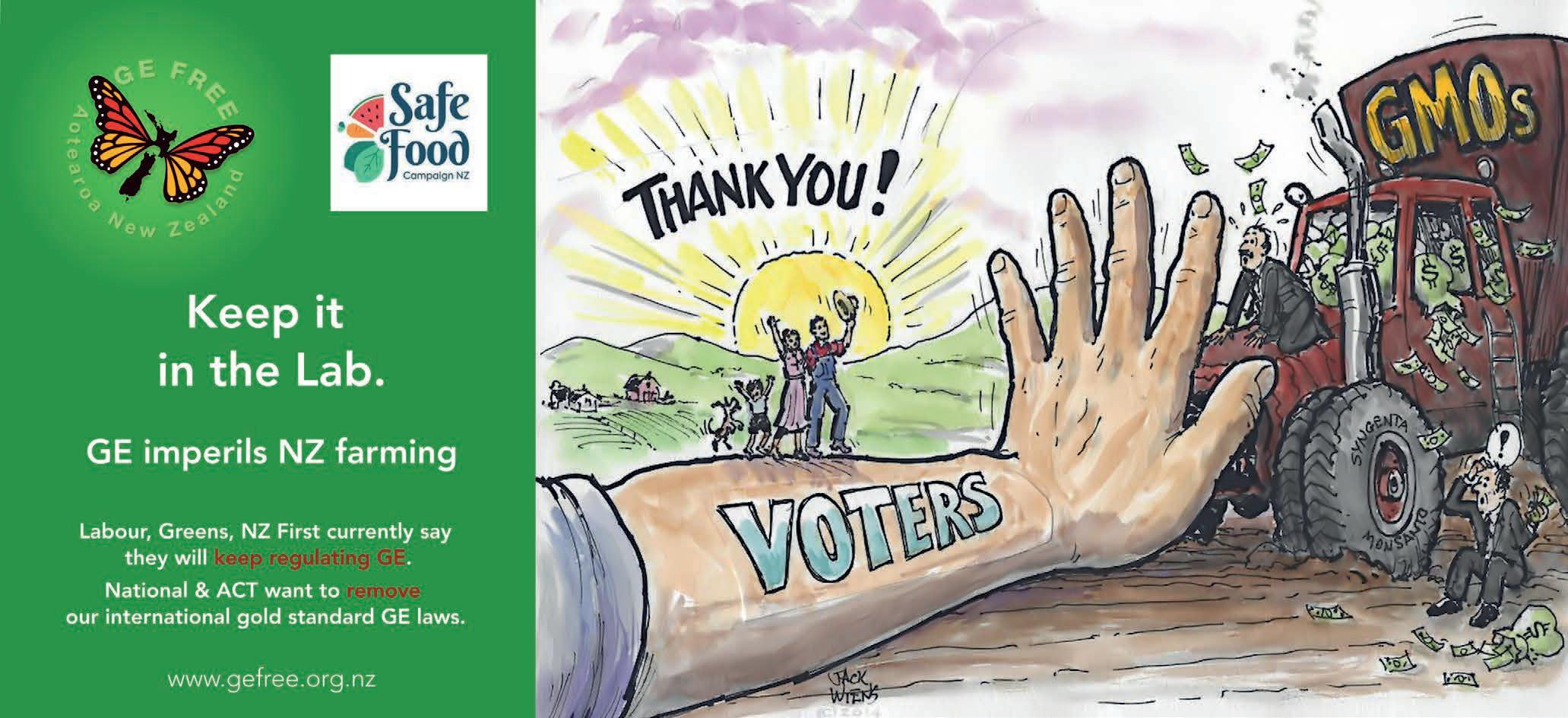
53 FARMERS WEEKLY – farmersweekly.co.nz – October 9, 2023 Markets 53 Mixed-age ewes & lambs, all 72-82 Store mixed-sex hoggets, heavy 104-147 Store finewool wether hoggets, heavy 108-159 Prime ewes, most 60-85 Prime mixed-sex hoggets, most 140-165 Opawa Downs | October 3 | 619 cattle $/kg or $/hd Yearling Angus-Simmental steers, 278-370kg 3.24-3.31 Yearling Simmental-beef steers, 282-409kg 930-1370 Yearling Simmental-beef bulls, 337-415kg 1190-1330 Yearling Simmental-beef heifers, 275-363kg 850-1190 Athlone Station | October 3 | 207 cattle $/kg or $/hd Yearling Angus, Angus-Hereford steers 1090-1250 Yearling Angus, Angus-Hereford heifers 900-1120 Palmerston | September 29 | 966 cattle $/kg or $/hd 2-year traditional steers, 403-475kg 1340-1515 2-year Hereford-Friesian steers, 310-420kg 920-1395 2-year traditional, Hereford-Friesian heifers, 394-481kg 3.06-3.22 Yearling Angus & Angus-Hereford steers, 208-229kg 3.80-3.84 Yearling Charolais-cross steers, 217-249kg 3.78-3.87 Yearling traditional heifers, 301-380kg 1000-1240 Yearling traditional heifers, 215-298kg 720-970 Yearling exotic-cross heifers, 185-297kg 570-1070 Balclutha | October 4 | 655 sheep $/kg or $/hd Store ewes, all 83-85 Store hoggets, all 50-85 Prime ewes, all 40-110 Prime hoggets, all 112-174 Charlton | September 28 | 224 sheep $/kg or $/hd Prime ewes, all 85-115 Prime hoggets, all 75-160 Lorneville | October 3 $/kg or $/hd 2-year beef-cross steers, 454kg 1320 Yearling bulls, 248-266kg 780-800 Aut-born weaner beef-cross heifers, 118kg 425 Prime cows, 480kg 2.00-2.10 Prime steers, 450kg 2.80-2.90 Boner dairy heifers, 380-420kg 1.80-2.00 Mixed-age ewes & lambs, all 82-90 Store hoggets, all 70-120 Prime ewes, all 20-128 Prime hoggets, all 115-168 Feeder Calves | September 28 - October 3 Tuakau | October 2 | 80 cattle $/kg or $/hd Hereford-Friesian (black) bulls, small to good 50-150 Friesian, dairy-beef bulls, medium to good 50-65 Hereford-Friesian (black) heifers, small to good 30-80 Paeroa | October 2 | 62 cattle $/kg or $/hd Hereford-Friesian (black) bulls, small to good 115-180 Dairy-beef heifers, medium to good 20-100 Frankton | October 3 | 233 cattle $/kg or $/hd Hereford-Friesian (black) bulls, small to good 100-205 Hereford-Friesian (red) bulls, small to good 30-85 Exotic-Friesian bulls, medium to good 100-190 Hereford-Friesian (black) heifers, small to good 40-170 Other dairy-beef heifers, medium to good 30-90 Te Awamutu | September 28 | 241 cattle $/kg or $/hd Friesian bulls, small to good 80-195 Dairy-beef bulls, small to good 60-165 Dairy-beef heifers, small to good 40-150 Manfeild Park | October 2 | 200 cattle $/kg or $/hd Beef-Friesian bulls, medium to good 70-140 Simmental-Friesian bulls, small to good 100-250 Dairy-beef heifers, medium to good 40-120
AgriHQ market trends
Cattle Sheep Deer Fertiliser Forestry
NOTE: Slaughter values are weighted average gross operating prices including premiums but excluding breed premiums for cattle.
54 FARMERS WEEKLY – farmersweekly.co.nz – October 9, 2023 Markets 54
Sheep Meat Slaughter price (NZ$/kgCW) Last week Last year North Island lamb (18kg) 7.10 9.60 North Island mutton (25kg) 3.25 6.15 South Island lamb (18kg) 7.00 9.60 South Island mutton (25kg) 3.15 6.05 Export markets (NZ$/kg) China lamb aps 10.09 14.03 Wool (NZ$/kg clean) 28-Sep Last year Crossbred eece 3.38 2.91 Crossbred second shear 3.00 2.45 Courtesy of www.fusca.co.nz Beef Slaughter price (NZ$/kgCW) Last week Last year North Island P2 steer (300kg) 6.15 6.85 North Island M2 bull (300kg) 6.05 6.50 North Island M cow (190kg) 4.00 4.90 South Island P2 steer (300kg) 5.75 6.55 South Island M2 bull (300kg) 5.55 6.25 South Island M cow (190kg) 4.00 5.00 Export markets (NZ$/kg) US imported 95CL bull 9.68 9.89 US domestic 90CL cow 11.28 9.93 Venison Slaughter price (NZ$/kgCW) Last week Last year North Island AP stag (60kg) 8.80 8.55 South Island AP stag (60kg) 8.75 8.65 Fertiliser NZ average (NZ$/tonne) Last week Last year DAP 1197 1794 Super 449 509 Urea 807 1340 Urea (Coated) 856 1389 Exports NZ Log Exports (tonnes) Aug Last year China 1,507,896 1,486,562 Rest of world 189,610 192,457 Carbon price (NZ$/tonne) Last week Last year NZU 65.5 82.5
Steer slaughter price ($/kgCW) Lamb slaughter price ($/kgCW) NZ lamb & mutton slaughter (thous. head) Stag Slaughter price ($/kgCW) NZ cattle slaughter (thous. head) Data provided by
Get ahead of the market Take advantage of New Zealand’s most trusted independent agricultural market data reporting and analysis, with a range of insightful agriculture and forestry reports. Subscribe from only $100 per month agrihq.co.nz/our-industry-reports 5.0 5.5 6.0 6.5 7.0 Sep Nov Jan Mar May Jul North Island South Island 6.0 7.0 8.0 9.0 10.0 Sep Nov Jan Mar May Jul North Island South Island 0 20 40 60 80 24-Jun 24-Jul 24-Aug 24-Sep 24-Oct 24-Nov 5-yr ave This year Last year 0 200 400 600 800 24-Jun 24-Jul 24-Aug 24-Sep 24-Oct 24-Nov 5-yr Ave This year Last year 7.5 8.0 8.5 9.0 9.5 Sep Nov Jan Mar May Jul North Island South Island
Dairy
Data provided by
Milk price futures ($/kgMS)
Grain


Canterbury feed wheat ($/tonne)
Close of market
Listed Agri shares

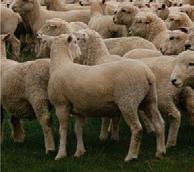




Futures (US$/t)
Canterbury feed barley ($/tonne)
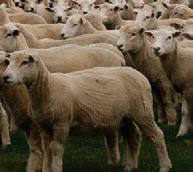
AMF 510051004580


Butter 495048004500
Milk Price 7.547.566.90


* price as at close of business on Wednesday


WMP futures - vs four weeks ago (US$/tonne)


Waikato palm kernel ($/tonne)


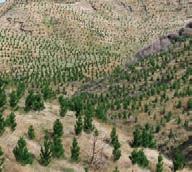

+64 6 323 6393 info@agrihq.co.nz agrihq.co.nz LOG PRICE REPORT MARCH 2022 EXPORT PRUNED A-GRADE P1 S1 PULP NZ$/JASM3 NZ$/JASM3 NZ$/TONNE NZ$/TONNE NZ$/TONNE 181 132 191 132 55.5 WHARFGATE LOG PRICES NZ$/JASm3 Weighted Average*, Delivered to Wharf Grade Export P A K KS KI KIS Pruning Pruned Unpruned Unpruned Unpruned Unpruned Unpruned SED (minimum) cm 40 30 40 22 20 - 26 26 10 Knot size (maximum) cm 0 10 15 15 15 25 No limit Length m 4.0 5.8 4.1 + 4.1 12.1 3.6 - 4.0 4.0 + 3.7 Northern North Island 183 134 126 124 116 115 124 122 115 111 125 123 116 113 116 115 107 102 123 121 113 105 118 117 109 103 124 122 115 111 -26% -26% -27% -29% -19% -19% -20% -21% -22% -23% -24%* Weightings are calculated on the volume of softwood logs traded through each port in the past 12 months, as indicated by available data. This month's report is weighted as follows; Port Weightings - +2 - - +0.5 Port(s) Regions Region Level Island Level National Level Marsden 33% 16% 13% Tauranga 67% 34% 27% Northern Nth Isl. - 51% 40% Gisborne/Napier 66% 33% 26% New Ply/Wellington 34% 17% 13% Southern Nth Isl. - 49% 39% North Island - - 80% Nelson/Picton 67% 43% 9% Lyttelton/Timaru 33% 21% 4% Northern Sth Isl. - 64% 13% P.Chalmers/Otago 61% 22% 5% Bluff 39% 14% 3% Southern Sth Isl. - 36% 7% South Island - - 20% +64 6 323 6393 info@agrihq.co.nz agrihq.co.nz LOG PRICE INDICATOR MARCH 2022 EXPORT PRUNED UNPRUNED PULP NZ$/TONNE NZ$/TONNE NZ$/TONNE NZ$/TONNE 117 184 119 56.0 105 110 115 120 125 Mar-17 Ten year NZ Combined Log Indicator ($/Tonne) 10 year average +1 - - +1 Log Indicator Trends FORESTRY MARKET REPORT ph S1 DOMESTIC LOGS (NZ$/TONNE) 132 A-GRADE EXPORT LOGS US$/JAS [CFR]) 150 SHIPPING – CHINA (US$/JAS) 47.2 CARBON (NZ$/NZU) 80.0 NZD:USD 0.672 FEBRUARY 2022 Omicron slows NZ production Wharfgate log prices firm Shipping starting to rise again Key Points VIEWPOINT -4 +14 -3.4 +4.7 +0.6C ...there's finally been a bit of life injected into log export markets. Reece Brick After a three-month price lull there's finally been a bit of life injected into log export markets. This largely comes from China getting back into the game after coming back from break, supported by mildly weaker shipping costs and the exchange rate. Reduced supplies out of NZ in recent months has been key for reengaging Chinese buying, particularly when other parts of the world aren't offering any more volumes than normal, usually noticeably less. Short-term we are unlikely to see much more upside than has already been reported. Shipping costs are starting to increase as of late-February due to a mixture of demand changes and increasing bunker costs partly brought on by the Russia-Ukraine situation. China wakes up Sara Hilhorst 12 mths ago 185 128 119 165 122 112 180 127 56 117 MARKET REPORT Warm weather good for lambing highlights On-farm condiitons slowly improving Processing space opening up gradually Risk of lambs cutting teeth starting to be considered Wet weather plays havoc again NZ LAMB SCHEDULE ($/KG) 9.35 NZ DOLLAR (US/$) 0.633 3.2 4.0 4.4 4.8 Oct Dec Feb Apr JunAug Oct North Island store lamb price ($/kgLW) 5-yr ave 2020-21 2021-22 Source: AgriHQ lights processing has passed while weeks away from returning to its normal lamb capacity. Although, with it looking like there are still many lambs to process before their teeth cut, the rush to get lambs in could cause the backlogs to drag on. The store market has improved in the North Island, mainly on shorn lambs with a longer window before teethcutting becomes an issue. Though prices are quiet variable, especially in the yards where up to $5/kg isn’t C d ti d h b t h b Mid-winter market s mellow VIEWPOINT 55 FARMERS WEEKLY – farmersweekly.co.nz – October 9, 2023 Markets 55 NZX market trends Company Close YTD HighYTD Low ArborGen Holdings Limited 0.1830.230.177 The a2 Milk Company Limited 4.57.834.43 Cannasouth Limited 0.1970.320.17 Comvita Limited 3.23.482.75 Delegat Group Limited 8.210.27.98 Fonterra Shareholders' Fund (NS) 2.993.882.95 Foley Wines Limited 1.221.421.18 Greenfern Industries Limited 0.0480.1130.044 Livestock Improvement Corporation Ltd (NS) 1 1.250.99 Marlborough Wine Estates Group Limited 0.180.190.15 NZ King Salmon Investments Limited 0.2250.240.181 PGG Wrightson Limited 3.754.673.35 Rua Bioscience Limited 0.1050.220.094 Sanford Limited (NS) 3.914.393.8 Scales Corporation Limited 3.054.252.75 Seeka Limited 2.453.722.2 Synlait Milk Limited (NS) 1.43.651.16 T&G Global Limited 2.052.371.94 S&P/NZX Primary Sector Equity Index 103971287010210 S&P/NZX 50 Index 112351221211178 S&P/NZX 10 Index 113911241111313
WMP 290029702535 SMP 253025402380
Dairy
Nearest contract Last price* Prior week4 weeks prior
5pm, Wednesday
S&P/NZX 10 INDEX 11391 S&P/FW PRIMARY SECTOR EQUITY 10397 S&P/NZX 50 INDEX 11235 Mar-12Mar-13Mar-14Mar-15Mar-16Mar-17Mar-18Mar-19Mar-20Mar-21Mar-22 56 56 WEEK BEGINNING LAMB Key Points AUGUST 22, 2022 Warm weather good for lambing Short-term cattle in demand, calves poorer GDT keeps on falling WHOLE MILK POWDER VS. MONTH AGO (US$/TONNE) 3510 NZ P2 STEER ($/KG) 6.44 It’s been noticeably warmer than usual across the entire country. The east coast has had a welcome break from the wet weather and the sunshine with warm temperatures will be supporting lamb survival rates. Lambs on crops have taken a bit of a knock living in the mud and rain and they may be a few weeks away from picking up again. More processing space has opened up in the North Island as the peak of bobby calf MO HLY SHEEP BEEF KE POINTS JULY2022 US TE 95CL NZ SLAUGHTER TEE NA ORE NZ A E L B NZD:US 2.67 6.1 0 9.18 0.621 Cal and(relatively dercontroli the remain arisk butthere’ beennomajor Mid-winte llow Sentimen poorerfo exportsales Backlogsdevelopon lambs FMD theradarforAus/NZ 6.0 7.0 8.0 9.0 10.0 11.0 Sep Nov Jan MarMay Jul Sep Sep-2024 Sep-2025 400 450 500 550 600 650 700 Sep Nov Jan MarMay Jul Sep 400 450 500 550 600 650 700 Sep Nov Jan MarMay Jul Sep 0 500 1000 1500 2000 2500 3000 3500 Oct Nov Dec Jan Feb Mar Latest price 4 weeks ago 300 350 400 450 Sep Nov Jan MarMay Jul Sep
An outlook to put a spring in your step
 Philip Duncan NEWS Weather
Philip Duncan NEWS Weather




EVERY now and then I like to break away from the “lecturing forecaster” and tell people to just enjoy life. Forecasters – like radio announcers – are always telling you to be careful, slow down, watch your following distance, conserve water, be careful in the sun etcetera.

But right now, at this specific time of year, it’s a time to be positive and enjoy what we have in this great country.
At the start of last year the North Island was coming to the end of a five-year rainfall deficit. Water and fire restrictions were widespread. This spring the North Island is wet, with a great mixture of sunny and warm days. Pasture is taking off and water storage is at capacity for many.
In the South Island it is similar – there has been an abundance of rain, and now we’re getting the mix of warmer and sunnier days. It’s rare that I get to say this, but now’s the time to enjoy having water to use, now’s the time to
enjoy being out in the sunshine, now’s the time to feel positive because after the year we’ve all had, it’s great to say enjoy this healthy set-up. There have been exhaustive stories this year about El Niño, and more to come.
We all know the risks and we don’t need a weekly reminder of the possible pain. And that’s just it – “possible” pain.
Sometimes forecasters can get





BUY ANY OF THE BELOW DRENCHES AND GET 10% OFF YOUR NEXT PURCHASE









carried away with long-range forecasting. The science of predicting the weather months from now is the best we’ve got and is improving year after year, but it’s still not exact. New Zealand is on the edge of El Niño and La Niña weather patterns, which are measured at the equator, meaning wet weather like we’re seeing right now is quite normal. And yes, sure, if you’re a betting person you may put money on summer being much
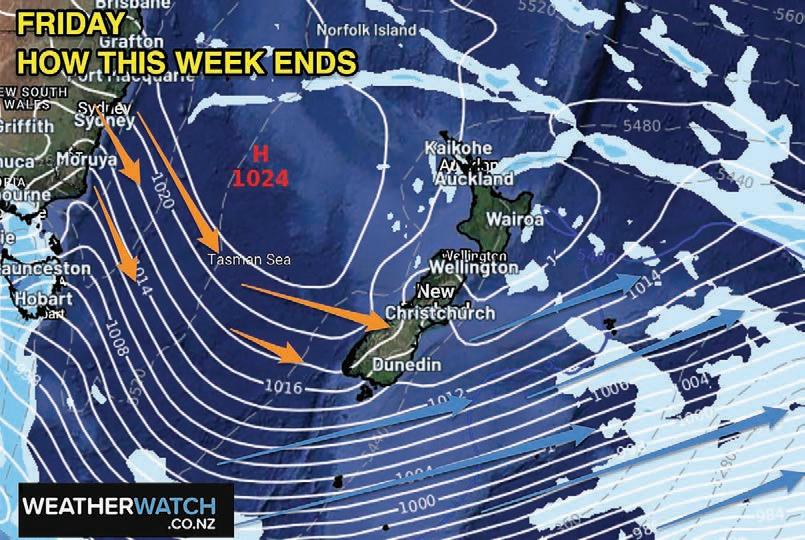
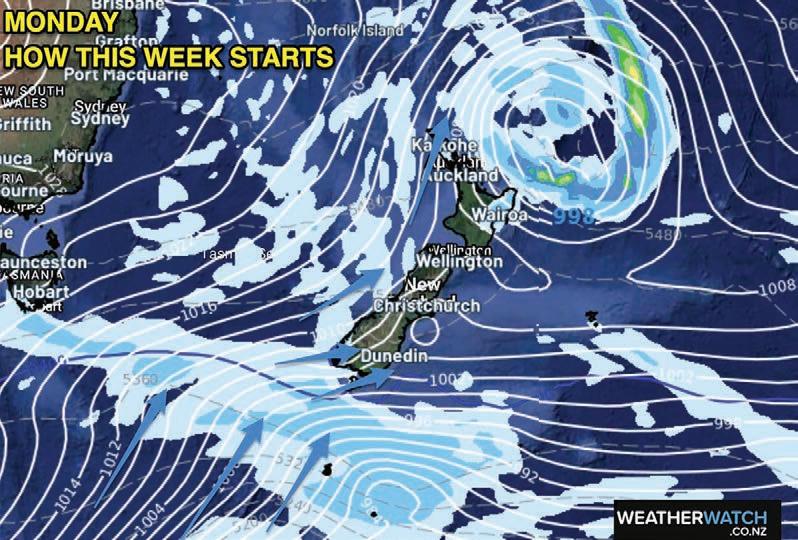
drier than usual, but for now, it’s spring, it’s positive – let’s absorb that.
Over the week or two ahead we still see more spring ups and downs. Certainly Australia is already experiencing a hotter spring than usual with over 100 bushfires burning last week before welcome heavy rain arrived.
But extra warmth lately in NZ along with extra moisture is a very positive recipe for pasture growth
– and also for us humans and our livestock and pets to all have a bit more of a spring in our step.
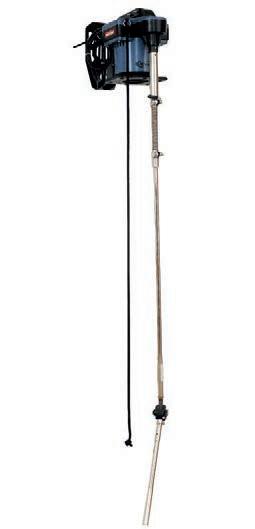
We don’t 100% know what summer may hold, and the data leans towards hotter and drier for inland and eastern regions, but right now, let’s just enjoy what we’ve got – and that’s a fairly healthy set-up nationwide for our farmers and growers (oh, except Southland this week – there’s a reason you’re bred tougher!).
FECPAKG2 Test Kits are a helpful tool to help monitor stock for parasite levels & unable farmers to make an informed evidence-based decision on how to best to manage parasites on their properties.

To assist in avoiding drench resistance, it is recommended to test before any drenching takes place, depending on the results this will determine if the animals need to be drenched or not. Then test again 10 to 14 days after drenching to see if the drench actives used were effective.



FECPAKG2 Test Kits can also test for facial eczema spores. Regular FECPAKG2 Test Kits testing will allow the Farmers to see when the rise in spore count hits a critical level. Allowing farmers to make an informed decision on when the best time is to start and finish zinc treatment of their stock.

Get your FECPAKG2 Test Kits from Farmlands today.














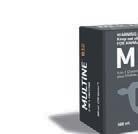

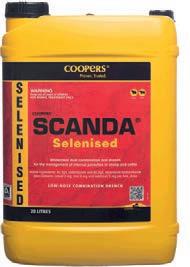

BUY ANY OF THE QUALIFYING COOPERS DRENCHES WITH ANY OF THE QUALIFYING MULTINE OR NILVAX VACCINES IN THE SAME TRANSACTION & RECEIVE A TOTAL OF 20% OFF YOUR DRENCH PURCHASE. ANIMAL HEALTH, TAILING & SHEARING HEINIGER OIL 5L $2,349.99 FARMLANDS BELT TIGHTENERS Check out more Belt Tightener deals here GEARUP FORSUMMER, FORLESS. [ ] 1. Scanda Plain 10L 1002583 A007130 / 2. Coopers Alliance 10L 1008285 | A010249 / 3. Scanda Selenised 20L 1006958 A007368 / 4. Coopers Alliance 5L 1008284 A010249 / 5. Coopers Alliance 1L 1018646 | A010249 / Scanda Selenised 10L 1000144 / 6. Heiniger EVO Shearing Plant Complete 300 Watt 1001964 Heiniger Oil 5L (1055326) / 7. Multine B12 500ml 1023404 | A011311 / 8. Multine B12 Selenised 500ml 1047069 | A011766 / 9. Vaccine Multine 5 In 1 250ml 1001594 | A000934 / 10. Vaccine Multine 5 In 1 500ml 1000798 | A000934 / 11. Vaccine Multine 5 In 1 Selenised 250ml 1001711 | A000935 / 12. Vaccine Multine 5 In 1 Selenised 500ml 1001922 | A000935 / 13. Vaccine Nilvax Selenised 500ml 1001689 | A003977 / 14. Electronic Docking Iron 001064072
1 2 3 4 5 14 6 7 8 9 10 11 12 13 NEW TO FARMLANDS $2,225
56 Weather ruralweather.co.nz
TOUGH: Low pressure moves away from the North Island as a cold, wintry, front approaches Southland.
WARMER: High pressure and warmer airflows from Australia return to New Zealand.





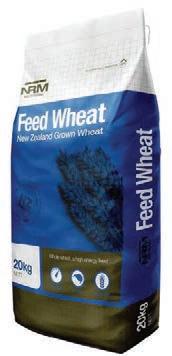






















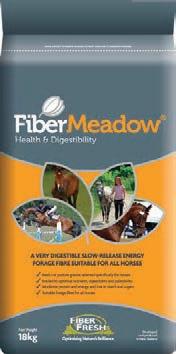
























1 GIFT WITH PURCHASE FOR TREAT ' EM FEED EM FARMLANDS SETTING UP SUMMER EVERYTHING TO FARM, GROW AND LIVE A RURAL LIFESTYLE! OCTOBER DEALS X Fence Netting 8 Line 90cm x 50cm x 100m $199.00 SAVE $76.95 1007273 Irripod End Line 25mm $109.99 SAVE $39.96 1006048 M18 Fuel 12 in Top Handle Chainsaw Kit 2 x 8.0Ah $1,299.99 SAVE $49.01 1063881 For even more deals head in-store or check out shop.farmlands.co.nz/trader. FAR_10989 *Terms and Conditions apply. Special prices and offers apply for the month of October 2023 while stocks last. Product range varies by store. Calgary Stampede qualifying purchase EVERYONE ' S WELCOME Nufarm Tribal Gold Herbicide 20L $600.00 SAVE $56.99 1017279 BUNDLE OFFER! BUNDLE OFFER! McMillan Cool Feed 25kg 1004926 *Offer valid for selected 200L Gulf drums, delivered direct to farm only. 2 FOR $48.00 REDEMPTION OFFER Feed-O-Matic Chook Feeder 12kg 1019935 NRM Peck n Lay Pellets 20kg 1023203 $149.99 Cydectin® Pour-On 15L 1001397 A006203 $1,798.00 SAVE $362.00 CHECK out MORE SPRING SEED DEALs inside Nufarm Bonza Gold 5L $91.95 1058410 *Selected products. Excludes already reduced items. BUY TOGETHER SAVE $52.95 M18 REDLITHIUM-ION HIGH OUTPUT 12.0Ah Battery with purchase *Via online redemption with purchase All the power of a petrol chainsaw without the headaches FREE* 20mm x 100m or 1000656 20mm x 200m 1001293 FROM $239.99 25mm x 100m 1000657 25mm x 200m 1001627 FROM $289.99 32mm x 100m 1000658 32mm x 200m 1001618 FROM $ 379.99 Alkathene Pipe Pope Soaker Hose Coil 15m $14.99 SAVE $13.96 1005872 Buy a 200L Gulf transmission oil or lubricant and get a hand pump FREE (valued at $100)* Gulf Supreme Duty ULE 15w40 200L $1,750.00 SAVE $159 1034731 Gulf Super Tractor Oil Universal 15W-40 200L $1,750.00 SAVE $81.95 1009671 Gulf Superfleet Supreme 15w40 200L $1,650.00 SAVE $149 1009673 Gulf Universal Tractor Transmission Fluid 80W 200L $1,750.00 SAVE $230 1011732 2 FOR $76.00 SUMMER’S COMING! NRM Feed Wheat 20kg 1023620 & 20% OFF SWANNDRI SUMMER CLOTHING* 2 FOR $60.00 BUY Nufarm Tribal Gold Herbicide 20L and GET 10% OFF Nufarm Bonza Gold 5L BEAT THE HEAT with these great irrigation deals Fiber Fresh FiberMeadow 18kg • 100% horse safe grass, low sugar and energy, easily digested fibre. 1054616









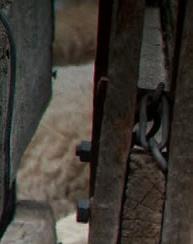









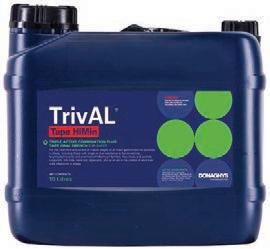

















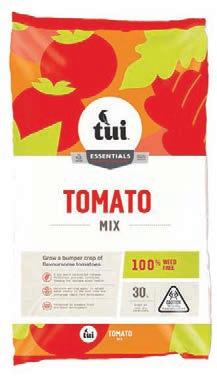

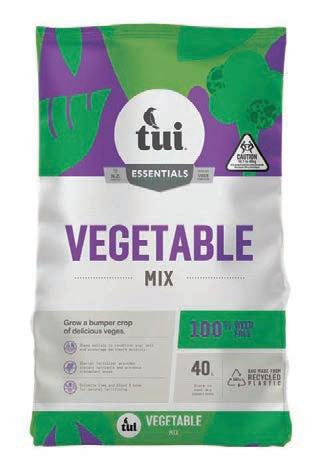























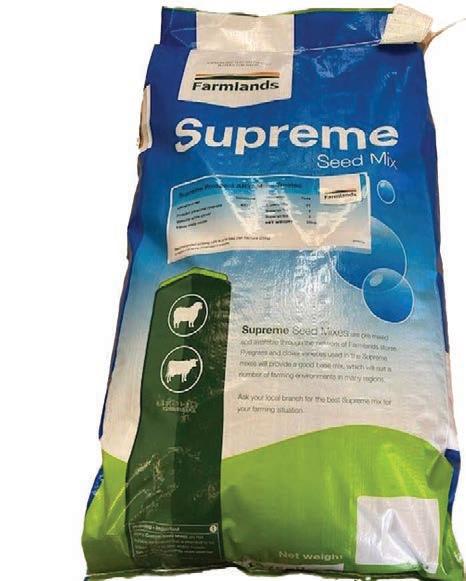


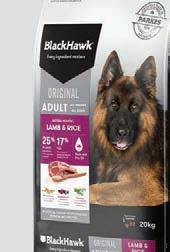












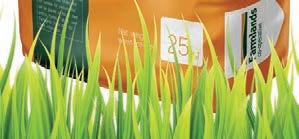




Head into your nearest Farmlands to see the Donaghy's range. Single active liquid dip for sheep containing cyromazine. Ideal for lambs at docking/tailing. • Provides up to 6 weeks’ protection against flystrike. 20L 1019683 | A009952 10L 1019682 A009952 Donaghys StrikeOut Spray-On BUY 40L & GET A FREE DRAW TUBE PACK. $148.00 $278.00 10L 1047252 | A011205 Donaghys TrivAL Tape HiMin Using a triple active drench product prolongs the effectiveness of all drench families. • Ideal drench for young lambs around weaning. $ 498.00 10L 1047226 | A011744 Donaghys TwinAL Tape HiMin Double active sheep oral with a short 14 day meat withhold. Ideal drench for young lambs around weaning. $398.00 more planning Spring planting and Farmtrade Trunk Buddy Steel Shovel with D Handle 77cm $16.80 SAVE $7.70 1019215 Farmtrade Axe with Fibreglass Handle 4lb $48.99 SAVE $22.51 1019203 Farmtrade Splitter with Fibreglass Handle 6lb $52.50 SAVE $20.00 1019205 Tui Tomato Mix 30L $15.95 ea 1009003 Tui Vegetable Mix 40L $13.50 SAVE $2.45 1009004 Calgary Stampede qualifying purchase BUY 2 Tui Tomato Mix 30L and get a Tui Tomato Food 1.5kg FREE NEW every day low pricing on Black Hawk 20kg dog food. Now $186.89. Always. North island, select stores only, subject to availability, while stocks last GIFT WITH PURCHASE Supreme Platform AR37 Superstrike Mix 25kg 1030740 Supreme One50 AR37 Superstrike Mix 25kg 1016410 Farmlands Maxsyn NEA4 Elite Mix AC 25kg 1049586 $432.00 JUST LANDED! CropMaster 360SL 20L $151.80 1060512 Introducing our all new Farmlands CropSure value range! With 9 products (including 8 herbicides and 1 insecticide) you can now protect your pastures and crops for less with Cropsure. Visit your local Farmlands to find out more. While stocks last. Daves Humate Biogro 8kg or Turbo Garden Blend 8kg $18.99 SAVE $3.96 1033451 | 1033454


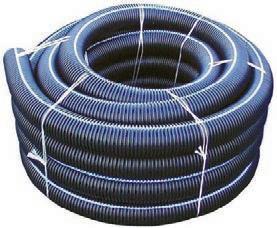










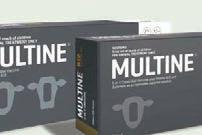
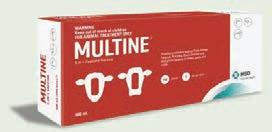


































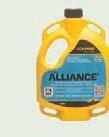
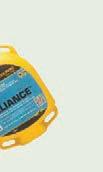







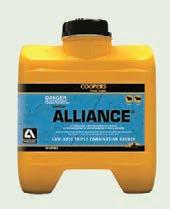
















SUMMER FARM ESSENTIALS BUY ANY OF THE BELOW DRENCHES AND GET 10% OFF YOUR NEXT PURCHASE GO ANOTHER NOTCH Gear up for summer for less with Farmlands. Check out more Belt Tightener deals here GEARUP FORSUMMER, FORLESS. [ ] 26% OFF 10 ANIMAL HEALTH, TAILING & SHEARING 1. Multine B12 500ml 1023404 | A011311 / 2. Multine B12 Selenised 500ml 1047069 | A011766 / 3. Vaccine Multine 5 In 1 250ml 1001594 | A000934 / 4. Vaccine Multine 5 In 1 500ml 1000798 A000934 / 5. Vaccine Multine 5 In 1 Selenised 250ml 1001711 | A000935 / 6 Vaccine Multine 5 In 1 Selenised 500ml 1001922 A000935 / 7. Vaccine Nilvax Selenised 500ml 1001689 A003977 / 8. Scanda Selenised 10L 1000144 | A007368 / 9. Scanda Plain 10L 1002583 A007130 / 10. Scanda Selenised 20L 1006958 | A007368 / 11. Coopers Alliance 10L 1008285 A010249 / 12. Coopers Alliance 5L 1008284 | A010249 / 13. Coopers Alliance 1L 1018646 | A010249 / 14. Heiniger EVO Shearing Plant Complete 300 Watt 1001964 Heiniger Oil 5L (1055326) / 15. Electronic Docking Iron 001064072 $304.00, save $75.99 1025164 / 27. Boonies Comfort Thong Mens $49.99, save $15.00 1039673 / 28. M18 Fuel 21in Self-Propelled Dual Battery Lawn Mower Tool Only $1,299.99 save $199.01 10061615 / 29. M18 Fuel Blower Tool Only $399.99, save $84.01 1060499 16. Iplex Farmtuff Culvert Pipe 250mm x 6m $249.99 Save $161.96 1009943 / 17. Iplex Farmtuff Culvert Pipe 315mm x 6m $499.99, Save $378.01 1005572 / 18. Iplex Farmtuff Culvert Pipe 400mm x 6m $799.99, Save $378.01 1009944 / 19. Iplex Farmtuff Culvert Pipe 500mm x 6m $1,399.99, Save $982.01 1005571 / 20. Iplex Nexusflo Pipe Punched 110mm x 100m $699.99, save $385.01 1001237 / 21. Iplex Nexusflo Pipe Punched 160mm x 45m $699.99, save $405.01 1014817 / 22. Iplex Nexusflo Pipe Punched 200mm x 29m $899.99, save $524.01 1014806 / 23. Irripod End Line 25mm $109.99 1006048 12 23 27 BUY ANY OF THE QUALIFYING COOPERS DRENCHES WITH ANY OF THE QUALIFYING MULTINE OR NILVAX VACCINES IN THE SAME TRANSACTION & RECEIVE A TOTAL OF 20% OFF YOUR DRENCH PURCHASE. $109.99 249.99 $699.99 $164.99 SAVE $15.00 .00 SAVE $63.00 .00 SAVE $75.99 $49.99 SAVE $15.00 Iplex Farmtuff Iplex Nexusflo Pipe Punched 20 22M18 REDLITHIUM-ION HIGH OUTPUT 8.0Ah Dual Bay Starter Pack with purchase *Via online redemption FROM FROM To see these deals and even more check out shop.farmlands.co.nz/trader or shop in-store now. *Terms and Conditions apply. Special prices and offers apply for the month of October 2023 while stocks last. Product range varies by store. EVERYONE Visit the Card Partner Directory to find out where to use your Farmlands Card. cardpartners.farmlands.co.nz Featured Offer CARD PARTNERS BELT TIGHTENER DEALS NEW TO FARMLANDS HEINIGER OIL 5L 1 2 3 24. Skellerup Quattro Light Gumboots Knee $164.99, save $15.00 1024800 / 25. Grisport Talia Boots Women $252.00, save $63.00 1024207 / 26. Grisport Kaweka Moss Boots 6 13 15 24 25 26 28 29 4 $2,225 $ .99 $399.99 SAVE $84.01 $252.00 $ $2,349 5 11 16 19REDEMPTION OFFER FREE* ' S WELCOME 1234 5678 9012 3456 AM CARD HOLDER 123456789 FIND OUT WHAT TREES CAN DO FOR YOUR FARM Get 7.5% off consulting services with your Farmlands Card
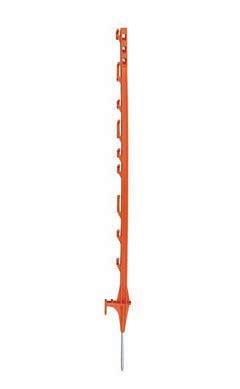


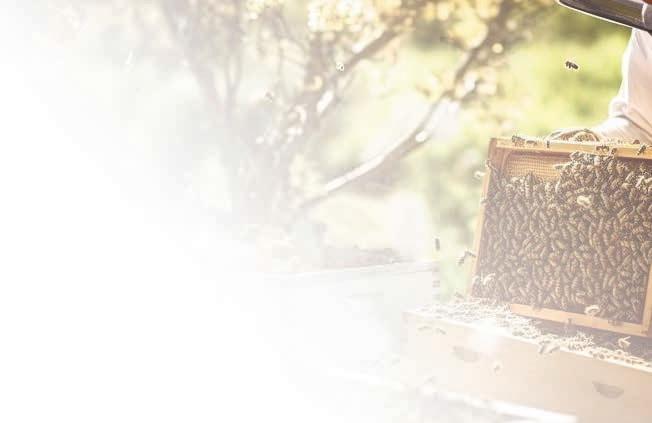











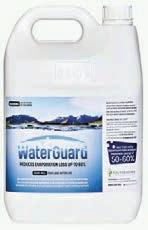










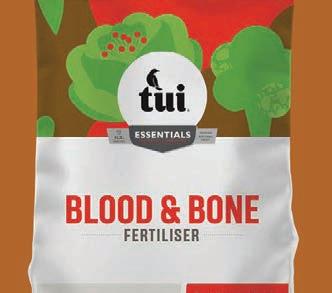









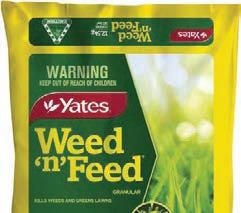





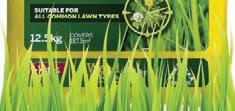
To see these deals and even more check out shop.farmlands.co.nz/trader or shop in-store now. *Terms and Conditions apply. Special prices and offers apply for the month of October 2023 while stocks last. Product range varies by store. RUNDOWN STOCK EBS Bee Suit With Hood Mens $179.00 SAVE $32.95 1024929 Promax Enduro Water Tank 5000L - Mist Green $2,034.05 SAVE $358.95 Available in selected branches and limited stock only 1037803 Status Home Clothes Airer NOW $37.50 1059271 WaterGuard 5L $134.80 SAVE $33.70 Available in selected branches and limited stock only 1051373 O’Briens Polywire 6 Stainless Steel Strands Orange 500m $42.00 SAVE $12.95 1007964 Gallagher Treadin Plastic Standard Orange $5.65 SAVE $1.85 1008667 Gallagher Fence Volt Indicator $65.00 SAVE $30.50 1000441 Hive Doctor Original Bottom Board Pest Checking Tray White $2.89 SAVE $1.10 1022022 Hive Doctor Assembled Hive Mat Gated Plastic Rim $14.99 SAVE $8.96 1033838 Hive Doctor Queen Excluder USA Plastic Rim $18.99 SAVE $11.51 1038881 Hive Doctor Assembled Hive Mat Plastic Rim $12.99 SAVE $6.51 1033836 Full Depth Plastic Foundation Wax Short 30g $2.89 SAVE $0.91 1022250 best in BEEKEEPING WaterGuard 20L $482.40 SAVE $120.60 Available in selected branches and limited stock only 1051374 WHEN IT’S GONE, IT’S GONE! Stock Rundown deals are available in selected stores only, while stocks last. HOUSEHOLD FENCING BUY 2 30% AND get off STONEY CREEK CLOTHING 50% OFF WATER MANAGEMENT Stoney Creek Thermoflex Jacket Stoney Creek Thermoflex Vest (available in Navy & Bayleaf) 1054697 | 1054698 1054699 1054700 Available in selected branches and limited stock only SAVE on selected beekeeping products Tui Blood & Bone 25kg $45.99 SAVE $10.96 1012486 Yates Weed ‘n’ Feed Granular 12.5kg $25.99 SAVE $11.96 1022169 LAWN AND GARDEN CARE




















 Richard Harman Politik
Richard Harman Politik



 Hugh Stringleman MARKETS Dairy
Hugh Stringleman MARKETS Dairy











































































































































































































































































































































































































































































































































































































































































































































































 Philip Duncan NEWS Weather
Philip Duncan NEWS Weather












































































































































































































































